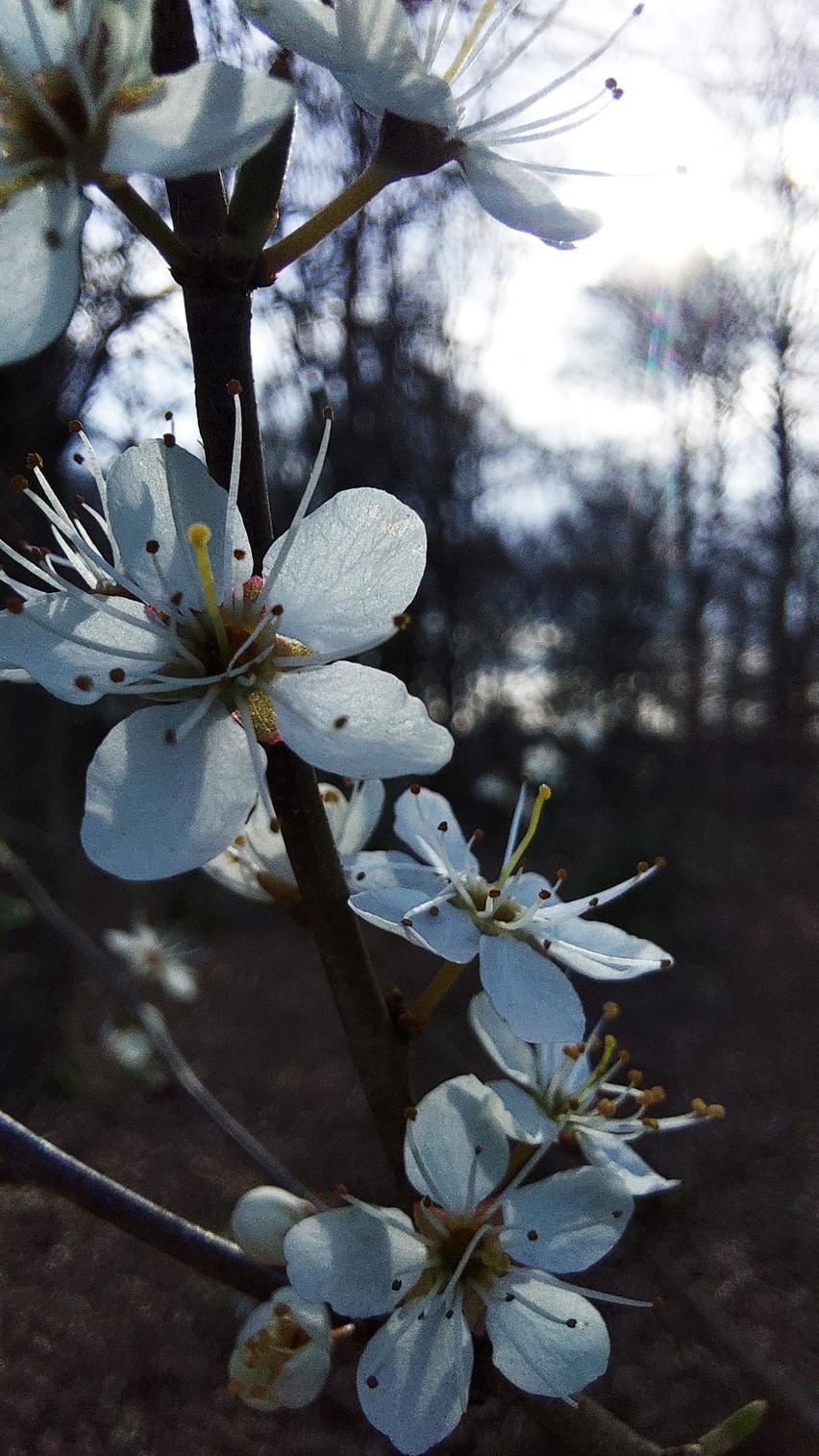








SECTIONS!

JOHN SERGEANT ANSWERS THE RANDOM 19
Ahead of his visit to The Exchange, the veteran broadcaster talked Thatcher, Strictly ... and some shocking biscuit
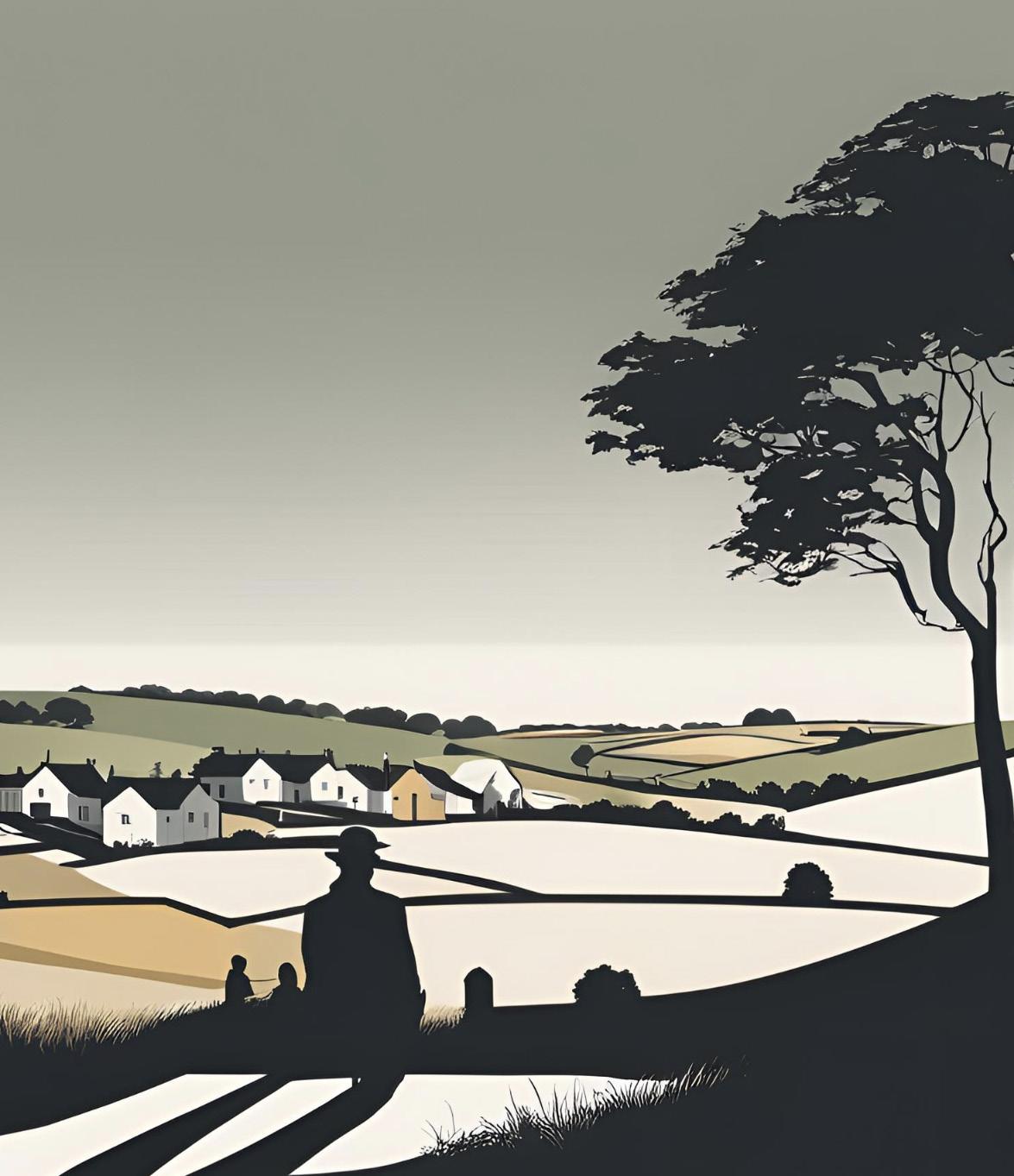
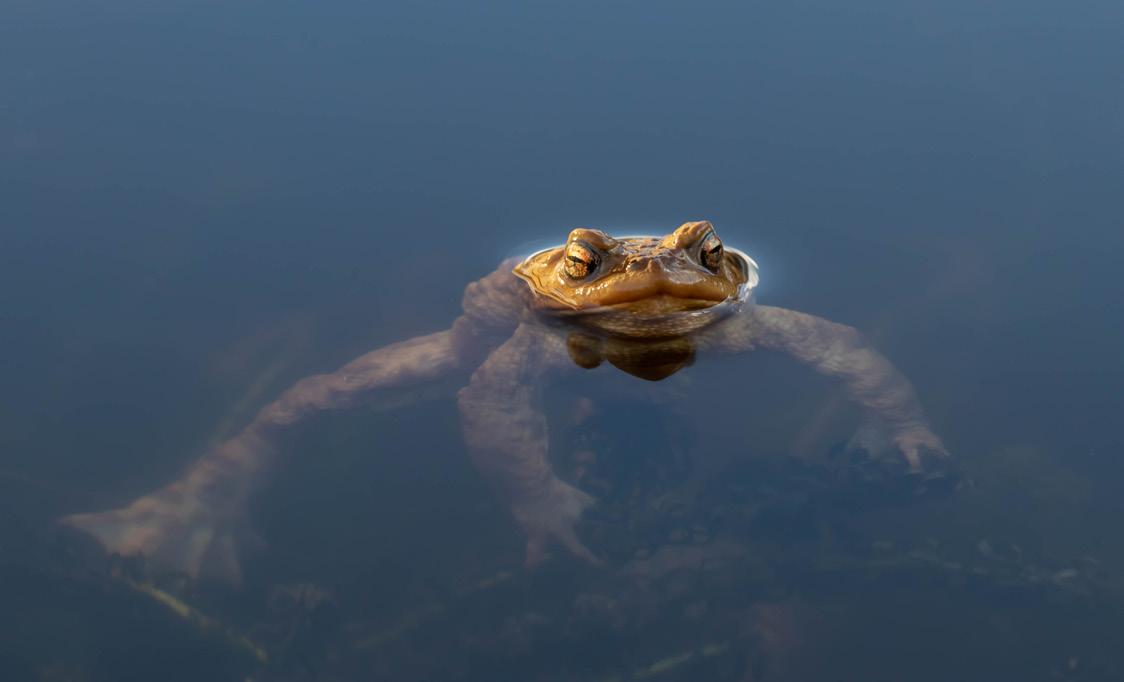
This month’s column from our mystery parish councillor is a barely-contained scathing lowdown on this week’s council meeting regarding the new 3,000-homes-a-year target.
Contact
Editor:

JOE TIZZARD ON CUE CARD, THE GOLD CUP AND SIMPLY DRINKING IT IN Ahead of the Cheltenham Festival next week, editor Laura spoke to the ultimate insider Joe Tizzard

94
LOCAL HISTORY It seemed fitting for International Women’s Day to look at the life of Hilda ‘Mick’ Coles, the indomitable woman who founded the Museum of East Dorset
Peter Wiltshire learned the art of hand bookbinding from his father. Now, he’s restoring literary treasures in his own Dorset workshop

If you spotted a sudden flood of turquoise newspaper covers this month, don’t panic –it’s not an optician’s test, and you haven’t accidentally joined a cult. Publishers across the country have united behind the Make It Fair campaign, a rather polite way of saying: “Listen, AI, if you’re going to feast on our work, at least buy us dinner first.” The issue isn’t the technology itself – it’s making sure that the writers, artists and creatives whose work feeds AI models are credited, valued and (radical thought) actually paid. Because AI is just a tool. Ignoring it now would be like refusing to learn about the internet in the 90s – pointless, short-sighted and vaguely reminiscent of that one uncle who still insists email is ‘newfangled’ (it’s been THIRTY YEARS Uncle Ron). But like any tool, it needs to be used responsibly. The real debate isn’t about what AI can do (which, let’s face it, is increasingly impressive), but what it should do – and how we,
In a remarkable interview, Rachael Rowe spoke to Eddy in Kyiv about his road to recovery –and how he’d do it all again
It’s all here – the news snippets, the letters, the what’s ons, the politics and the puzzles
78
Just too many stunning owls to pick between – so we let them have one each. Still needed an extra page.
as the actual humans, set the limits. Which brings me to this month’s issue –proudly powered by real, breathing people. The stunning photos of a healing Eddy Scott in Ukraine? Sent over by Fermín Torrano after we chatted on Instagram. Karen at Folde rescued me with a picture too. And Dave, the Museum of East Dorset volunteer who, with heroic last-minute efficiency, dug through the archives to find the exact image? I still owe him biscuits. Desperate Kate – still without a landline – has been at the mercy of an everrotating cast of BT customer support staff, all valiantly attempting to reconnect her to civilisation. Rachael’s interviews with air ambulance patients, Carole Jones finding time in launch week for a private tour of the new Vale Family Hub ... this issue exists because people took the time to share, help and connect. Humans are what make us us. But that doesn’t mean I don’t have a pet name for my ChatGPT bot (Brian). Or that it isn’t a lifesaver when the sub eds are on holiday and I can’t remember the rules on capitalising plant names.

by Rachael Rowe
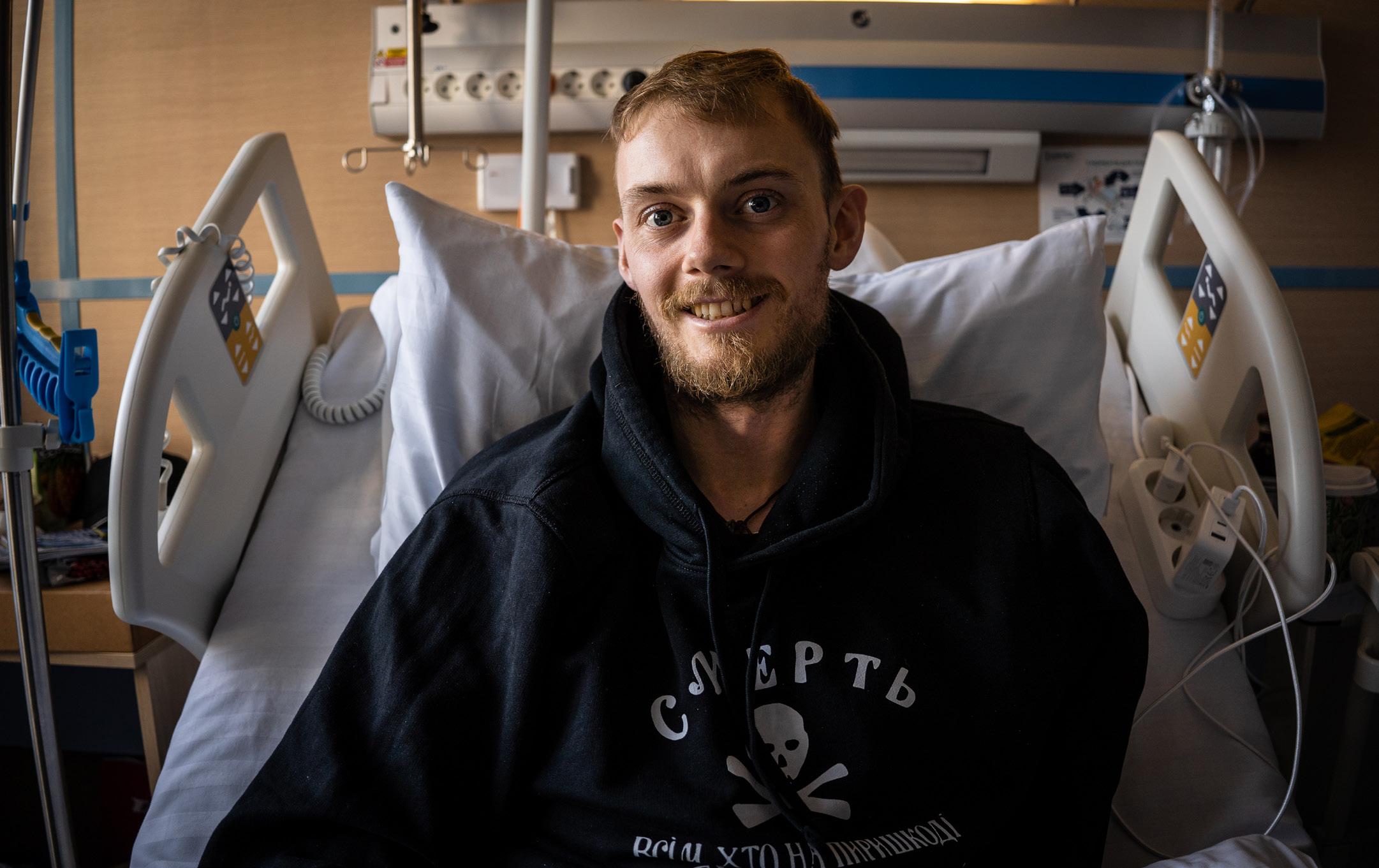
While delivering humanitarian aid in Ukraine, Eddy Scott from Shaftesbury suffered major injuries during a drone attack
‘It’s the people that make this country. They are so kind, so helpful.’
Last month The BV brought you the story of Eddy Scott, the Dorset humanitarian aid worker who was injured during a Russian drone strike in Ukraine. On the eve of the third anniversary of the conflict, Eddy spoke to Rachael Rowe from his hospital bed in Kyiv about his ongoing care, the future... and his thoughts on Donald Trump...
Eddy is just three weeks into his recovery programme, but already has plans for the future. His left arm and left leg had to be amputated after a drone struck his vehicle as he was evacuating civilians from a shelled area. His life was saved by a colleague: ‘Considering I got blown up a few weeks ago I’m doing pretty well. I’m very positive, recovery is going well and I’m being looked after fantastically.
‘I’m staying here for a few more weeks and then the plan is to head west to Lviv. I’m going to Superhumans, a well-renowned centre – it’s not been confirmed yet but it’s the most likely. I can start my rehab and get my prosthetic leg.’ Superhumans Center in Lviv is a specialist orthopaedic hospital for adults and children from war zones who need treatment and
rehabilitation for amputations and require prosthetics. As a consequence of the war with Russia, Ukraine currently has more than 50,000 people living with an amputation.
‘I’ve been sailing luxury yachts for the best part of ten years but there wasn’t much in terms of giving back. When the war with Ukraine started I was in the position where I had the skills to be able to help out. I felt I needed to do something more and everything lined up at the right time. After speaking with various people in the humanitarian world I realised it was something I could do. I didn’t have any experience of the work but I had transferable skills. ‘Initially I was only planning on staying for three months, helping out and then go back to sea. Now, I live in Ukraine. I have been given veteran status by the Ukrainian government, which means I can get a fairly easy path to residency, which is what I want. I’m being looked after by the Ukrainian government
As a consequence of the war with Russia, Ukraine currently has more than 50,000 people living with an amputation
so it makes sense to stay here.
‘Right from the start I met the most incredible people. They are so kind, so generous. There have been times when I’ve broken down by the side of the road in the middle of nowhere: immediately locals are offering to fix the car, giving me lunch ... they are really kind people. It’s the people that really make this country.
‘And the country itself is beautiful. I had a very western view of Ukraine before I came here – it was an ex-Soviet country, so it must be grey, wet and miserable. And then I got here and realised the country isn’t like that at all! The scenery is stunning, there’s an incredible history and wonderful culture.’
At present, Eddy is being treated for an infection – common with war zone trauma. Once that is resolved, surgeons will close the wounds and form the stumps. When the wounds have healed, Eddy will be able to go on to the rehabilitation programme at Superhumans.
‘They will work on building my strength up. It’s called pre-hab, and it makes sure my body is ready for the prosthetics. I’ll get my leg sorted first so I can get walking. That’s two months in rehab getting my confidence walking. The arm they will sort at a later date as it’s more
complicated. Then my future plans ... well, there’s so much I want to do.
‘I want to see more of the country, that’s something I never had the chance to do. Also I want to take my experience forward to help other people, helping Ukrainians themselves but also to share what I feel is the truth about Ukraine.’
I had a very western view of Ukraine before I came here – it was an ex-Soviet country, so it must be grey, wet and miserable. And then I got here ...
When I spoke to Eddy, most of Europe and the wider world was astonished to hear Donald Trump’s speech on the ‘dictator’ president, Zelensky and to see negotiations begin – without the Ukrainians at the table.
A couple of days later, The president and vice president had the now-famous showdown of a press call with President Zelensky in the Oval Office. Eddy had also seen the broadcasts: he write on Instagram: “Don’t ever tell us we aren’t grateful. Every time I met the lads coming off a mission and the M113 pulled up I was grateful.

Every time I watched Patriots battle missiles and drones over Kyiv I was grateful. Every time I saw a USAID food distribution point I was grateful. Why should I be grateful now?”
‘It’s straight up insulting,’ he told The BV. ‘What Trump has been saying about Ukraine shows a basic lack of understanding. Putin started this war. And it hasn’t been going on for three years, it started 11 years ago in 2014 with Maidan and the annexation of Crimea and Donbas.
‘The fact that Trump doesn’t see this, or maybe just chooses to ignore it ... It’s insulting and yet it isn’t surprising. I was very aware of who Trump was before he won the election. He has never been a friend of Ukraine. I think it’s the speed at which he has turned on us, it’s the speed at which it has happened that is the shock. Already, we are just being abandoned. It’s scary thinking about where Ukraine will be in two, three, six months time because of Trump.’
Feeling so lucky
Eddy’s injuries were caused by a drone strike on the vehicle he was driving. Russian drone strikes on civilians are increasing in Ukraine and have been happening for some time.
‘Drone pilots will just fly over cities deliberately targeting civilians. The day before I was targeted, a civilian was hit in the city we were in. He had gone out on errands in a white Lada with signs on the front and back and a white rag tied to it, which is a clear civilian marker. They targeted him with a drone and it went through the roof, seriously injuring him. He was taken to hospital and his wife had no idea what had happened. He just didn’t come home. So one of our jobs that day was to find the wife and evacuate her to the hospital. With the FPV drones you can see right up until the last second who they are targeting.’
Eddy remains remarkably upbeat:
‘I’m surrounded by friends and by the most incredible people. I’m lucky to have that support network. The first two days after I was injured, maybe 35 people turned up. Then in the first week 100 people came to see me! Some of them were friends, and some had just heard my story and wanted to visit.
‘I’m very positive going forward. I have all these plans for the future. Beforehand, the work I was doing, living in Eastern Ukraine, you don’t really make plans for the future. You just live from day to day and don’t expect to survive too much longer. Now I have been given a future.
‘So I have all these plans that I never had before. To continue helping Ukraine in different ways and to find out how to own a property here. And

just live and exist, and enjoy this country more. I have a future which I’m really excited about. ‘ If Eddy could magically turn the clock back, knowing what has happened, would he have still gone to Ukraine?
‘Yes. Absolutely. It’s a massive life change. Even getting blown up and with everything that’s happened it has been one of the most positive experiences. It has given me a purpose. I have a Ukrainian god daughter here. My best mate asked me to be his daughter’s godfather last summer – it is a massive honour, and it was at that point I knew this was the place I wanted to be. I have had so many positive experiences here, I cannot imagine my life without this.
‘Don’t get me wrong. I miss my left arm and left leg. But with everything Ukraine is giving me, it’s a small price to pay for the freedom of the country. And getting to enjoy that freedom.’
• If you would like to contribute to Eddy’s Recovery GoFundMe, you can find it here
https://bit.ly/EddysRecovery







by Laura Hitchcock
BT’s switch from analogue to digital
In January, 77-year-old Kate Nutbeam received a letter from BT informing her that her current phone and broadband contract was ending. As BT is the only option for a reliable broadband connection in her Wincanton street, she was happy to keep things exactly as they were, and agreed to the new contract that was suggested. What followed was a series of miscommunications and technical mishaps that left her household without a landline – and weeks later, there’s still no clear way to get it back.
The unexpected upgrade
After agreeing to the new contract, boxes of equipment arrived at her home. By the time the man from Openreach arrived on 14th February, her partner was critically unwell and receiving urgent medical care. The engineer explained that most of the existing equipment was incompatible with the new system and would need replacing: the telephone line entry to the house is in the bedroom where her partner was sleeping.
Both Kate and the engineer realised that Kate had not been advised of the sheer scale of the work that was needed. He said he would note that on his report and someone from BT would contact her again before

proceeding. He left, having done no work.
Five hours later, Kate received an email saying she had refused the job – 10 minutes later the landline went dead.
The UK telecoms industry is phasing out analogue phone networks, replacing them with digital Voice over Internet Protocol (VoIP) systems. By January 2027, all landline services will rely on an internet connection.
Kate received an email saying she had refused the job – ten minutes later, the landline went dead
In most cases, the transition is seamless – simply plugging a phone into a broadband router should be all that’s needed. But Kate had been caught mid-transition.
The engineer visit had been intended to switch her property to the digital system, and her analogue line had been scheduled for permanent switch off on the same day. The switch off was never cancelled, despite the new digital service not being activated, and it’s apparently a oneway switch. Without a landline, Kate, who has poor indoor mobile reception due to the thickness of her cottage walls, felt immediately vulnerable and exceedingly anxious. With her partner seriously ill, she had only the mobile with the dodgy signal to fall back on, and family overseas and friends trying to call and check on them on the landline.
A frustrating runaround Days passed, and multiple calls to BT yielded no solution. Kate’s account had been migrated to EE as part of the switch to full fibre, yet her new EE service would only activate once installation was complete. Meanwhile, BT’s system marked her landline account as inactive – with no way to restore it. Customer service agents bounced her case between BT and EE. When asked why her copper landline couldn’t simply be switched back on, BT explained that the move to digital was irreversible – despite the fact that no physical changes had been made to her home setup. After many hours on the phone and numerous failed attempts to get answers, Kate discovered she could plug her existing phone into the back of an EE hybrid hub (previously used as a backup for broadband outages). This allowed her to make outgoing calls – but her landline number had been replaced with an unknown temporary one, meaning she could not receive incoming calls.
On Friday 21st February, a week after Kate’s landline was turned off, an Openreach sub contractor arrived. After two hours and many calls to his manager, he discovered that the existing system was completely compatible: no work had been required for the switch. While testing the landline, he discovered Kate had been given a temporary number – but had not been told, or given the new number. The engineer finally left,
assuring Kate that her old number would be back by midnight. It wasn’t.
A week later, on Friday 28th February – and now two weeks without a landline service she has paid for until March – Kate telephoned the BT/EE Executive who had been attempting to resolve her issues: she wasn’t available, but a call back was promised. The Executive duly called Kate on the new temporary landline number on the landline, and although Kate could hear her, it seemed to be a oneway communication as the executive could not hear Kate.
The switch from analogue to digital is not optional. From summer 2024, BT began migrating customers who do not identify as vulnerable or having additional needs without their explicit consent. But cases like Kate’s highlight significant gaps in communication and support, particularly for older, rural customers who rely on their landlines as a lifeline.
So what went wrong? And what safeguards should be in place to prevent others losing vital communication links?
A BT spokesperson told The BV: ‘We can confirm that Mrs Nutbeam’s service is working: because of an issue with the original order we have activated the service with a temporary number. We are working to get the original number restored this week. ‘BT has strict policies in place to protect vulnerable
customers, particularly telecare users, where we are made aware of their status. We have recently launched our Connected Together campaign, aimed at reaching and guiding the loved ones of vulnerable customers. A key element of the campaign focuses on encouraging vulnerable customers to inform their communications provider if they require additional support, ensuring their specific needs are addressed during the migration process. ‘Customers can contact BT to report a problem by texting HELP to 61998 or calling customer services on 0330 1234 150. We’ll run tests on their connection and book an engineer visit if needed. Alternatively, there are several troubleshooting steps on our website that customers can follow to check their broadband connection or that their handset and settings are working correctly.’
At the time of publication, Kate’s landline has not been restored. The promised new phones have not arrived. The promised phone call from a BT/EE executive has not happened. She has received a £140 bill for the unreturned Wi-Fi equipment which the BT Executive told her not to return yet. She is still dependent on the mobile phone – and on a temporary number for her landline which appears to be an existing local phone number allocated to somebody else.


by Rachael Rowe
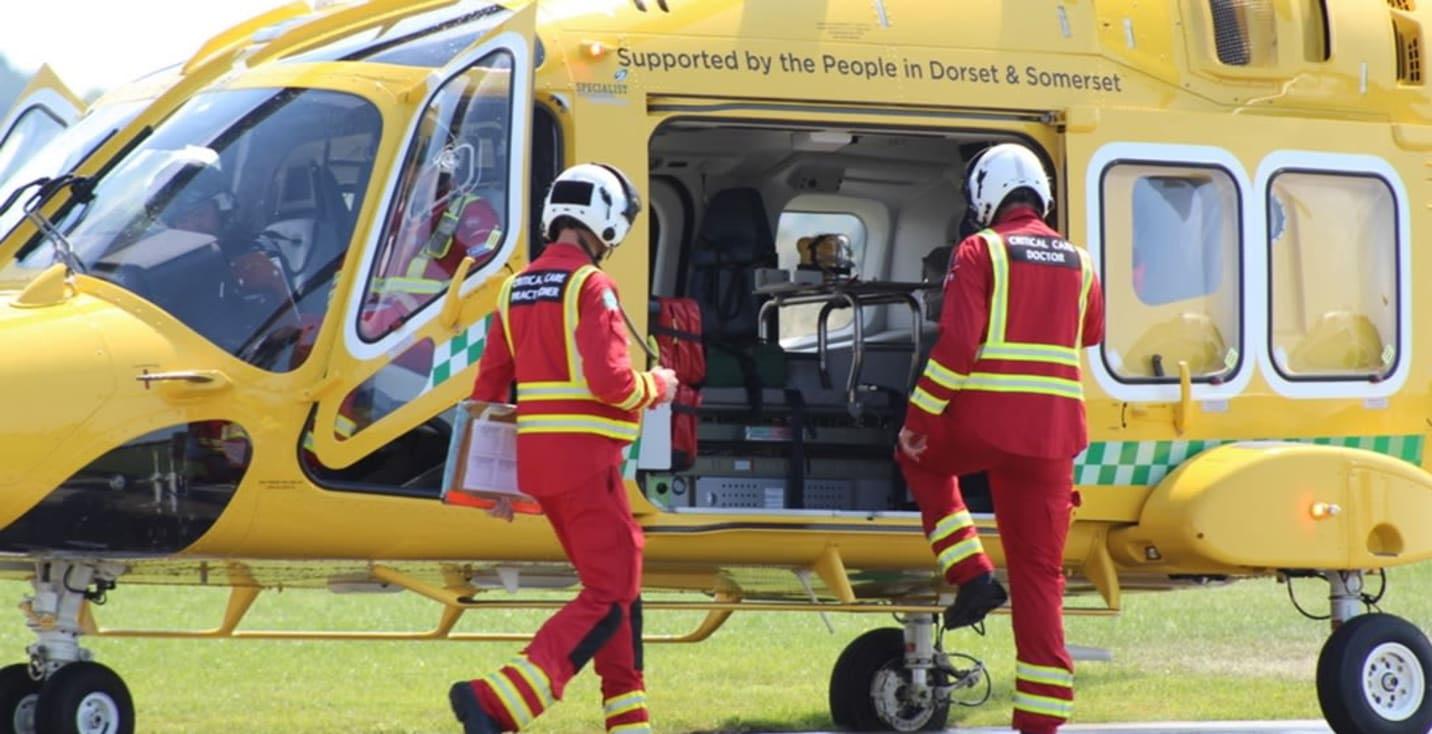
From farm accidents to heart attacks … here are the stories of some of the many people who owe everything to the ‘hospital in a field’
The buzz of the helicopter rotors as they come in to land is a familiar sound across Dorset and Somerset. This month Dorset and Somerset Air Ambulance (DSAA) is 25 years old. Whether it’s a major road accident, a stroke at home or a fall from a ladder, the care that the teams give can save lives. To celebrate the anniversary, The BV has looked at 25 lives affected by the air ambulance, highlighting how the DSAA is critical to emergency care in the region.
In March 2000, Kenn Duffield of Dorchester was the first person to be treated by the Dorset and Somerset Air Ambulance after his motorcycle

collided with a car near Sherborne. Although the accident occurred the day before the service was officially launched, the air ambulance team was ready: they mobilised and transferred him to Dorset County Hospital within minutes. Just over a year later, in September 2001, the DSAA celebrated its 1,000th mission.
The air ambulance is a lifesaver when it comes to farming and rural accidents – it can get to places faster. When the front wheels of farmer John Harper’s quad bike dropped into a rut, he was catapulted over the handlebars and rolled down the hill: ‘down, down and down.’ the air abumalnce was only able to land at the top of the hill, and the crew needed the help of the hazardous area response team to get John to the helicopter. He was airlifted to Southmead Hospital in Bristol (see his full story here).
In 2022, Kevin Groves from Bridport got his legs caught in farm machinery. Thanks to the quick thinking of his mother and the swift arrival of the air ambulance, his life was saved, although he did ultimately require an amputation. Specialist services were critical when Leanne Reid from Wellington had an accident on the M5. Medical teams treated her at the scene before airlifting her to Southmead Hospital in Bristol.
Due to the extent of her injuries, Leanne, then a mother of two, was told she may not be able to have any more children. However, she has recently given birth to her third child, now ten months old. She told The BV: ‘It’s hard to put into words. The air ambulance made a huge difference. Without them I probably wouldn’t be here.’
Leanne has raised money for the air ambulance to thank them (although her new baby is keeping her busy at the moment!).
Fundraising for the DSAA
DSAA receives no direct funding from the Government or the National Lottery and relies on the generosity of the public for support. Its operational costs are more than £5 million a year: each mission costs around £3,500 and in 2024, they responded to 2,909 emergency incidents. A close encounter with the air ambulance has inspired many people to fundraise for the service.
In 2015, Anne Roots of Nutley Farm near Winfrith was in a serious horse and carriage accident (see her full story here) and was treated by the DSAA team. Over the last five years she has raised £52,000 from Christmas light displays on her farm.
Sam Snowden was airlifted to hospital after a climbing accident on the Dorset coast in 2022: in a tribute, he successfully ran the Welsh 3000s, raising money for DSAA.
Sadly, not all patients can be saved, but the air ambulance has given bereaved families a focus. Joe Abbess was 17 when he was caught in a rip current off Bournemouth beach. Despite the best efforts of the emergency services, they could not save him. Since then, his family has raised more than £5,000 for the air ambulance and continues to raise awareness of water safety.
Minna Leatham was seriously injured in a head-

on collision on the A30 east of Shaftesbury in 2020. Her partner Hugo Yaxley did not survive. Following her recovery, Minna has raised more than £22,000 in memory of Hugo for both the DSAA and Hampshire and Isle of Wight Air Ambulance. Hugo’s family also donated a trophy for a cycling challenge in aid of DSAA, helping to raise muchneeded funds.
Swift action saves lives Summer is a busy time in Dorset – people come on holiday to enjoy the coast and countryside. Jonathan Belke, on holiday near West Lulworth, was walking with his wife when he suffered a cardiac arrest. Two bystanders started CPR, and when the air ambulance arrived, treatment was given at the scene before Jonathan was transferred to Royal Bournemouth Hospital where he recovered.
The DSAA team includes pilots, critical care practitioners, paramedics, nurses and doctors,
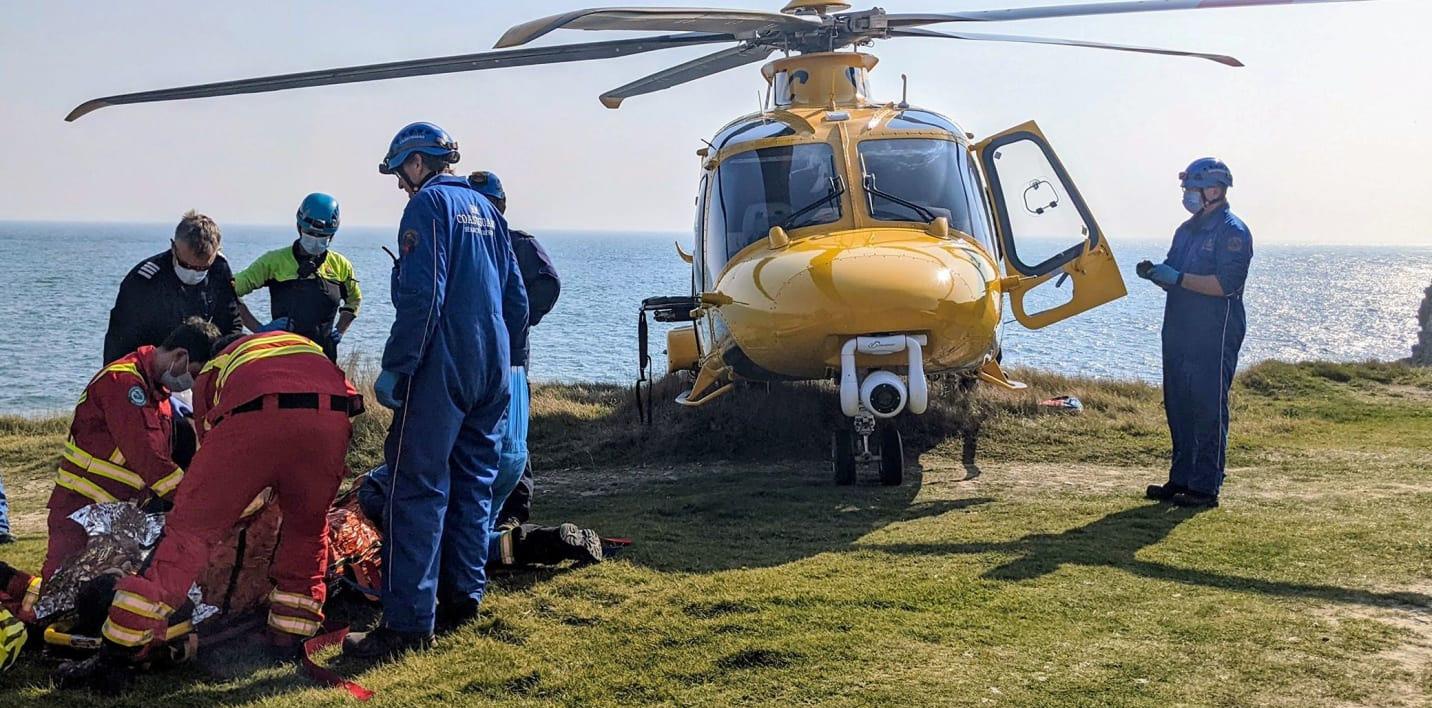
working from 7am to 2am, 365 days a year. Whether landing by a roadside, in a park, in a field or on a beach, they ‘bring the hospital to the patient’, providing complex and life-saving interventions at the scene.
Phil Gregory was about to attend a family party when he suffered a cardiac arrest. Paramedics confirmed he was having a heart attack and the air ambulance was about to fly to Bournemouth when Phil’s heart stopped. The team defibrillated him and kept him alive while he was flown to hospital.
Drummer Russell Poole was also saved by paramedics and the air ambulance when he had a cardiac arrest while playing in a gig in Weymouth.
Being able to perform CPR is critical before help arrives. After a wonderful day in Lyme Regis, Stephanie Lehmann was about to drive home when she felt unwell: then her heart stopped. Her partner and bystanders performed CPR until the air ambulance arrived to transport Stephanie to Musgrove Park Hospital in Taunton.
Initially thinking he had bad indigestion, Paul Rockett managed to call his wife before collapsing in his ‘man cave’ industrial unit on a very hot day (see his full story here). His wife arrived in time to perform CPR before the air ambulance’s arrival and the paramedics took over.
Keith and Mary Trimby live near Henstridge, where the air ambulance is based. Astonishingly,
both needed the DSAA services within 12 months of each other, and both required resuscitation. The couple are now well at home.
Specialist centre transport
The DSAA not only gets people to heart attack centres rapidly, it also ensures people get the specialist care they need. Children are particularly vulnerable and their condition can change rapidly. When six-yearold Betty Boland fell after climbing on a neighbour’s workshop roof, she sustained a serious head injury.
The car flipped into a ditch and filled with muddy water, leaving him trapped underwater, unable to undo his seatbelt
DSAA got her to Bristol Children’s Hospital in 20 minutes so she could get lifesaving treatment from specialists. What started as earache for young Ella McGuigan turned into severe mastoiditis. After she collapsed, her father performed CPR while waiting for the air ambulance. The DSAA landed on uneven ground at Parley Common before it was decided that Ella would be transported by road to Southampton General Hospital for urgent care. Since recovering, Ella and her family have continued to fundraise for DSAA.
Sophie Dobbin was born with heart problems and just before her first birthday, collapsed. The DSAA got her to the heart specialists in Bristol in 20

minutes: a road journey would have taken over 90 minutes. Both time and specialist care make a significant difference in saving lives. Lucy Warren was transferred by the DSAA to Southampton for treatment for a severe stroke. When Harry Hollowell had a ten per cent chance of survival after being crushed by a 10-tonne telehandler, DSAA flew him to Southmead Hospital in Bristol where trauma teams saved him. After Issy Jarrett was helped by DSAA after a road accident, she went on to work for the NHS at Musgrove Park Hospital.
When Preston Nicol-Hinde’s car flipped into a ditch filled with muddy water, he was unable to release his seat belt and was trapped below water. Devon and Somerset Fire and Rescue got him out before DSAA conveyed him to Southmead in Bristol for emergency treatment (see his full story here). When 13-year-old James Clark needed lifesaving emergency surgery, DSAA flew him from the Isle of Wight to Southampton.
In 2023 Patrick Grant suffered life changing injuries when a concrete wall fell on him.
‘My accident was while I was working in Sandbanks. I can’t remember anything about the accident or air ambulance ... but without them I probably wouldn’t be here. We really need them. It is a great, great service to have, anywhere in the world.’
• dsairambulance.org.uk
• A regular monthly donation is the most effective way to support the vital work of the Dorset and Somerset Air Ambulance.
In early February, two young boxers from Sturminster Newton Boxing Club headed to Rotherham for the England Boxing National Youth Championships 2025.
Ruby White, who turned 18 the week of the competition, and 17-year-old Lexi Phillips both fight out of the North Dorset club –though Lexi, from Poole, travels three days a week to train there. Despite battling illness in the lead-up, Lexi was determined to compete, says head coach Shaun Weeks: ‘She’s had shingles and a nasty flu-virus – she’s really had to work.
‘Ruby’s semi-final was against a girl from Liverpool, and she won with a first-round stoppage. In the final, she faced European champion Ruby Cuthbertson from District Youth Boxing Club near Sunderland. Our Ruby come out on top on points, but it was a really good contest. It was nice to see her get three rounds in – she’s stopped her last nine opponents.
‘In Lexi’s semi-final, she boxed Sky Smith from Berinsfield, a fourtime national champion. It was close, but Lexi won on a four-one split decision. She then faced five-time champion Grace Massey in the final – they’d fought twice before, winning one each, so it could have gone either way!
‘Lexi was exhausted before she even started, but she dug deep and got a unanimous win from all five judges.
‘Two female England champions in the club – what a weekend! It’s Ruby’s sixth national title, and it was Lexi’s third.’
‘I got in the ring for the semifinal and I didn’t box my best,’ says Ruby. ‘I got the first round stoppage, but it wasn’t a good performance, in my opinion. Then on the Sunday, I boxed the European champion – she was on the England team with me a few years ago, we went to
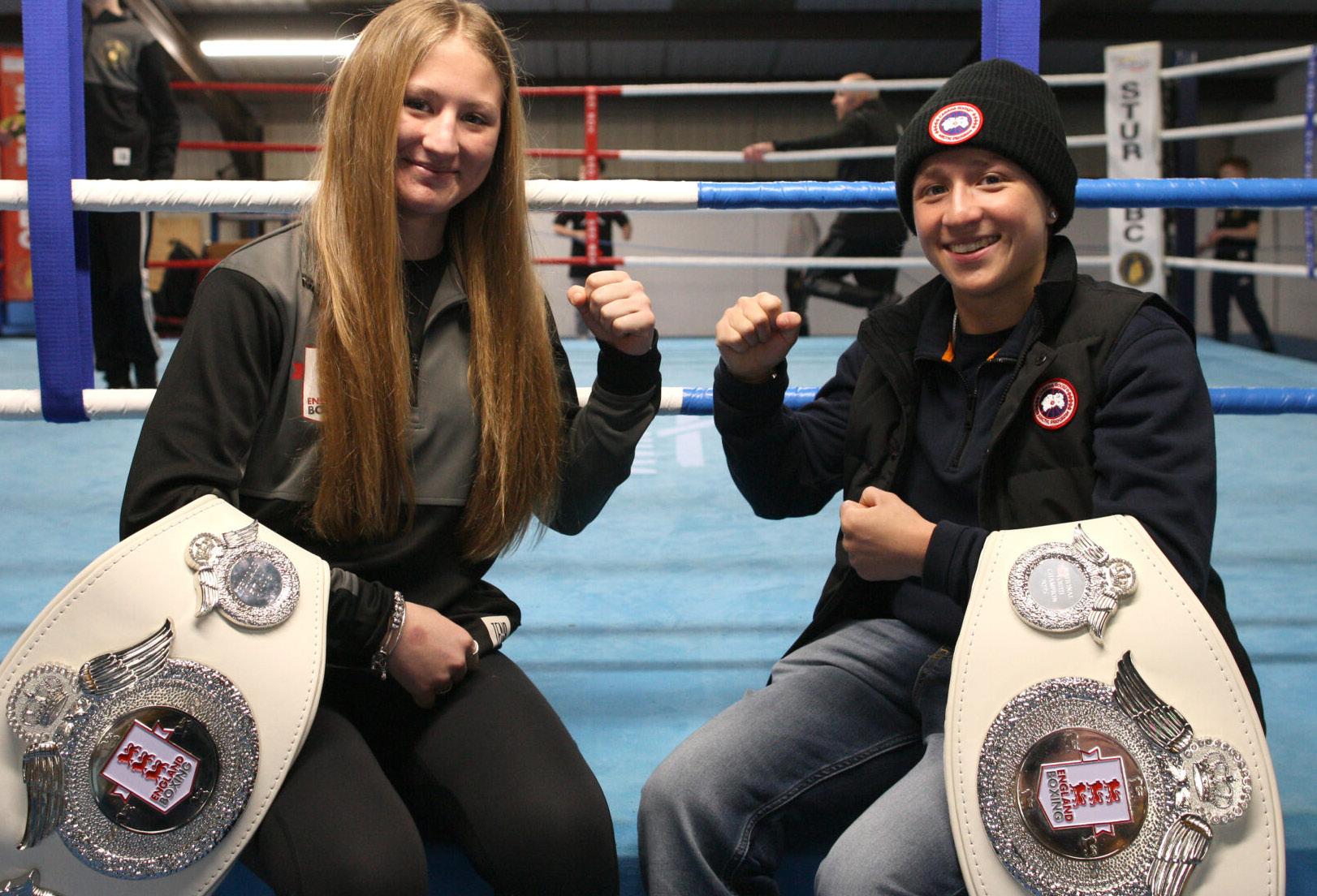
the Europeans together. I won all three rounds and got the decision, but my performance will be better next time: I didn’t box as best as I could. I can only improve on that. But it was a good weekend!
‘Now it’s back in the gym to train for the Four Nations. I’ve had a couple days off, but I’ll be back working very soon – I just need a little bit of rest and recovery at the moment.’
mental game
Lexi was open about how she had felt in the run up to the National Youth Championships: ‘Yeah, that wasn’t the best! I’ve been unwell for a good three, four weeks now, and then we found out I had shingles the week before. So my preparation was just about recovering, trying to stay on weight … you can’t train because you’re trying to get better, but then you can’t eat to try and get better! So it was really tough. ‘The semi final was so hard. I found that one the toughest, to be honest, mostly because I knew that I still had to lose weight after it, and not eat a lot, and then go again the next day. But I made it with a four-one split decision, and I still think I won quite well, even though I didn’t box anywhere
near my best the whole weekend. For me, it was a mental game, just getting through it, doing what I had to do to get the win.
‘Sunday, the final, was still tough, but I felt like that was a more comfortable win for me. I felt a lot more positive in the morning because I knew that was the last push, and then I got a nice week off! The dream is to win the Four Nations in May, and then get selected for England performance and hopefully go to Europeans. Simple as that!’
Shaun agrees that the next step for the pair of champions is with the England team, that they will be competing in the Four Nations, held in Cardiff on the weekend of the 31st of May: ‘We’re hoping, off the back of that, maybe Lexi will get picked up and put on the England pathway, that’s the first step for her.’
Boxers are selected for the England Performance Youth Squad by a selection panel, based on their technical and tactical skills, fitness and commitment to the England Boxing values. From the England Performance squad, Lexi would potentially be selected for the Europeans and join her clubmate, Ruby.
•
by Laura Hitchcock
Ahead of the Cheltenham Festival, editor Laura spoke to the ultimate insider Joe Tizzard: from festival memories to Gold Cup predictions, he shares his tips, insights and one horse that just might cause a surprise
Few names in National Hunt racing carry the same weight as Tizzard. For decades, the family’s Venn Farm Stables in Milborne Port – perched on the North Dorset/Somerset border – has been synonymous with success at the highest level, producing some of the sport’s most beloved stars. Now at the helm, Joe Tizzard is carving his own legacy, blending the wisdom of his father Colin with his own formidable experience in the saddle. Joe’s journey in racing began in the shadow of greats. As a teenager, he cut his teeth just 15 miles from Venn Farm at the powerhouse Ditcheat yard of Paul Nicholls, before making an immediate impact as a jockey. He tasted Cheltenham Festival glory early, winning the 1998 Foxhunter Chase on Earthmover as an amateur. That same year he turned professional, quickly establishing himself as one of the most promising young riders in the sport. By the end of the 1998/99 season, he had been crowned Champion Conditional Jockey – the first major accolade in what would become a decorated riding career.
And then there was Cue Card
But it was in partnership with the superstar Cue Card that Joe truly etched his name into racing folklore. Together, they stormed to victory in the 2010 Cheltenham Champion Bumper, marking the beginning of a glittering career that saw them land 16 wins – including eight at Grade 1 level – and amass more than £1.4 million in prize money. With horses like Thistlecrack and Native River joining coming in Cue Card’s wake, the Tizzard yard became a dominant force in the 2010s, culminating in Native River’s memorable Cheltenham Gold Cup triumph in 2018.
After hanging up his jockey’s boots in 2014 with more than 700 winners, Joe stepped seamlessly into the training role alongside his father. When Colin retired at the end of the

2021/22 season, Joe took full charge – and wasted no time in making an impact. A sevenfigure prize money season in his first year as sole trainer proved he was more than ready for the challenge. Now, as he continues to build on those foundations, all eyes are on his stable for this year’s Cheltenham Festival. With the biggest event in jump racing fast approaching, Joe Tizzard sat down with editor Laura – who was on a mission to get the inside track from a man who knows Cheltenham like the back of his riding boots...
What makes Cheltenham different from every other racing festival?
‘I think Cheltenham is just different. It’s the most competitive of the festivals: it’s certainly what every trainer aims for.
There’s always Aintree and Punchestown,

Joe’s favourite memory of Cheltenham – sucking up the moment on Cue Card after winning the Ryanair Chase Grade 1 at Cheltenham Festival on 14th March 2013. Image: Lajos-Eric Balogh/turfstock.com
but I’d have to say it’s that competitiveness –everybody wants to be winning at Cheltenham.’
What’s your best Cheltenham memory?
‘That’s got to be Cue Card winning the Ryanair, closely followed by the Bumper. But the Ryanair ... you know, we knew we had him right. All I had to do was steer him, and just get that right. And I knew I was coming to the end of my riding career, so I was able to get the job done on him, but then sit back and really enjoy the walk back, coming down the walkway and back in.
‘I really managed to enjoy that ...
It’s probably the only time I’ve ever been able to take a deep breath and suck in what it’s all about.’
If you could only watch one race this year, which would it be?
‘The Gold Cup. For me, it’s just the absolute pinnacle in my mind.
Which horse could surprise people at this year’s festival?
‘One of mine, probably: First Confession in the Albert Bartlett. Whether he’s good enough or not ... we’ll find out. But I think he’ll run a big race, and I think he’s got an each-way chance at 40 to one, so he could just frighten a few people. I think he’s a lovely horse.’
What’s your best piece of advice for a firsttime festival-goer?
‘I think Galopin Des Champs is going to go win a third Gold Cup this year, and he could be very impressive doing it.
‘But I think that the whole build-up and the tension and the celebrations afterwards … I just don’t think there’s anything quite like the Gold Cup.’
‘My first piece of advice is to get there early, and beat the queues to get in! But make sure you go and just sample everything: go and be out the front for the first race to witness the roar. Make sure you go to the Guinness Village and soak up a bit of that atmosphere in there, and then get yourself around the winners’ enclosure for when a horse comes back in, especially for the big race of the day.
‘You know, I find the atmosphere makes the hairs on the back of my neck stand up as soon as I walk in the place. It’s just got this energy. ‘But go and enjoy it all. Get the full experience, and be sure to get down the front so you can get up close to the horses.’
by Laura Hitchcock
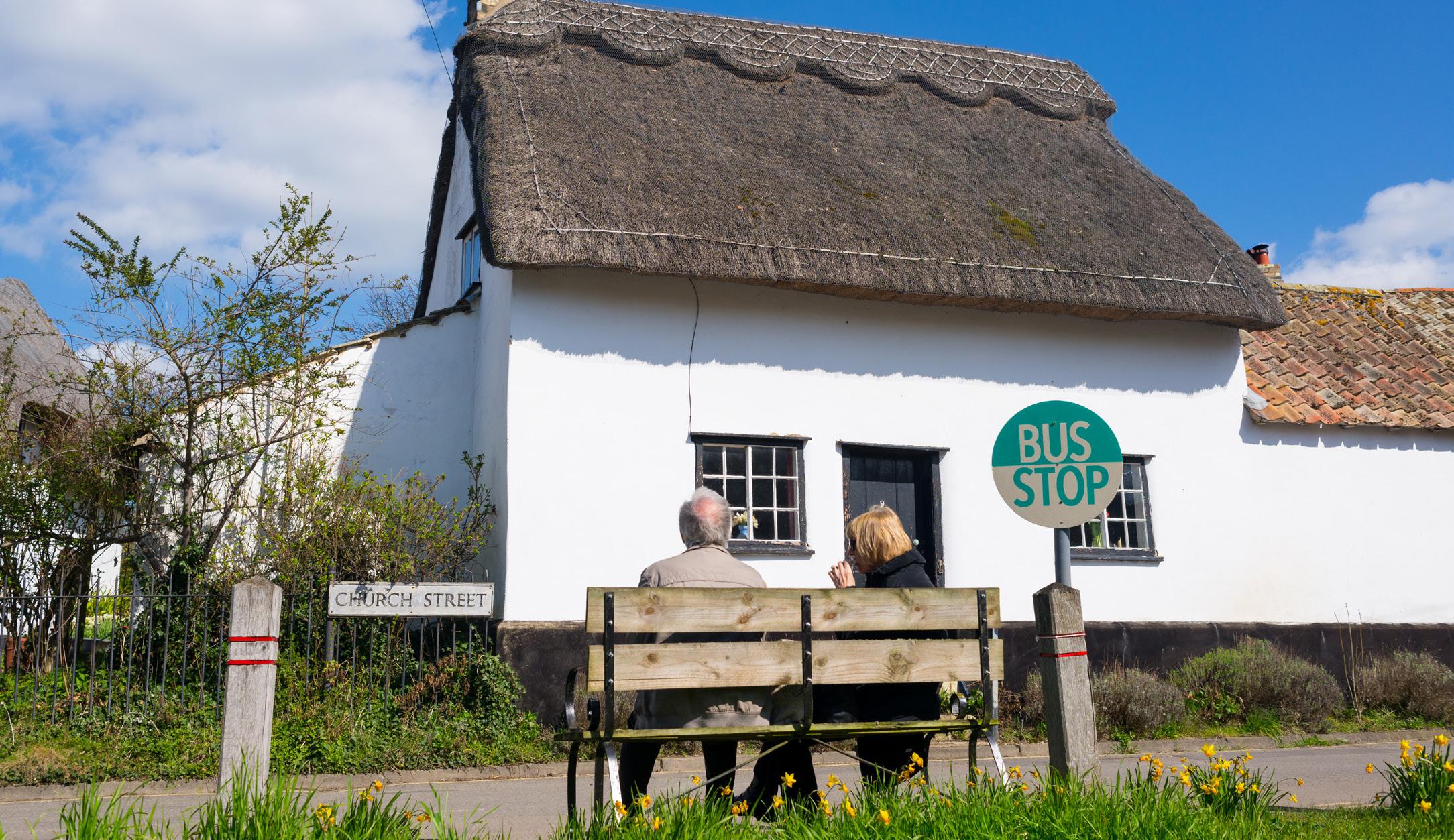
Among the worst-served areas for rural transport, a House of Commons inquiry hears that failing bus networks are widening social inequality
For rural Dorset, public transport isn’t just inconvenient – it’s non-existent. Villages once served by regular buses now sit isolated, residents struggling to reach jobs, schools and healthcare. Those without a car face impossible commutes, rising costs, or a growing sense of being left behind.
A House of Commons Transport Committee hearing on 26th February laid bare the stark reality of failing rural public transport networks, exposing the deepening link between poverty and poor transport access. Among the witnesses was Silviya Barrett from Campaign for Better Transport, who identified Dorset as one of the worst-affected areas in the country: ‘The places that were specifically poorly connected in the north-east were Northumberland and County Durham; and Dorset and Devon in the south-west,’ she told MPs.
affordable housing elements. But why are we building houses in places for people who cannot afford cars, in places where there are no buses or train services?’ he asked.
His concerns were echoed by Professor Karen Lucas, an expert in transport-related social exclusion: ‘There is definitely a joint issue around social deprivation and poor public transport. Those two things are absolutely linked.’
Why are we building houses for people who cannot afford cars, in places where there are no buses?
In Dorset’s rural villages and market towns, the decline in public transport is widening social inequality. Low-income families, young people, and older residents without access to a car find themselves increasingly trapped – unable to reach work, education or essential services.
Paul Milner from CPRE, the countryside charity, described the growing transport poverty across rural England. ‘I see huge amounts of rural housing development, many with much-needed socially
The collapse of rural bus services has not happened by accident. According to Stephen Frost, Head of Transport Policy at the Institute for Public Policy Research, government policy over the last decade has prioritised cars over public transport – a move that has pushed more people into car ownership and hollowed out rural bus networks. The Government asked ‘Where do we predict that we are going to need more capacity?’ and decided it is in cars, it is in road expansion, and it is therefore making places more attractive to reach by car.’
But this shift away from public transport creates a vicious cycle.
‘As people then buy cars because those places become more attractive, it undermines the viability of public transport, which is then removed from villages and towns, and people increasingly move out of those villages and towns, as do services and other things, towards more urban areas,’ Frost said. The impact is then felt most by the lowest-paid.
‘Badly affected are low-paid workers, especially shift workers and non-paid carers, because they have a lot of travel responsibilities for escorting their children and other people around,’ said Karen Lucas ‘Young people not in employment, education and training see the cost and especially availability of transport as a barrier to them taking up any of those activities: and particularly low-income households with children.’
For shift workers in Dorset’s tourism and hospitality industries, irregular bus services mean long, expensive commutes or missed work opportunities. Meanwhile, carers and parents juggling multiple responsibilities find their travel time and costs spiralling out of control.
making it easier for people to reach work, education, and businesses.
The committee also heard that improved bus services help keep money in rural areas, rather than funnelling wealth into larger urban centres.
‘Local buses help to spread growth,’ Barrett explained. ‘Rather than attracting all investment to the centre of cities, they support local economies in the suburbs and in towns, where people can make shorter local journeys and spend in their local economy instead.’
An affordable capped fare means nothing if there isn’t a bus to use it on
Despite this, rural bus services continue to be cut, while investment in roads and car infrastructure remains the priority. Without a fundamental shift in funding, Dorset’s rural economy will remain constrained – and those without a car will continue to be left behind.
Beyond the social cost of lost bus services, the committee also discussed the economic damage caused by poor transport links.
‘There is much evidence on the economic benefit of buses, particularly by the Confederation of Passenger Transport,’ Silviya Barrett said. ‘Public transport, specifically buses, produces much higher returns on investment compared with road investment. For buses, it is a return of £4.55 for every £1 spent, whereas road investment it can be as low as £1.10 or even a negative value for money if we take the full externalities of road schemes.’
This means that investing in buses provides better economic returns than road expansion, reducing congestion and boosting local economies by
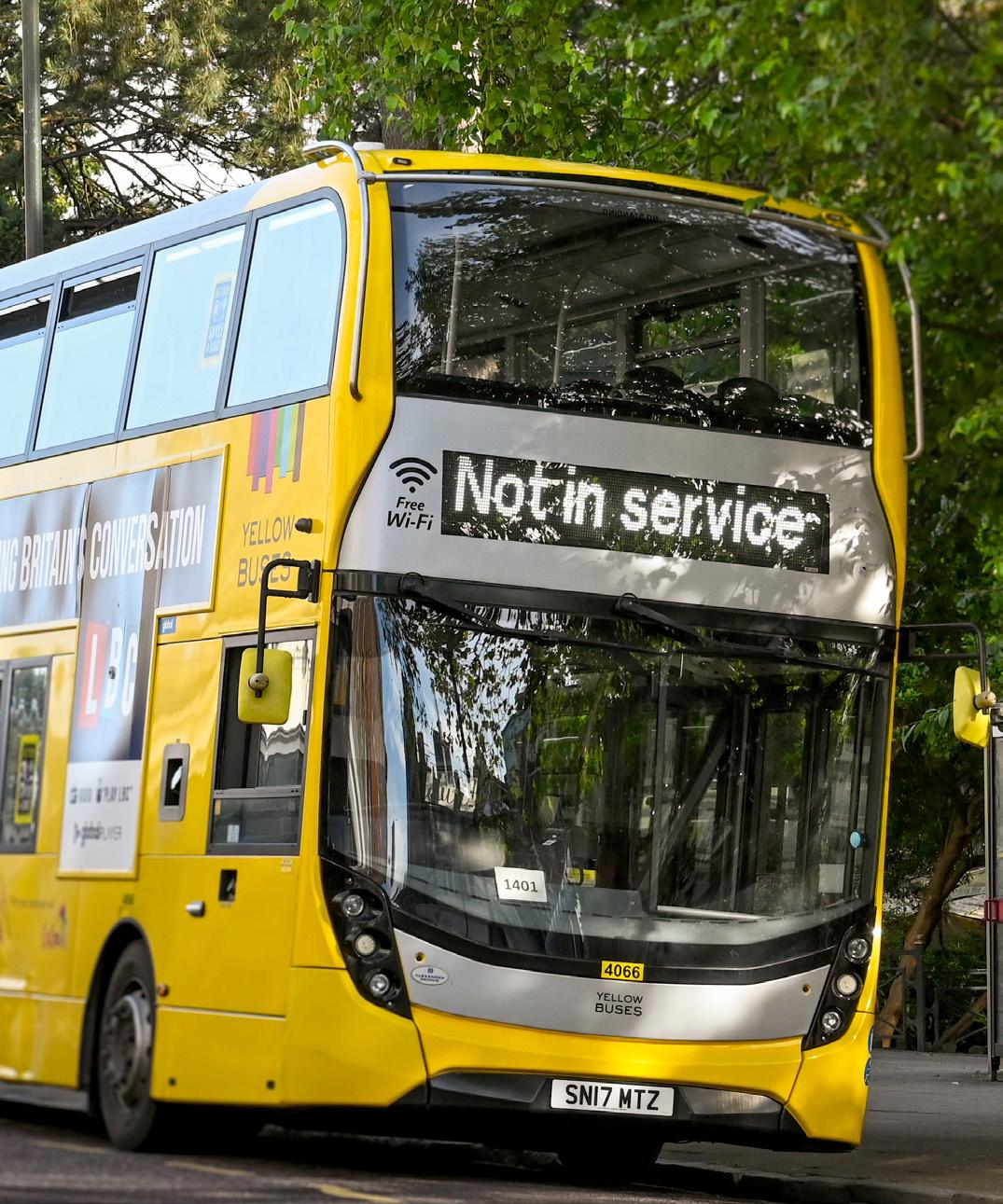
One solution discussed by CPRE’s Paul Milner was the Every Village, Every Hour scheme, which would guarantee a minimum rural bus service to prevent entire communities from being cut off.
In Switzerland, every village of at least 300 people is guaranteed an hourly bus service from 6am to midnight, seven days a week. It is successful, with hugh occupancy and low subsidies. Switzerland, unlike the UK, is prepared to spend more on rural public transport due to the cultural importance of rural villages, and a tradition of using subsidies which are “justified as political acts of solidarity” to equalise service provision across cantons** .
The CPRE believe that limited public transport in rural areas isn’t a given, or a natural side-effect of living in the countryside.
Silviya Barrett also argued that buses should not be an afterthought: ‘Buses are an essential public service. They need to be treated as such and they need to be funded as such.’
The hearing discussed the impact of the recent fare cap increase from £2 to £3, with concerns raised about affordability in urban areas. However, Silviya Barrett noted that ‘in rural areas, £3 can still be very good value compared to the prices there might have been before.’
But as Dorset residents know all too well, an affordable capped fare means nothing if there isn’t a bus to use it on.
Without urgent investment in rural bus networks, communities will remain cut off—isolated not by distance, but by a failing system that leaves those who cannot afford a car with no options at all.
• *Full transcript available here
• **ScienceDirect - Watching the Swiss
by Courtenay Hitchcock
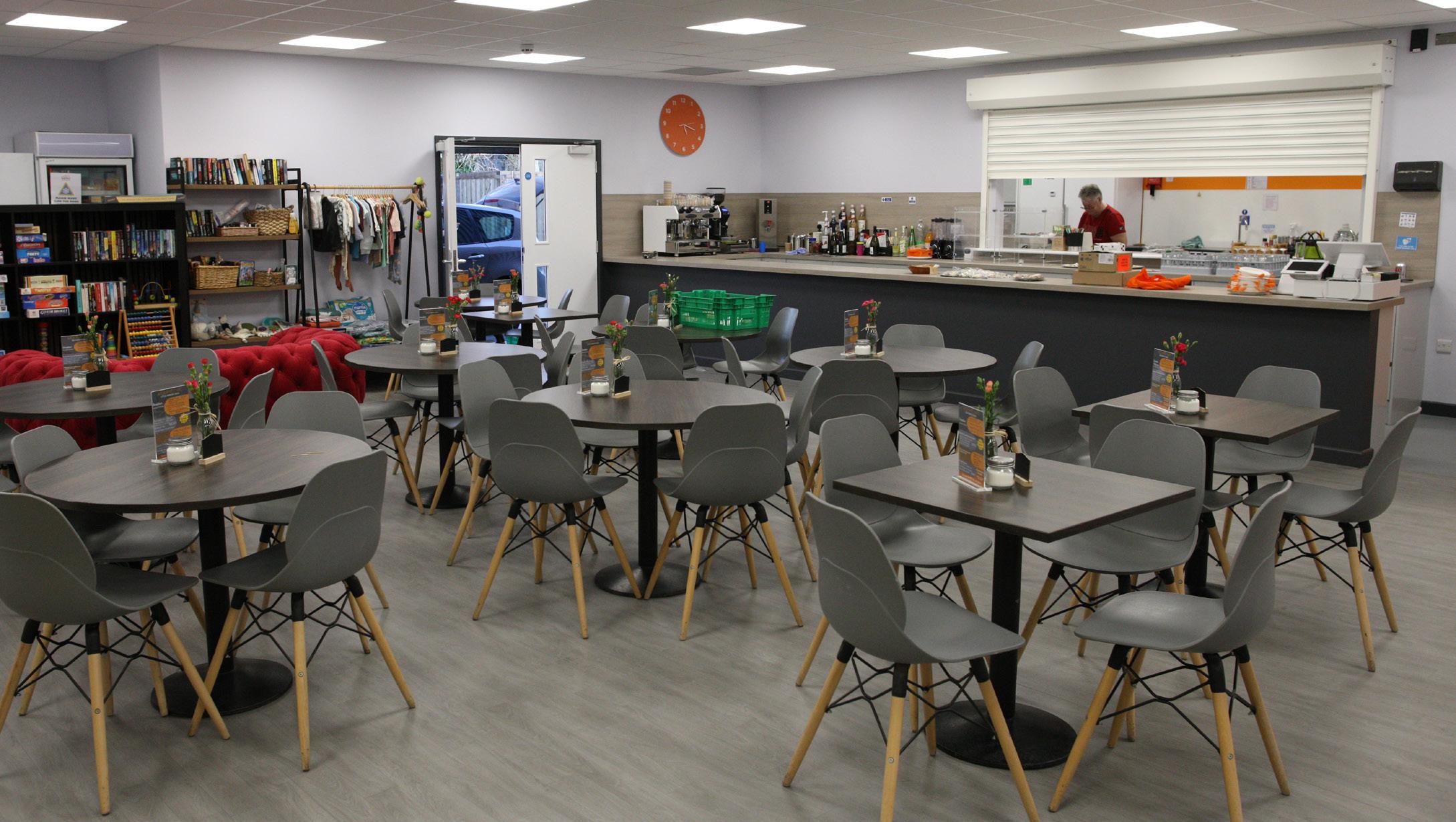
Newly opened at Sturminster Newton, the Vale Family Hub offers vital community support for North Dorset residents
‘How did we get here? Blood, sweat, tears, sauvignon blanc, HRT and hair dye!’ says Cllr Carole Jones. But the Vale Family Hub has finally opened in North Dorset. As leader of the Family Hub and Local Alliance Group chair, Carole has spent years working to create a space where people can find practical support, community, and – importantly –great coffee.
‘When we started the Vale Pantry, it was about affordable food for disadvantaged families,’ says Carole. ‘But food is only a sticking plaster. You can’t mend what’s going on until you can dig underneath. We started to ask ourselves how we could get people back on their feet, and quite swiftly our work began to evolve. We began doing a lot more, to great success, but we were so limited in the Pantry, we needed space.’
When Carole saw the enormous – derelict and leaky – warehouse on the industrial estate, she knew it was a potential answer. The new Sturminster Hub,
Dorset Council’s main Hub in its northern area, has received funding to provide at least 24 statutory services, including early parenting support, speech and language therapy, SEND support, infant feeding advice, domestic abuse support, debt, housing and benefits advice and children’s social care.
‘Food is only a sticking plaster’
But for Carole, it’s about much more than a list of services.
‘When you’re going through a tough time, sometimes you need advice. And sometimes, you just want to offload,’ she says. ‘It was key to have a warm, welcoming space where people can simply come in, sit down and talk. And have a proper coffee. Honestly, it’s great coffee. Our coffee machine is brilliant!’
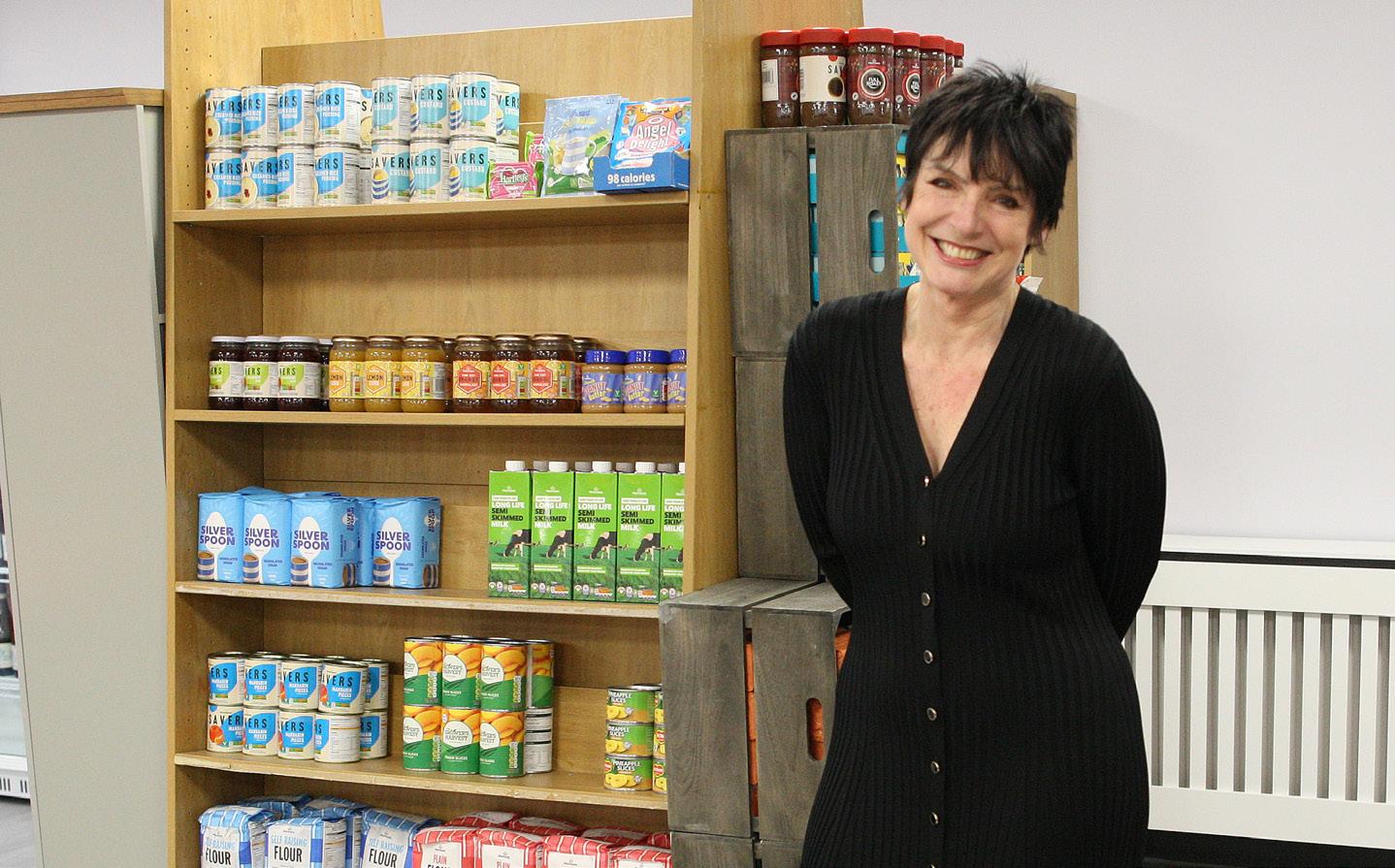
A network of support
The Hub has brought together a wide range of services and professionals, from paediatric nurses and former social workers to mental health volunteers and police liaison officers. Carole hopes to see midwife and health visitor appointments added to the list, alongside drop-in sessions from organisations like HomeStart, Dorset Mind, DorPip (a parent-infant relationship service) and the social prescribing team. Collaboration with local schools is a priority. ‘We’re open from 7.30am for breakfast club until 6.30pm, six days a week,’ Carole says. The affordable food provision of the Vale Pantry has also moved over, continuing its membership scheme to help families put food on the table.
The funding challenge
Opening the Family Hub has already cost £285,000, with the final figure expected to reach £300,000. Running it will require around £350,000 a year. Carole admits that it has been an exhausting task raising the money: ‘I write funding bids constantly. All the time. Two today, one yesterday. It never stops. Ever.’
Recent support has included a £40,000 Lottery grant and £48,000 from Dorset Council towards salaries over two years. ‘We’ve been able to employ four people – each of whom first came to us in crisis, needing food and support themselves. They understand what people are going through.’
But long-term sustainability remains a concern. ‘I’d love someone to focus on sponsorship and corporate fundraising, but we can’t afford to employ them. I think we’re okay until the end of the year.’
A growing demand
Currently, the Vale Pantry is supporting 360 families, but
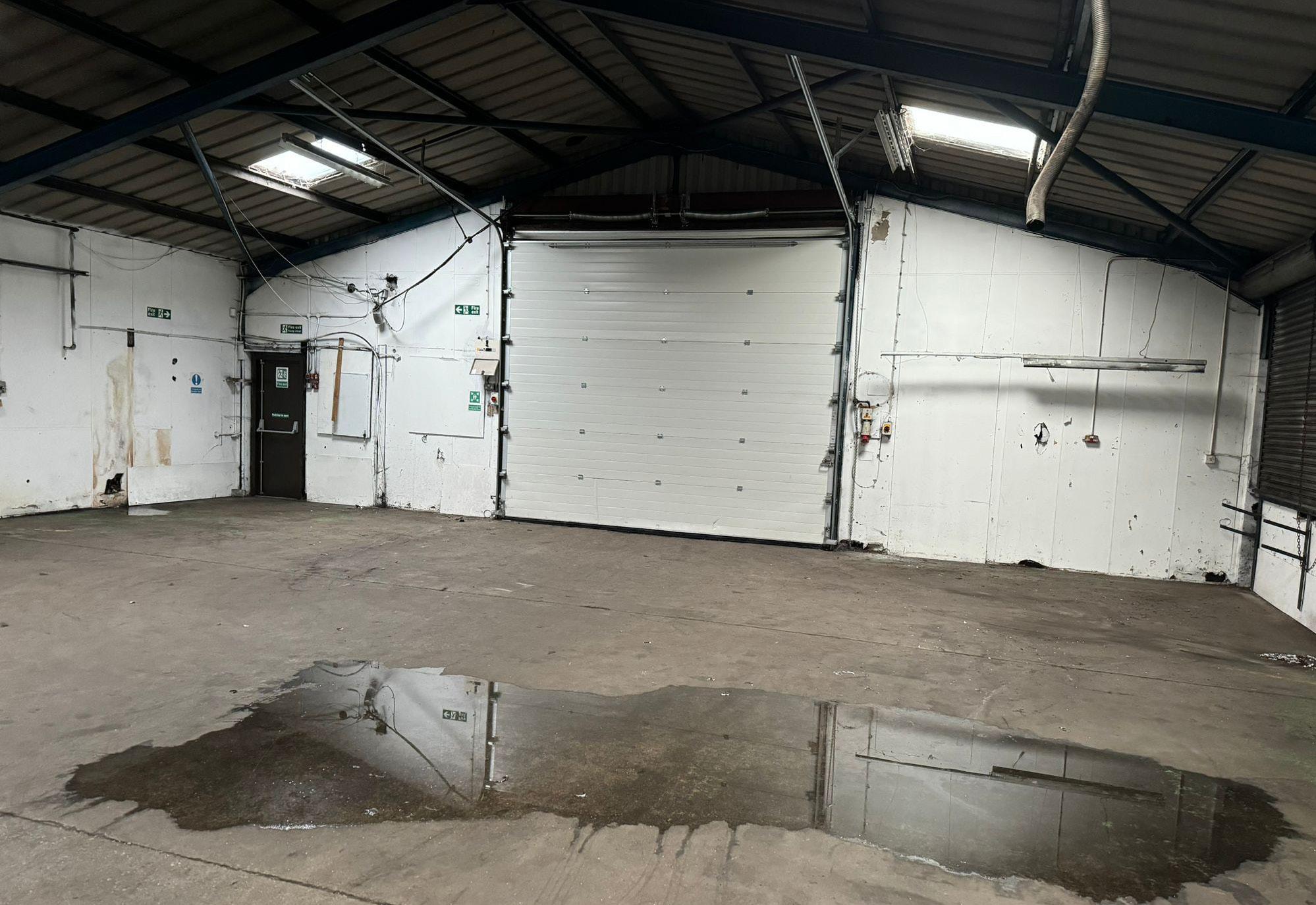
a year ago,
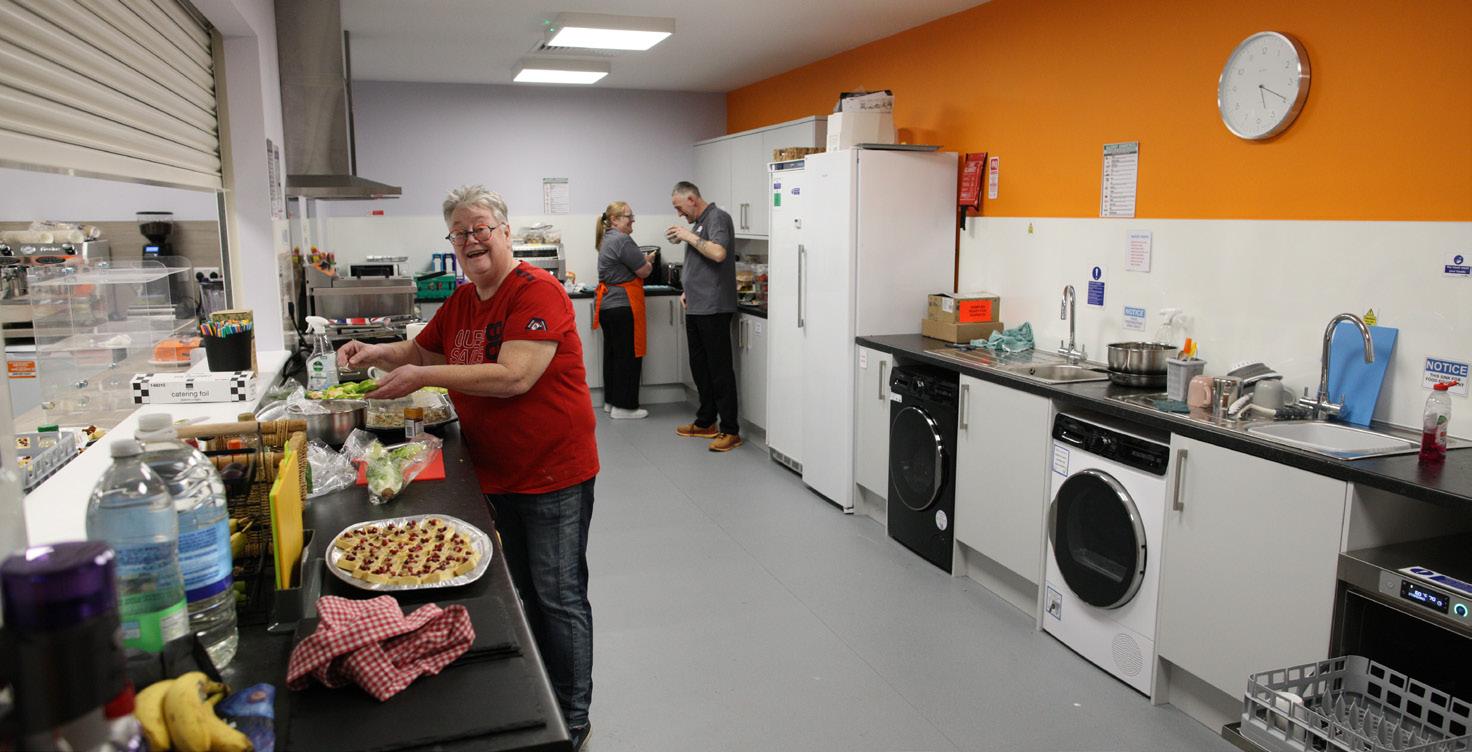

Carole expects that number to rise rapidly. ‘There’s been nowhere locally for young mums to bring their little ones – here they can let them run riot in the soft play area while they enjoy a coffee and a chat. We’re starting a Bumps to Babes group too. We also need to support older
people – so many are isolated. A lunch club could make a real difference.’
We’ve been able to employ four people –each of whom first came to us in crisis
The Hub is working with local schools to provide an alternative space for students at risk of exclusion.
‘Sometimes they just need a different approach. We bring them in, make them part of the team, and it’s transformative.’
Carole is also determined to launch a much-needed youth group. ‘Despite years of talk, there’s still no youth club in the town. I want to start with Year Six pupils, working with them for a year before they move to secondary school. If we get them at that age, we can build resilience and confidence, and and they can then mentor the younger ones, as the next Year Six group starts.’
As always with community ventures, volunteers are the backbone of the Hub, with 70% of volunteer hours given by people who have needed the Vale Pantry’s services themselves. ‘Some of their stories would make you weep –though some would make you howl with laughter,’ says Carole. With an ageing Dorset population – 30% of residents are over 65, compared with a UK average of 19% – Carole knows demand will only increase. ‘In the next ten years, the number of people aged 80 and over is going to jump by 46% in this area. But it’s not just the elderly. Rural Dorset wages are low – farm, shop and care workers make up a large part of our community – and they’re struggling. There are more than 6,000 people on the housing list.
‘We need genuinely affordable, socially rented housing – the new

builds going up everywhere are out of reach for most.’
Carole is keen to acknowledge those who have driven the Hub’s development. ‘My manager Kim is an absolute force of nature. She’s an unbelievable woman. She came to us in real need initially, and she just makes the most amazing things happen. And we must thank Hammonds, who have been absolutely fantastic. I mean, they didn’t just do it at cost – I know they lost money. But they did it all with such a smile on their faces. This was a derelict, leaky warehouse, and they just made it happen for us. Our landlords, Northover, have been fantastic too.’
For those wanting to help, Carole is clear: ‘Just come in and get involved! Whether it’s working with young people, helping older residents, or simply lending a hand, there’s so much you can do. And if you can’t give your time, financial support is invaluable.

‘I don’t care if it’s £2 a month or £100. No amount is too small: knowing what’s coming in makes a real difference. If someone offers £100, I’ll always say, ‘Could I have £10 a month instead?’ because that security allows us to plan ahead. It helps enormously. We can actually say, “OK, we can now afford to take six more families in this week,” for example.’
The Vale Family Hub is already changing lives. With continued support, it has the potential to transform the North Dorset community for years to come.
• To offer help, please drop in to the Hub or email
• Visit The Vale Family Hub at 22B Butts Pond, Sturminster Newton DT10 1AZ.
• More information about Family Hubs can be found on the Dorset Council website at dorsetcouncil.gov.uk/familyhubs.

‘Our coffee’s great - our coffee machine is magic!’


Blandford Grange is a calm and happy care home offering residential, nursing and dementia care in a modern, light and airy setting. Our friendly team truly care for your family like they would their own – providing compassion, respect, and dignity.
Residents talents and interests are nurtured, and physical, emotional, and social well-being supported. We currently have vacancies for permanent and respite stays. Call us today to book a viewing and to meet our team.
Call us on 01258 458214 for a reassuring chat with one of our advisors. healthcarehome.co.uk




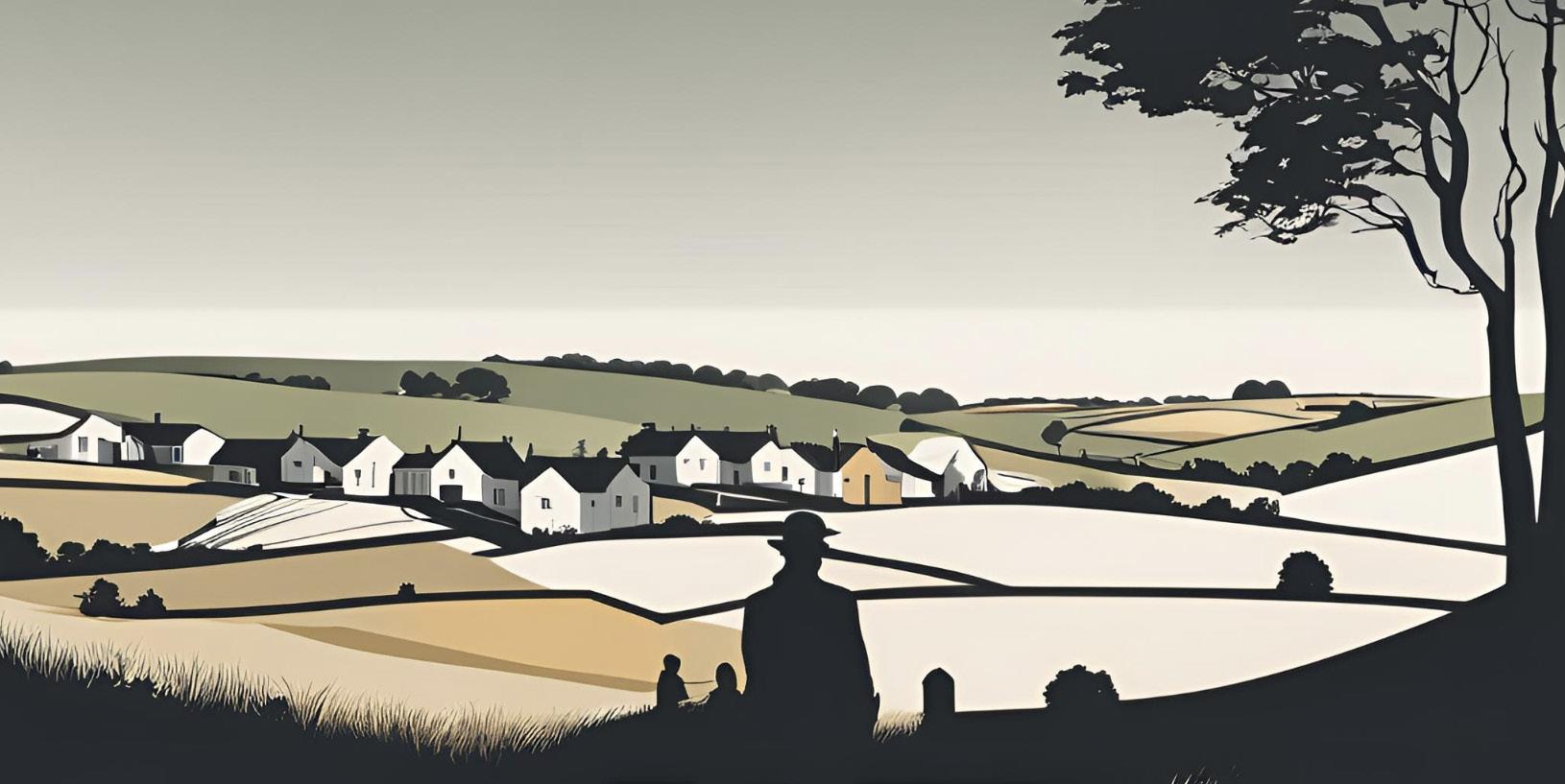
The Dorset Insider is a no-holds-barred column pulling back the curtain on local affairs with sharp insight, unfiltered honesty and the occasional raised eyebrow. Written by a seasoned parish councillor who prefers to remain anonymous (for obvious reasons), it cuts through the noise to expose the frustrations of grassroots politics, and say what others won’t. Rest assured, their identity is known –and trusted – by the editorial team. Expect opinion, candour and a healthy dose of exasperation ...
The conference room was soon packed as Dorset’s parish and town councillors flocked into a recent meeting about the forthcoming changes to planning law. While old friends and colleagues were happy for the opportunity to catch up with each other, most councillors were there to assess the impact of the coming changes on their own patch – and how they would have to communicate that to local residents. Dealing with the occasional nimby is one thing, but almost all residents share genuine concerns about how new housing will affect their towns or villages –and particularly its infrastructure. The Dorset Council representatives seemed to have had a talking to from the Deputy Prime Minister’s office. Planning rules are about to be streamlined to make it easy for homes to be built: just how easy that is would reveal itself later. Most Dorset residents understand the desperate need for truly affordable housing in the county. The average Dorset wage is £28,000 and the price of the average home is 12 times that sum. And it’s precisely because Dorset property is so expensive
that more homes are required. The current housing target for Dorset is 1,793 units a year – which is about to rise to 3,219 annually. That means that over the next 17 years, Dorset should see an additional 54,725 houses being built. And if no effort is made to reach these targets, the big bad baggy-green-trouser-suited wolf from Westminster WILL intervene.
If no effort is made to reach these targets, the big bad baggy-greentrouser-suited wolf from Westminster WILL intervene
It’s clear that council staff and councillors are under huge pressure to deliver on this ambition. And hopefully it will mean plenty of choice for those looking for affordable homes.
While some of the more smug parish councillors sat listening, claiming they lived in an AONB so were not allowed to build anywhere (don’t be so sure, mate), others were more concerned about the necessary supporting infrastructure. We heard from a beleaguered councillor faced with 2,000 units on the edge of a small village. Another area had social housing built ... and people from the West Midlands
had been ‘shipped in’ to some of the homes. We heard real concerns about the non-existent public transport which maroons those living in rural villages unless they can drive.
On top of this, at least one new settlement of 10,000 people will be required in each county: where in Dorset will that land, I wonder?
With devolution and the super council seemingly inevitable, if one local authority of a group cannot meet its housing targets, then it must look to others to try to provide a solution. This means a lot of difficult conversations between neighbouring counties and conurbations. Dorset currently has its prescribed five-year housing supply – but only until October this year. The clock is ticking.
As an aside, I noted that among all the talk there was scarcely a mention of the Nature Emergency declared by Dorset Council last year.
When talk evolved to Neighbourhood Plans it became clear that even if a community has one, it would need to be reviewed.
We need a Plan
Some parishes without a plan wondered whether there was even any point, given the time it takes to go through the process. And does anyone take them into account anyway? Recent developments in the Blandford and Pimperne area have shown that neighbourhood plans mean nothing at all when a big development is on the way. Neighbourhood planning is essential in order for communities have a strategy, but it’s a highly specialist job. Parish councillors are expected to lead the plan process, but it’s very time consuming. And as we try to encourage more diverse parish councils (we desperately need to move away from the stereotypical retired white middle class male), we hit the issue that many new councillors have jobs. While they bring a wealth of knowledge, their time to work on major projects is obviously limited.
And then there was more
However, the biggest surprise was yet to come. After a long day of “chats” with the council and various helpful council officers, I had one more meeting in the diary: a team of local developers wanted to engage with the parish council to discuss their plans. Knowing we already have three developments progressing in the village, I was hoping this latest one would be a slow burn – even if just to avoid the chaos on our narrow roads and to help us manage demand for housing from locals. How wrong I was. We sat stupefied as a well-developed plan was
Neighbourhood Plans mean nothing at all when a big development is on the way
presented for 94 houses on prime agricultural land (in a village of just 1,300 people), almost as a fait accompli. The developers are already talking to the council planning teams, and swiftly marching ahead. Not a single member of the council was anticipating 94 more houses on top of what we have already had to absorb. Clearly there has been no discussion with the local GP surgery or the school, both of which are creaking at the seams. As a council, we now need to fight for the best deal we can for the parish in terms of infrastructure, which is fragile. What might help is if local communities were properly represented. Parish councillors need a seat at the table from the start – not just a flyer, a website link, and a last-minute public “consultation”. Even a phone call or zoom meeting with the planners would help. At least then, with an increasing tide of new developments reshaping rural Dorset, we can prepare our communities and feel like we have a say. Instead, parish councils are sidelined in major developments, treated with far less respect or status than they should have. It might also encourage new councillors to come forward for public service in a county where there were gaps of up to 25 per cent on newly-elected parish councils last year.
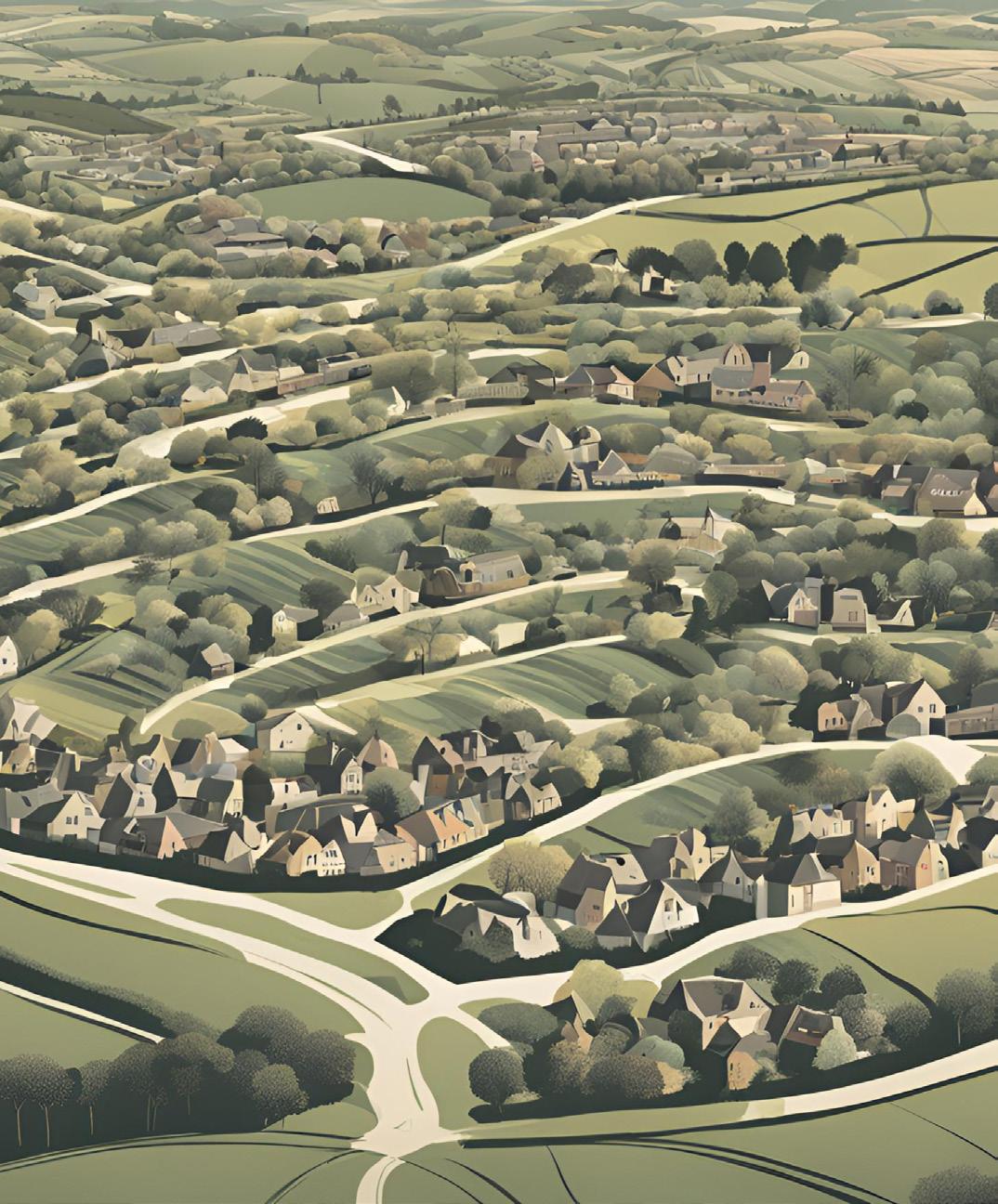
Rachael Rowe spoke to two of Dorset’s artisan chocolatiers who are facing tough choices – but refusing to compromise their product
Chocoholics will no doubt be concerned at the recent news there’s a global shortage of cocoa. What will happen to Easter eggs, gift boxes of pralines and that bar that we all love to sneak into our shopping basket? Dorset has several artisan chocolatiers, and we asked two of them how they are affected by the cocoa shortage.
Why is there a shortage?
Cacao trees (Theobroma cacao) grow in a narrow tropical belt around the equator, approximately 20 degrees north and south of the (imaginary) line. Cocoa is only harvested once a year, and unlike familiar annual fruit crops such as olives, the trees don’t grow in intensely farmed groves – instead they are interspersed in the shade of larger trees. West Africa accounts for 70 per cent of the world’s cocoa supply, and it suffered with poor harvests in 2024. Farms are being hit by the harshest Harmattan season in six years and extreme drought has led to failed and diseased crops and a short supply. At the same time, demand is rising: countries without a strong chocolate market, like China, are developing a taste for it.

The white fruity pulp inside the pod is edible and tastes a lot like lychee. The beans are then dried before the long process of turning them into chocolate. Image © The Little House
John Baxter from Dorset Chocolate, based in Bagber, has worked in the food industry for a long time: ‘I was lucky enough to work with Michelinstarred pastry and dessert chefs. Then I moved to the Cognac region in France. Few places offer full apprenticeships in confectionery now – if you go to some of the larger companies, you are likely to end up in sales. But I made a lot of connections in the industry and that helps.

‘We source our cocoa from farms in South America and we have a long-standing relationship with them. However, it’s all getting very secretive.
The big boys in the industry are buying up entire farms! The price of cocoa has been too low for a long time, and it hasn’t moved for a while. In West Africa, cocoa blight has been known about for some time, it’s currently being researched by the University of the West of England. When demand soared, city traders and futures markets began speculating on the price of cocoa and that drove up pricing further, causing more instability.’
The price of chocolate
Anna Racaza, from The Little House near Wimborne, started her business in lockdown in
Cambridge, after working in patisserie in London for a decade. She and her partner Dan Crossman moved to Dorset and set up the now thriving business together. Anna sources her chocolate from a British ethical supplier. ‘To give you an idea of the rising cost of chocolate, a 10kg bag of 55% dark chocolate was £59 in October 2023. In January this year that same bag cost £111.
‘And of course, cream, butter and packaging have all increased too. There is very little margin for profit in the food industry, and we cater for a very narrow market as well.
‘We make our luxury chocolates by hand, and a box of 12 cost £17.50 three years ago. Today we have to sell it for £24.’
John Baxter sees a wider issue: ‘Bakeries are also struggling with higher energy and staffing costs. I think we will see lots more shops dependent on sugar and flour shut by May. Even the candle making companies are struggling, because they use cocoa butter. In supermarkets you are going to see compound cocoa products to reduce costs.’
With higher cocoa costs, businesses must innovate and diversify to survive. Dan Crossman outlined the plans at The Little House: ‘We will not compromise on quality, so we have looked at other ways of working. Luckily, we have very loyal customers who support us – they have been very understanding of the price increases.
‘However, we are increasing our business-tobusiness work, where we can create bespoke products with branding and colours: businesses often have budgets to pay for this service.’
Dorset Chocolate bars are available locally from Folde bookshop in Shaftesbury – just one more reason to pop in Image: Folde Dorset foldedorset.com

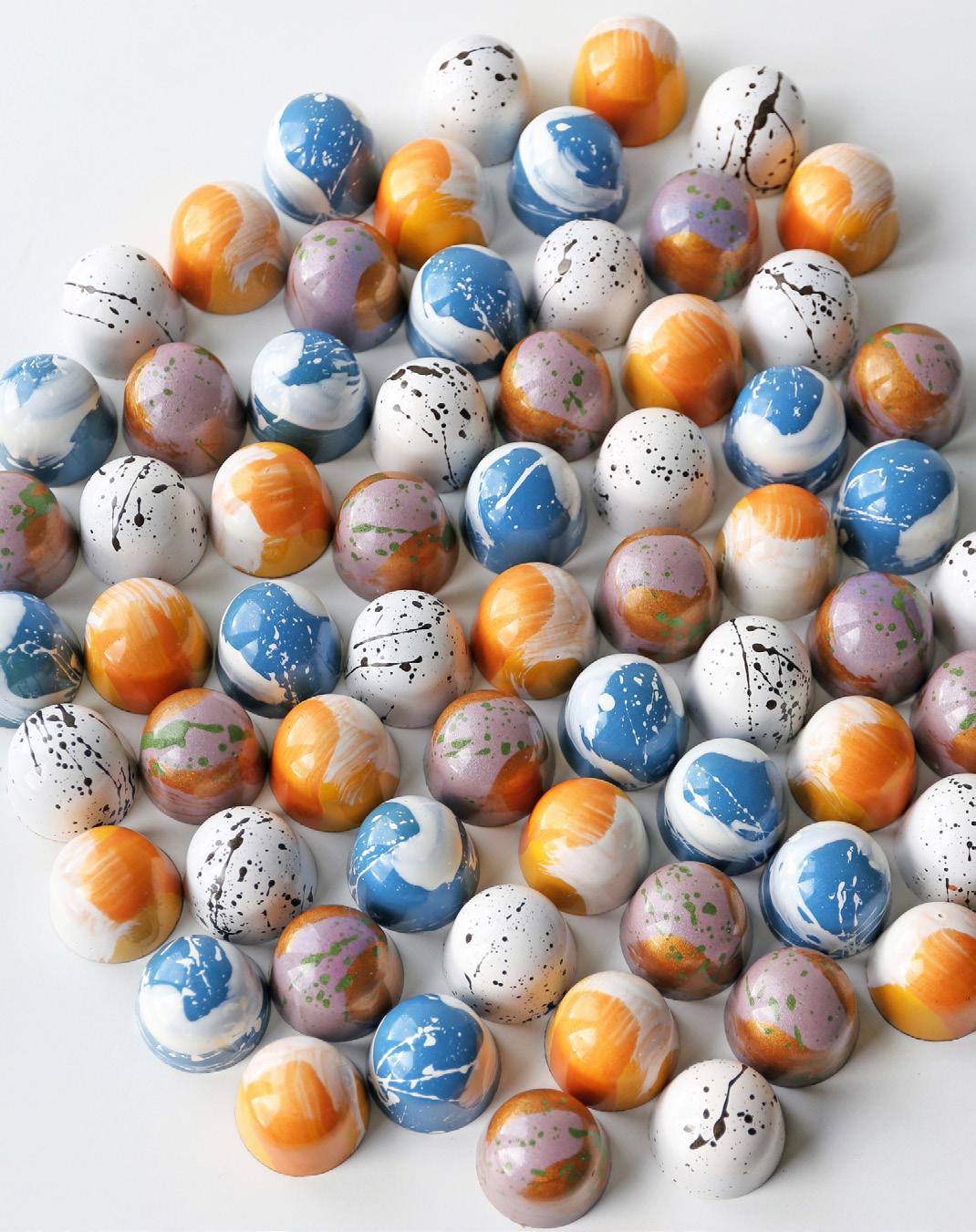
John has also had to look at how to cut back – and is similarly uncompromising on quality:
‘We’ve just moved into a lovely new factory, so it’s exciting times for us. We will never compromise on quality. It’s the cornerstone of our business. We also use local produce, so I always know where my butter and cream comes from. We might look at adding a little more local honey or honeycomb into a solid bar and using a bit less chocolate. We are looking at reducing our margins, and we are looking at trying a few different products.’
Maintaining quality is one issue, but sustainability is not as simply tackled, John says. ‘Fair Trade is not everything. For example, the Ethiopian coffee producers didn’t want to join Fair Trade because they have quality coffee beans and knew they would have to give away seven per cent of their profit margins. Fair Trade is for bigger producers.
‘And is it fair that charity shops, which pay little or no business tax, can sell these products, when small businesses are taxed at a higher rate? I don’t think Fair Trade is fit for purpose for small businesses. What is needed is a fair trade concept for small producers.
‘Keeping our craft alive is the core of the business.’
When you are shopping for your Easter chocolate fix (or any chocolate shopping, for that matter), don’t forget to support Dorset’s local chocolatiers –your taste buds will thank you.
• thelittlehousedorset.com
• dorsetchocolate.com



•Hedge cutting services
•Hedge
•Hedge & tree planting
• Large or small loads welcome.
•Collection service, or have us mulch it at your property.
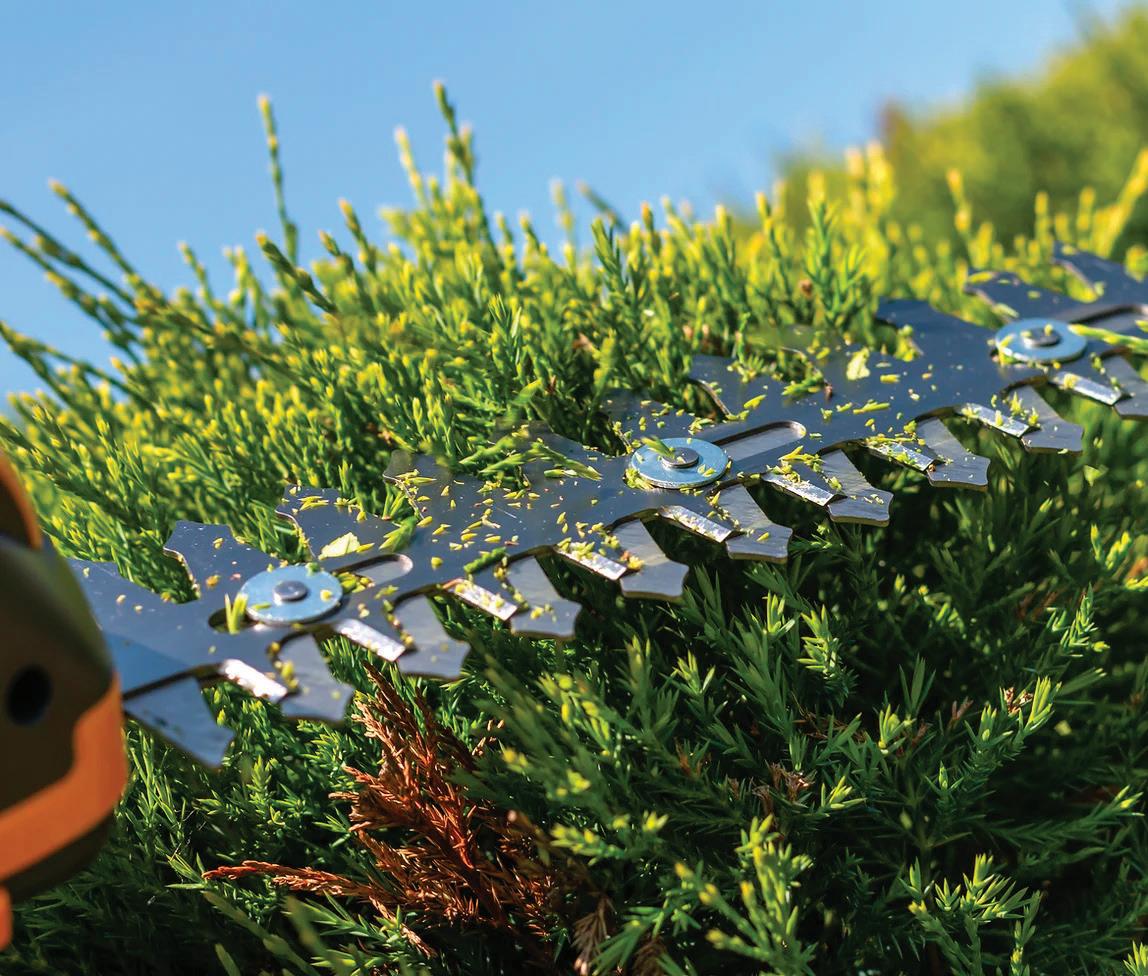
• Professionally installed, or repaired.
• 10 year guarantee!
•Free quotes, fixed rates.
• Based in Shillingstone, we cover all of Dorset, and surrounds.




The Grumbler – the open opinion column in The BV. It’s a space for anyone to share their thoughts freely. While the editor will need to know the identity of contributors, all pieces will be published anonymously. With just a few basic guidelines to ensure legality, safety and respect, this is an open forum for honest and unfiltered views. Got something you need to get off your chest? Send it to editor@bvmagazine.co.uk. The Grumbler column is here for you: go on, say it. We dare you.
Oh, look – another Town of Culture has been crowned! This time it’s Wimborne for 2026, given £30,000 to ‘celebrate culture’ and, supposedly, benefit the community.
It seems I have officially entered my Grumpy Old Woman phase, because this just rubbed me the wrong way when I saw it. Why is it always one town at a time? What about the rest of Dorset? Why are we being asked to clap along while one place gets all the attention, and the rest of us are left with nothing more?
Dorset is packed with culture from coast to countryside.
Thomas Hardy, William Barnes, local theatre groups, festivals, music, art – we’ve got it all.
But instead of celebrating that as a whole, we’re pitting towns against each other like it’s some bizarre talent contest? And for what? A few one-off events that come and go, leaving barely a trace? Take Bridport, for example, which held the Town of Culture title in 2024. It had a Quilt Walkabout, Small World Festival, some exhibitions, and a literary festival – very nice, if you live there. But what difference did it make to those of us in other parts of Dorset? Did my little village get a travelling theatre or a community arts project? Did local children suddenly get new opportunities in the arts? No. It all stayed in Bridport. And now we’re expected to believe Wimborne’s turn will somehow be different?
And let’s not forget Portland and Weymouth – they’re ‘it’ this year. It will be astonishing if Portland enjoys any economic benefit from this title. I expect the main
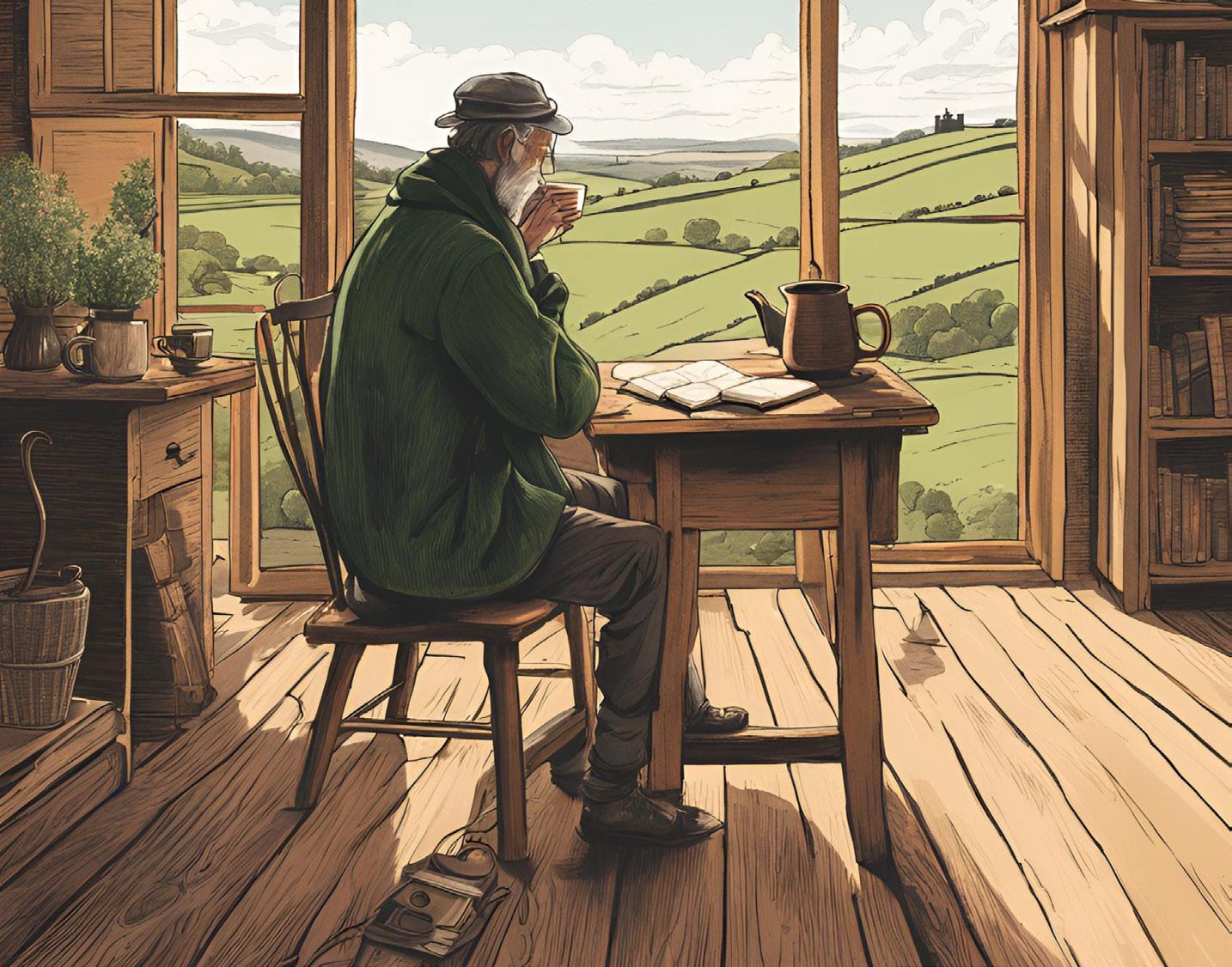
winners will be the same people who always benefit – not the locals struggling to get by, but the organisations pocketing the funding for ‘consultations’ and ‘strategic planning.’
And then there’s the money. £30,000 might sound like a lot, but a quick look told me that Dorset Council has already handed out £1.45 million over three years to 28 cultural organisations, including museums, theatres and rural touring companies. So, if Dorset is already doing so well supporting the arts, why are we pitting towns against each other? Shouldn’t we be thinking bigger? Maybe there should be a proper levelling-up plan that supports the cultural deserts of rural Dorset – but wait, we already have Artsreach, which does a brilliant job bringing theatre and the arts to forgotten areas on a shoestring budget. If culture really needs investment, why not give it to them instead of
creating another shiny but shortlived title?
Meanwhile, the rest of us are dealing with rising costs, disappearing public services, and food banks busier than ever. If Dorset Council has £30,000 spare, why not keep libraries open. Support community spaces. Help families who can’t afford music or art classes for their kids. I love the arts, but I’d also love to know I can pay my energy bill next winter.
This Town of Culture idea might have started with good intentions, but it feels like little more than an expensive PR exercise, decided behind closed doors with no input from the people who actually live here. Instead of playing favourites, let’s talk about what would really make a difference – culture that belongs to everyone, all the time, not just those lucky enough to be in the right postcode when the money rolls in.


Playing songs from the Cavern Club & Hamburg early days, Beatlemania, Sgt Pepper/Magical Mystery Tour, White Album & Rooftop eras complete with costume changes. W H A T ' S O N @ T H E E X C H A N G E
SATURDAY 29TH MARCH

An evening with the former Chief Political Correspondent for the BBC & ITN, political editor, broadcaster and author. Also seen on TV’s The One Show, Have I Got News For You, QI, Room 101 and Strictly.
FRIDAY 25TH APRIL
The multi award-winning folk music couple continue to exude timeless class with their exquisite brand of traditional and contemporary acoustic music
SATURDAY 22ND MARCH

SAT 5TH APRIL


From Thatcher’s press pack to Strictly’s dance floor – ahead of his visit to Sturminster Newton, John Sergeant shares shocking biscuit news
Few journalists can claim to have been shoved aside by Margaret Thatcher’s press secretary, reported live from war zones and also waltzed their way (somewhat clumsily) into the nation’s hearts on Strictly Come Dancing. But John Sergeant is no ordinary journalist.
A veteran broadcaster with a career spanning more than five decades, John has interviewed prime ministers, reported from global conflict zones and witnessed history first-hand –standing at the Lincoln Memorial as Martin Luther King Jr. delivered his iconic I Have a Dream speech. Yet, despite his serious journalistic credentials, it was his gloriously uncoordinated yet utterly charming stint on Strictly that cemented his status as a national treasure.
With the judges despairing and the public voting in their droves, he famously bowed out of the competition in week 10, saying: ‘The trouble is that there is now a real danger that I might win the competition. Even for me, that would be a joke too far.’
From Have I Got News For You to insightful documentaries on Britain’s history, John’s career has been nothing if not varied. He will be coming to The Exchange in Sturminster Newton on Saturday 29th March for an evening of humorous and thought-provoking conversation filled with anecdotes and recollections about his career (and Strictly).
But today, we set aside politics and polkas to put him in the hot seat for some incisive, intelligent (and truly random) questions …
John Sergeant

1. What’s your relationship with Dorset?
When I was a child we used to holiday here – a fortnight in a wooden hut in Burton Bradstock. No electricity, no running water, and in the evenings our mother would sit by a paraffin lamp and read us stories. It was an unforgettable adventure. Later on, I filmed in Dorset for the One Show and made documentaries, and I often went sailing in Poole Harbour on a friend’s boat. But holidays when you are a child are always the best.
2. The last song you sang out loud in the car?
Singing in the car? I don’t do it! At my age, when you’re driving you just spend your time trying not to hit people.
You can’t just lean back and start singing. That would be madness.
3. The last film you watched?
The last big film I made an effort to see in the cinema was Napoleon, directed by Ridley Scott. And it was AWFUL. Dreadfully boring and dull. And whatever you say about the real
Napoleon, he wasn’t that. We’d gone to all the effort of seeing it in the cinema, too – we were cheated.
4. It’s Friday night, you have the house to yourself, no work is allowed. What will you do?
I’d read some newspapers. I use PressReader on my iPad, and try and read half a dozen newspapers a day – around five in English, and one in French. Years ago I was the Paris correspondent for the BBC, and my French was terrible – I’m trying to catch up. I’d definitely do that job better now, just because my French has improved!
immediately need to start talking about it: what will we be eating today? And when? Where will we get it? Who’s going to cook it? My wife Mary is not a morning person. She can’t think of a worse way of starting the day. She does get more interested and join in as the day goes along though.
9. What’s your secret superpower?
I do not dunk. My mother would not have approved
Concentration. Often to the distress of other people around me – I really go into another world. It’s been a very useful skill, and it allows me to remember small important details. It’s weirdly powerful.
13. What shop can you not resist?
La Galcante – it’s a small shop in Paris near Notre Dame that sells old cartoons, and old newspaper cuttings that you just can’t get anywhere else. I have to go in if I’m near. I’ll inevitably spend good money on something that, once it’s home, is never as funny as when I saw it in Paris.
14. What little luxury would you buy with £10?
One of the others is the Wall Street Journal, just to try and see if I can figure out what Donald Trump is up to. I often don’t succeed at that.
5. The best biscuit for dunking. I do not dunk. My mother would not have approved – it would have been letting the side down. She was born in Russia, and wanted to climb the social ladder. Dunking was not middle class enough.
6. What’s a sound that makes you happy?
Waves on the seashore. It takes me back to my childhood in Dorset. And lots of sailing trips around the world, with me at the helm.
7. What would you like to be remembered for?
Being amusing. I really do love to make people laugh. If I have made a joke that people find funny, it genuinely makes my day. Much more so than being brilliantly serious.
8. Your most annoying trait?
I am a morning person. And when I wake up I am hungry My first thought is food, and I
10. What was the last gift you gave or received?
My brother’s not been well, and I bought him a book while he’s been in hospital – called Orbital, it’s the last Booker prize winner. It was written by Samantha Harvey, a woman from Somerset who’s never been in space, and she’s written about six astronauts just sailing around the earth. Now I’ve interviewed an astronaut myself, and listened to many others – and my god they’re dull. But this book is brilliant, it’s such crazy writing skill. It really shows the power of descriptive writing. It’s amazing. Pure talent.
11. What’s your favourite quote?
It’s an obvious one, but Seize The Day – carpe diem. Don’t waste a minute because life is short. I just think any day in which you don’t learn, or do, or achieve, is a wasted day.
12. What’s your comfort meal?
In general I’m perfectly happy. But If I do need comforting, then it has to be good.
Let’s say a dozen oysters, with a very good bottle of white burgundy. If you’re going to comfort yourself, you’ve got to go over the top.
A really expensive tin of speciality tea, preferably black leaf tea from Assam. I was once filming for the BBC on a tea plantation near Darjeeling in India. We were high in the mountains, surrounded by all the local women picking tea – and they all began to giggle, whispering and nudging each other. It turned out that one of them had told the others that I was there to look for a wife. I couldn’t talk to any of them after

‘If you’re going to comfort yourself with food, you’ve got to go over the top’
that without them starting to giggle – it’s such a fun memory. They couldn’t stop laughing at me. So a speciality tea from northern India isn’t just delicious, it reminds me of that special moment. I’ll happily travel 10,000 miles for a good joke.
15. The best crisps flavour?
None. It should be just plain crisps, lightly salted. Any other taste seems just silly. If you want cheese or vinegar, go out and buy some.
16. Tell us about a recent great evening
I went with my wife to the Royal Opera House - we had a brilliant meal in the Crush Room, and then saw a modern opera called Festen. Mary’s a teacher, and she had taught one of the cast. It was an extraordinary show, not an easy watch, but it was a fantastic cast, the staging and lighting were superb ... it really was top grade British talent. And I just thought if not London, where? Nowhere. We all moan about the decline of Britain, but British talent is fantastically strong. It cheers me up. I spent far too much, mind ... but it was a perfect evening.
17. What in life is frankly a mystery to you?
Why my wife fancies certain famous people. I just don’t understand the strange fascinations. She’ll sometimes ask me to introduce her to someone

and I’ll be entirely blank. I mean, yes, he’s alright, but no need to be silly ...
18. You favourite book from last year?
The Collected Dorothy Parker. She was such a brilliantly witty American writer, famous for founding a writing circle who used to meet at the Algonquin Hotel in New York. Just before Christmas I gave a series of talks on the Queen Mary, crossing the Atlantic, and when we got to New York, Mary and I stayed four nights at the Algonquin. It’s been refurbished but they still have a round table in the hall where she and other writers, including Groucho Marx, used to meet. One of my favourite quotes of hers is ‘Never complain, never explain’ which of course the British Royal family adopted. It’s such a clever phrase. If you’re thinking about moaning - just don’t. Then if you’re feeling the

need to start talking, to explain why the thing is bad, why you want to moan, why someone’s at fault ... still don’t.
The other one I love is ‘Men seldom make passes at girls who wear glasses.’
It’s just so fun – and every word is chosen with care. The ‘seldom’ is the key word there, it’s just clever word play. And of course, short sighted girls can come right up close to you so they can see you, which is attractive!
19. You have the power to pass one law uncontested – what would you do?
Ban adults from riding their bikes on the pavement. It’s a clever one this. Because obviously it’s the teenagers who are the nuisance, but if you ban them, they’ll ignore it. BUT ... if you allow little children to do it but ban the adults, teenagers are so desperate not to be seen as children that they’ll lump themselves into the adult ban voluntarily. See? It’s a sophisticated level of control.
• An Audience with John Sergeant will be held at The Exchange in Sturminster Newton on Saturday, March 29th at 7:30pm. Tickets £20, available online: stur-exchange.co.uk


Pauline Batstone shares her monthly round up of what’s happening among the town’s collection of community enterprises and events
The Marketplace is the new name for the furniture recycling part of Stur’s quartet of community benefit shops. It’s had a bit of a makeover with new signs in the windows to brighten up the old bank facade. Not only that, we have some fantastic pieces of newly donated furniture, loads of mirrors, cushions and so many bags – of all types –ready for a new home.
Pop in and see us whenever you are in town and hopefully we will have something you like! The Boutique is running a March Madness clearance sale – ANY FIVE ITEMS FOR £10! What a bargain! Come and fill up your bags with lots of fabulous goodies. March Madness will be hapenning until the 15th March. And if you’re in Stur it’s basically obligatory to go for a potter around the Emporium –
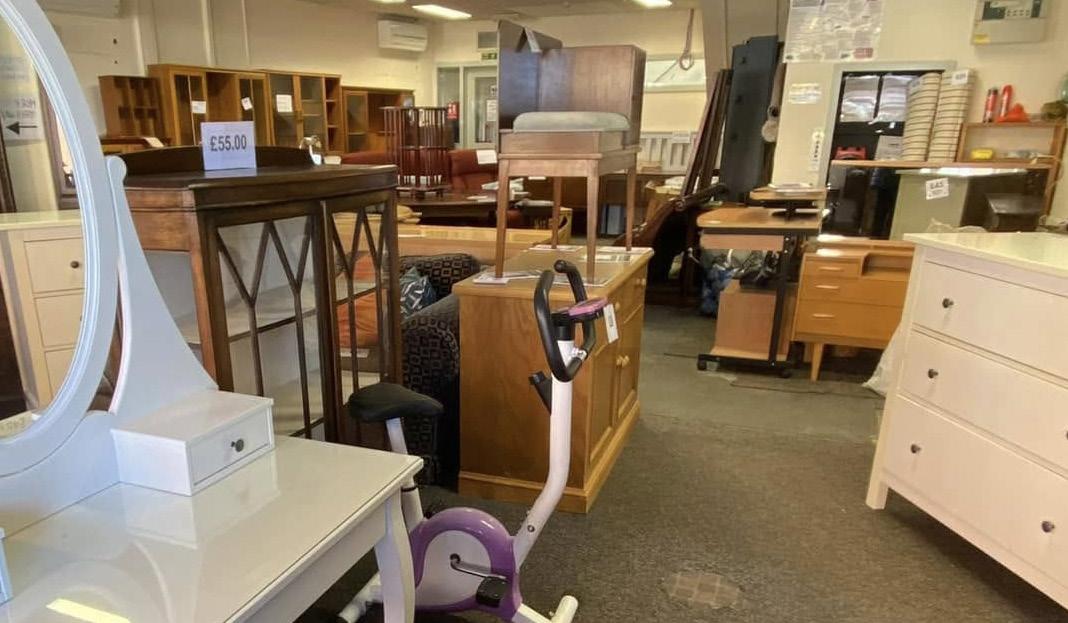
Upstairs in the Marketplace we have a large selection of pre-loved school uniform all completely FREE OF CHARGE. Please do come and help yourselves – and of course if you have any uniform in good condition that you no longer need, please bring it in to add to our collection.
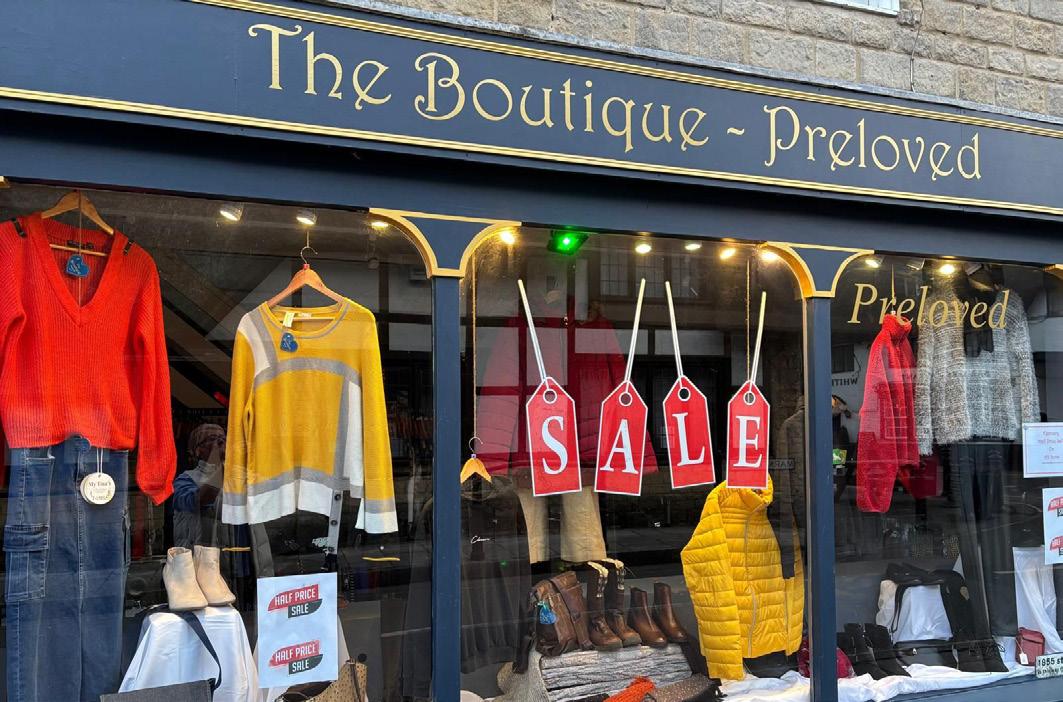
it’s tricky to leave without *something* you definitely didn’t know you needed.
A list of the town events over Easter will be available online and in our shops very shortly. The 2025 Stur Literary Festival (6th to 15th June) brochure will also be available in the next few weeks. In the meantime their Facebook page is a good place for their latest news.




Want to reply? Read something you feel needs commenting on? Our postbag is open! Please send emails to letters@BVmagazine.co.uk. When writing, please include your full name and address; we will not print this, but do require it.
On when the last bank leaves town
(The BV, Feb 25)
I am happy with my iPad – obviosuly, or else I would not read The BV! – but I do not, and will not, do my banking on an app. I like to speak to a real person when dealing with my money, not tap away on a screen and hope for the best. But with the last bank in town gone, what choice do I have? Not everyone wants or trusts online banking, and cash is still king in many parts of rural Dorset. Closing branches might be convenient for the banks, but it’s a disaster for those of us who rely on them.
Arthur Jennings, Sherborne
The closure of our last local bank is more than an inconvenience; it’s a severance of community ties. Not everyone is comfortable or capable with online banking, particularly the elderly. We must find solutions that include everyone, ensuring no one is left behind in this digital shift.
Margaret Thomspon, by email
As a small business owner, the loss of our local bank branch is a significant blow. Daily cash deposits and face-to-face consultations were vital. While digital banking is useful, it cannot replace the personal service that understood our community’s unique needs.
James Carter, address supplied
I recently had the unnerving experience of driving behind my 80-year-old mother at dusk. What should have been a short journey quickly became a white-knuckle ride – braking erratically at every oncoming car, struggling to reverse in a single-track lane, alternating between too fast and too slow, and entirely unaware of an approaching junction. It was painfully clear: she shouldn’t be driving in the dark. But here’s the problem – how do we broach that conversation? In rural Dorset where there’s little to no public transport, cars are lifelines for the elderly. Taking away the keys is taking away their independence. But safety has to be paramount - for them and for every other road user. Watching her falter on the road, I knew the conversation couldn’t be avoided, and for now we have a halfway house where she will only drive in daylight. We need more awareness, support and
alternatives for older drivers in rural areas. And perhaps a driving test for over 75s? We wouldn’t let a 16 year old drive if they weren’t competent at reversing, after all.
Joanna Spencer, Sherborne
On the Grumbler’s greenwashing land grabs (The BV, Feb 25)
As a young farmer, I found the Dorset Insider’s column on greenwashing land grabs refreshingly honest. Too often, developers use buzzwords like ‘rewilding’ and ‘sustainability’ to justify carving up farmland for projects that do little for the environment – or the rural communities they displace.
True sustainability means protecting working farms, supporting local food production, and ensuring that so-called ‘green’ initiatives don’t just serve as a front for profit-driven land grabs. If we lose productive land under the guise of environmentalism, who benefits? Certainly not farmers, wildlife, or future generations.
Thank you for calling it out. More people need to.
HC, Sturminster Newton
That photo competition
I was excited to see the North Dorset photography competition—until I read the terms. Do entrants realise they’re handing over the rights to their images for free, in perpetuity, for Dorset Council to use however it sees fit?
Professional photographers get paid for this kind of work, yet the Council has found a clever way to build a marketing library at no cost. It’s particularly galling coming from a county that claims to support the arts. Photography is a skill, an art form, and – crucially – a profession. By taking advantage of enthusiastic amateurs, the Council undermines those trying to make a living from their craft. If North Dorset’s beauty is worth promoting, it’s worth paying for. Instead of exploiting local talent, Dorset Council should invest in it.
Tom Harding, Shaftesbury
Beware the dead cat on the table
My very-politically-aware granddaughter recently gasped in horror when I declaimed something as a ‘dead cat’. It transpired she’d never heard of the dead cat strategy: given the times we live in, I think more people should.

The idea is simple: when you’re an authority in trouble, throw a metaphorical ‘dead cat’ on the table – something so outrageous that everyone talks about it instead. While they’re gasping at the spectacle, the real issue quietly slips by unnoticed. Next time a politician says something scandalous or a headline seems designed to provoke, don’t just react – look around. What else has been announced? What policies, cuts or controversies are being buried beneath the noise?
It’s an old trick, but one that works best when people don’t see it coming. So let’s make sure we do.
Geoffrey Markham, Beaminster
On Four horses
Jess Rimmer’s Four Horses, Eight Tests had me laughing into my coffee. Anyone who’s ever sat on a horse (or fallen off one) knows the chaos she so brilliantly captured. The mix of determination, disaster and sheer equestrian lunacy was spot on. More of this, please – Dorset’s riders need the laughs!
Emily H, Nr Stur
On George H and the beavers
I read with interest George Hosford’s recent column on flood management strategies, particularly his cautious stance on beaver reintroduction. While I appreciate his concerns about potential tree damage and unpredictable flooding, it’s important to note that beavers have been shown to create natural infrastructures that can mitigate flood risks by slowing water flow and enhancing wetland ecosystems. With appropriate management and strategic planning, the benefits of beaver activity can be harnessed to complement traditional flood defences.
Given the increasing frequency of extreme weather events, integrating some nature-based solutions like beaver reintroduction could bolster our resilience against flooding.
Alexandra Green, Dorchester
On Mike H
I read last month’s letters page with equal parts joy and frustration. What business does your correspondent Mike H have in teasing us so? A lifetime of music, world-class orchestras, and a trip to La Scala – then he leaves us hanging!
Please, I implore you, go back to Mr H and request – most strongly – that he tells us more. Where else has he played? What were the highlights? Which performances sent shivers down his spine? And, most importantly, what did he love to play?
A Dorset gem like this must not be left to retire quietly into nature-watching without sharing more of his remarkable story.
Caroline Foster, by email


When it comes to giving advice, we take the time to get to know your business and what you want to achieve, whilst making sure that we explain your options in everyday language.
By working with us, you can be confident that whatever decisions you make, they’ll be based on sound legal advice that’s in your best interest.


As always, just click to complete on your tablet, computer or phoneor there’s a download ‘PDF’ option if you prefer pen and paper.

Jigsaw A rare sunshine day in February on Chesil Bank – just click to complete!


7.30pm, Dining Hall, Sherborne School




Born in Ipswich but raised in Oklahoma, and fed an eclectic diet of music ranging from Parliament to Neil Young from a young age, Bartees Strange was always likely to bend genres. But rather than combining multiple elements to produce a unique sound, he has always tended towards a more ‘jukebox’ approach when piecing together his albums, with limited success.
But on Horror, his third studio LP, Strange has perfected the art of breaking genre altogether: creating an album which feels more like an expertly crafted mix compilation than a solo record. And while there is a nod towards a concept with a strong lyrical theme (“I get scared of erasure ‘cause it just seems to happen”, “Don’t fear what’s comin’, our blood’s the connection to truth”, “Buckle my knees, for miles afraid of the open road”), the record never feels restrained by its nominal theme of facing ones fears.
The reference points and frequent sharp turns into new sonic territory make the album feel much shorter than its 42-minute running time and satisfy the listener with every new hook.
Hit It Quit It opens with a classic Motown drum fill, before blending disco vibes with a four-to-the-floor rock chorus reminiscent of erstwhile Croydon ninepiece Do Me Bad Things.
Wants Needs starts like classic Foo Fighters before settling into a hard rock / RnB hybrid.



Lie 95 combines Prince’s vocal delivery with an MGMT-style big indie chorus and throws in some Neil Young (“Mining for a heart of gold”), just for good measure.
But the highlight of the album draws on much more subtle influences. Baltimore is pure, understated Americana, with an arrangement reminiscent of Cold Roses-era Ryan Adams combining with a melody which would have felt at home on David Ramirez’ high point, 2015’s Fables. It provides the solid perch around which the rest of this stunningly surprising record can spread its wings and fly. The first great record of 2025.
• Matthew Ambrose presents Under The Radar on Tuesday evening at 7pm on Abbey104. Broadcasting on 104.7FM and online at abbey104.com.


The Exchange has a new display space in the Atrium on the lower ground floor. If you’re coming for a show, looking for somewhere quiet to enjoy an interval drink, or just passing though, The Exchange and the Sturminster Newton Heritage Trust have collaborated to bring some of the Museum’s collection to a wider public. Their opening display is of tinware made by Fred Cowley in the very early 20th Century, before his family business developed into the plumbing and heating partnership, still trading in the town 125 years later. Alongside this is a screen showing film from and about Sturminster Mill: it will be running whenever The Exchange is open.
The second space is managed by The Exchange and will show a mixture of local history and what is going on in Sturminster today – an opportunity for local groups to tell a wider public what they do and why. At the moment, and for a few weeks more, there is a display about William Barnes, the Dorset Poet, who started his
distinguished life in Bagber, just outside Sturminster Newton. This has been put in place by the William Barnes Society timed perfectly for the popular ‘Tea with William Barnes’, which took place on 23rd February. This event, brought into being by Artsreach, is an annual celebration of Dorset culture, proudly hosted by The Exchange, and it sells out well in advance every year. It is also live-streamed across the British Isles and over the Atlantic. The event includes historic folksongs and tunes collected from the whole county and from the Hardy family songbook, new settings of Barnes’ poetry, traditional work by contemporary musicians and dialect poetry readings. The culture of Dorset is still in good shape, with much credit for that due to William Barnes, whose poetry and learned works have preserved the dialect he grew up with.
During the 1850s Barnes was instrumental in the setting up of the Dorset County Museum. Now the Barnes For All campaign is aiming to raise £35,000 to fully catalogue and

digitise the Barnes archive and make it available to future generations. Do come and see some reminders of this distinguished local scholar and the other items on display now and in the future – and look out for the celebration of Dorset culture in Sturminster Newton, coming in 2026.
After a five-year fundraising campaign led by Yeovil Hospital Charity, the new Maple Unit – Yeovil Hospital’s first-ever stand-alone, purpose-built breast cancer unit is open. The campaign, launched in March 2019, saw support from the community, former patients and hospital staff, with hundreds of fundraising events helping to raise nearly £2.9 million to bring the unit to life. Fundraising efforts are still ongoing, with Yeovil Hospital Charity continuing to collect unwanted and broken jewellery and watches – a campaign that has already raised more than £210,000 – for much needed funds for other areas of the hospital. Most donations are sold at Acreman Street Auctions in Sherborne, whose generous support has been

invaluable. If you have any unwanted jewellery to donate, feel free to drop it off at main reception of the hospital.
Breast cancer affects both men and women at any age, bringing devastating challenges not only for those diagnosed but also for their families. This new unit will provide life-changing care and support for local residents facing breast cancer.

The Museum of East Dorset is inviting local knitters and crocheters to contribute handmade woollen flowers to marking Dementia Action Week (19th–25th May) with a special Forget-Me-Not display, in support of those affected by dementia.
Forget-Me-Nots are the symbol of the Alzheimer’s Society campaign, which brings people together each year to honour and remember those living with dementia. The museum is requesting crafters use the pattern here, and free wool in blue and yellow is available from its reception desk. The museum team hopes to collect hundreds of flowers to create a striking display.
Museum Director Francesca Hollow said: ‘We’d love people of all ages to take part – whether grandparents and grandchildren, school groups, or craft clubs. It’s a wonderful way to show support for those affected by dementia.’ Completed flowers should be returned by 23rd April so volunteers can assemble the display in time for Dementia Action Week.
Francesca is also happy for forget-me-knots to arrive by
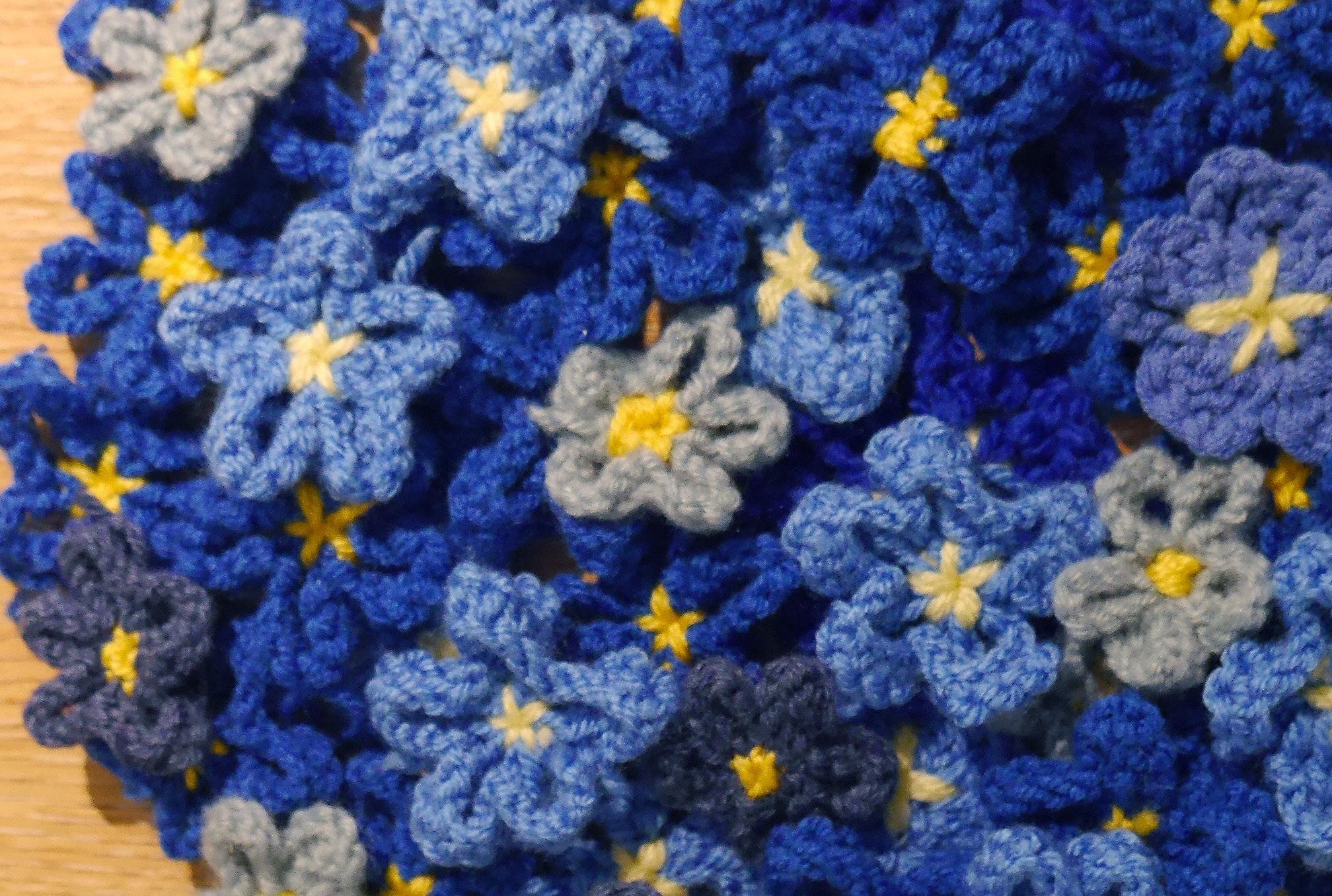
post (please send them to 23-29 High St, Wimborne BH21 1HR), and the team are open to fabric forget-me-knots too, if you’re a sewer not a knitter!
The Museum of East Dorset runs a variety of dementia-friendly programmes to support the community, including:
• Reminiscence Outreach Project – Using museum artefacts to spark memories and conversation, these sessions are delivered by experienced volunteers in

care homes, day centres, and senior clubs across East Dorset.
• Times Gone By reminiscence sessions – Held monthly at the museum in partnership with Wimborne Library.
• Jolly Days at the Museum – Run by In Jolly Good Company, these engaging sessions focus on music, crafts, and gardening to improve mental and physical wellbeing.
• Craft and Chat on the third Monday of the month – A relaxed, social crafting session where visitors can bring their own project, try new crafts, and enjoy a friendly natter.
The museum also provides dementia-friendly crockery in its garden café, along with fidget accessories to help visitors feel more comfortable.
• The Museum of East Dorset is open Monday to Saturday, 10am to 4pm. For more information about dementiafriendly activities, visit museumofeastdorset.co.uk.

Newstone House Care Home in Sturminster Newton has raised £2,441 (and one penny!) for Sturminster Newton Heritage Trust following a year-long partnership in 2024.
The trust, which oversees the town’s iconic mill and museum, collaborated with the care home to bring local history to life through events, talks, and a successful Christmas fair.
Newstone House, built on the site of the town’s former creamery, played host to a series of afternoon events celebrating Sturminster Newton’s heritage, engaging both residents and the wider community.
To mark the success of the
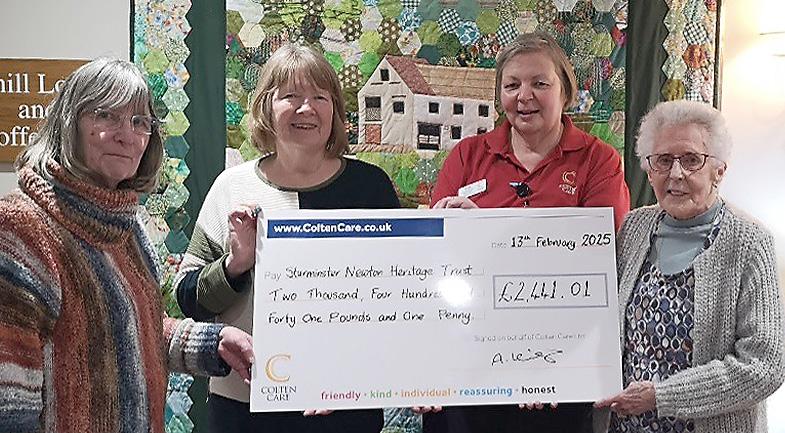
fundraising efforts, Home Manager April King and resident Elaine Greensmith presented a cheque to Heritage Trust Trustees Jane Palmer and Zilla Brown.
With another charity partnership ahead for 2025, the care home is now setting its sights on surpassing this impressive total in the year ahead.
The highly-anticipated Vale Pantry Family Hub Food Bank Run returned on Saturday 22nd February. It’s an event that has become a cherished tradition over the last three years, hosted by the ever-enthusiastic Dorset Doddlers running club. The communitydriven event combines fitness with generosity as runners came together to support local families through food and monetary donations.
A special moment this year was the opening of the new Vale Pantry Family Hub in Sturminster Newton. This expansion allows the pantry to offer even more valuable services to families in need, in addition to their already popular social supermarket. It was the perfect backdrop for this year’s run, emphasising the growing role the Pantry plays in supporting families throughout the community. More than 50 runners, ranging in age from five to
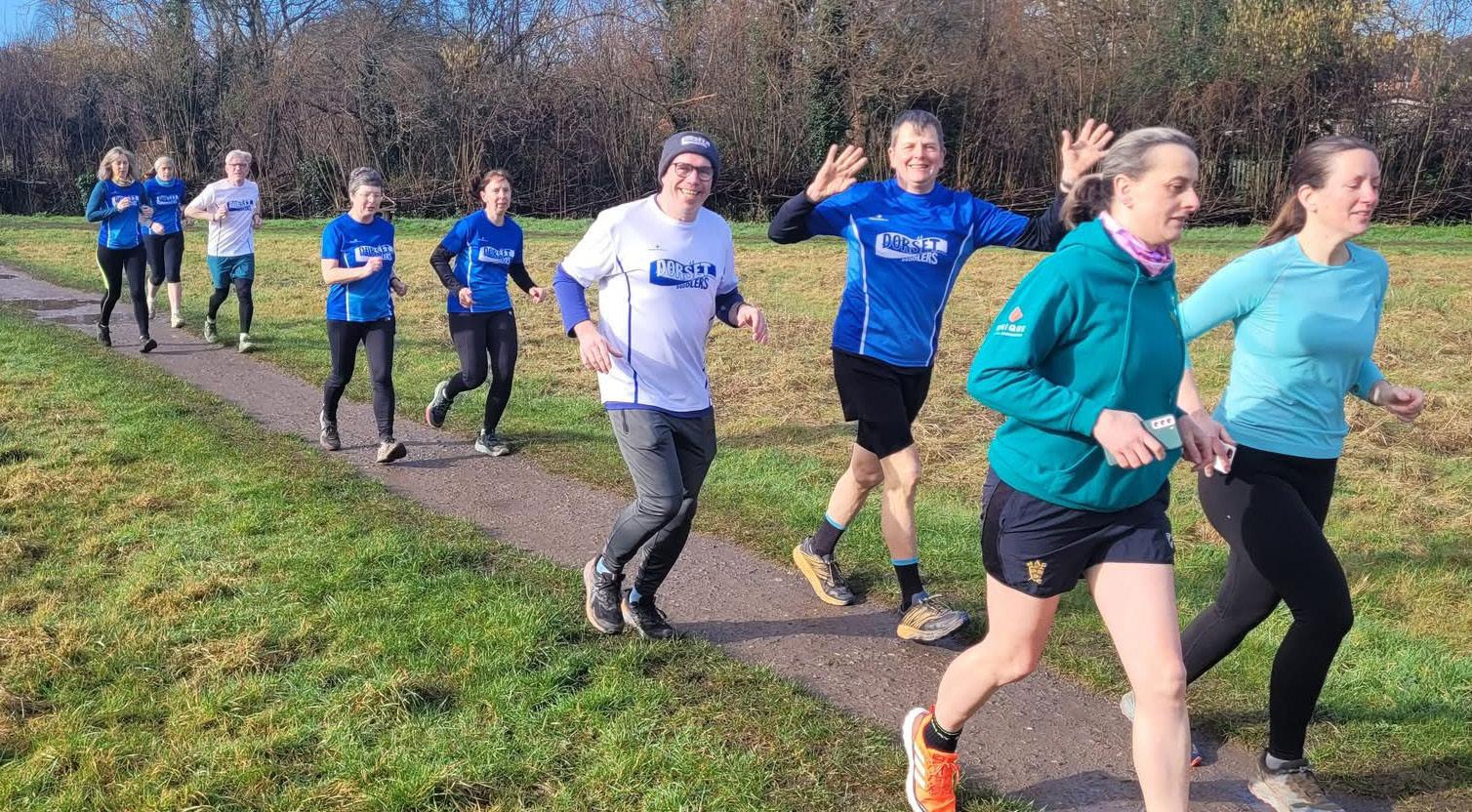
(well over!) 50, gathered at the start line, excited to tackle one of three routes covering one, three or four miles. The Dorset Doddlers, known for their welcoming and friendly atmosphere, led the charge, ensuring everyone felt supported no matter their pace. With a mix of seasoned runners and those just getting started, there was a real sense of camaraderie and shared purpose.
The Food Bank Run is a national campaign, where clubs and running buddies run to their local food bank and fill it up in February – the time when many families are feeling the financial strain of the post-Christmas season. With the rise in food bank usage, from 1.1 million people a decade ago to around three million today, the need for events like this is more crucial than ever. Every mile run and every donation made is a small but meaningful step toward easing that burden.
The Doddlers’ event was a tremendous success, raising vital funds and donations for the Vale Family Hub. It was a reminder of how powerful local communities can be when they come together for a common cause – and a reflection of the Dorset Doddlers’ commitment to making a positive impact both on and off the track.
The Doddlers’ wish to extend a huge thank you to everyone who participated, donated and volunteered – your support makes a real difference!

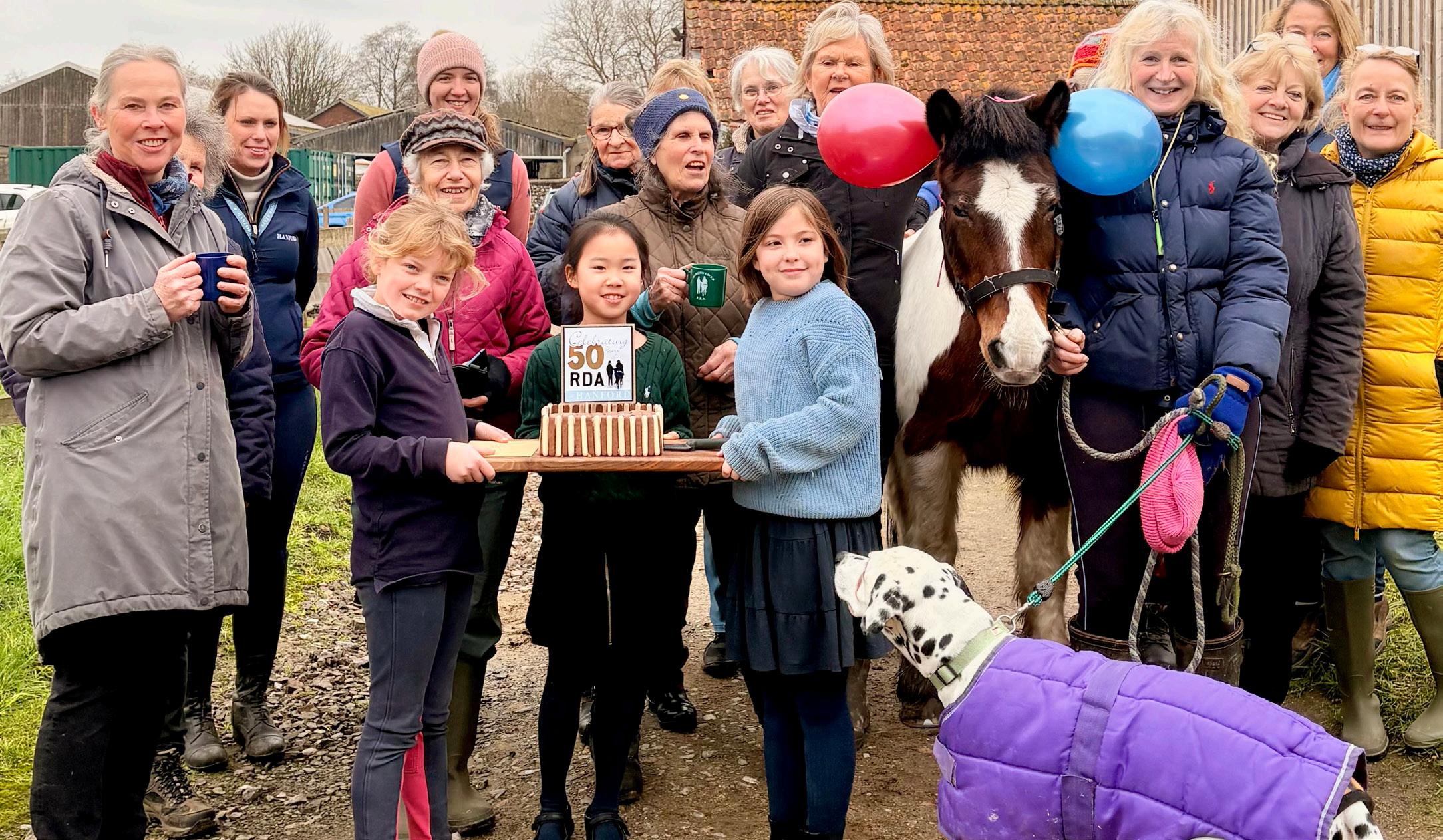
Pupils, staff and ponies came together last month at Hanford School to mark a major milestone –the 50th anniversary of the Hanford Group RDA (Riding for the Disabled).
To celebrate the occasion, Hanford’s younger pupils surprised the RDA volunteers with a specially-baked cake at the end of their weekly riding session. The event recognised the incredible work of the Hanford Group RDA, which has provided life-enhancing riding experiences for children with special needs for five decades.
Theo and Guy
The group, led by Chief Instructor Sandy Millard, has been running sessions at Hanford since 1974, welcoming children from Yewstock School in Sturminster Newton, many of whom are on the autistic spectrum. Each term, a group of around ten children take part, with RDA volunteers guiding

two dedicated ponies, Guy and Theo, on rides around Hanford’s beautiful grounds.
Sandy, who has been involved with the group for 38 years, explained the impact of these sessions: ‘It is so uplifting for the children to be on a pony – the beams on their faces are so rewarding for us volunteers. They’re always so eager to ride that our biggest challenge is encouraging them to get down at the end! Their teachers tell us it’s the highlight of their week.’
Each ride is supported by three volunteers per child, ensuring a safe and engaging experience. The ponies, stabled alongside Hanford’s own riding ponies, are also cared for by the school’s dedicated stables team and receive plenty of attention from the pupils.
Charley Pearson, head of riding at Hanford, said: ‘Riding is at the heart of life at Hanford, and we see daily how much our pupils benefit from being around and riding ponies. To be able to share this with children from the wider community is something we truly value.’
Hanford Group RDA also held an afternoon tea party for around 35 past and present coaches, volunteers and friends, and enjoyed an afternoon of tea and cake as well as reminiscing and sharing old photos.
• The Hanford Group RDA is always looking for volunteers – no riding experience is required, just a willingness to help, enjoy the outdoors and support children with special needs.
To get involved, contact Sandy via Hanford School Office: office@hanfordschool.co.uk or 01258 860219.



1.45pm, Cheap Street Church (unless otherwise stated) FREE
17th January Strings
24th January Instrumental and Vocal Soloists I
31st January Brass
7th February Woodwind
14th February Instrumental and Vocal Soloists II
28th February Singers
7th March Wind Band (BSR, Sherborne School)
14th March Instrumental and Vocal Soloists III
21st March Pianists



One of the most eagerly anticipated events in the Bryanston school calendar, the A2 Charities Weekend, once again brought the whole community together, raising an impressive £20,000 for both national and international charities. Organised by the Heads of School, the Charities Prefect, and A2 (upper sixth) pupils, the event supported Great Ormond Street Hospital, Child Action Lanka, Ayati, and DBA Africa – all charities Bryanston has worked with over the past year. The weekend kicked off with house-run sweet stalls ahead of the annual Dance Show, followed by a spirited girls-versus-boys hockey match (complete with a choreographed cheerleading intermission). Sunday saw a fun dog show, while the annual fashion show took a new twist, with House Parents and Heads of House swapping outfits. Other fundraising highlights included hamper sales, T-shirt stands and the sale of original fashion designs by two A2 pupils.
A standout moment was the My Voice, My Story performance, a collaboration between Bryanston’s Sixth Form and pupils from the Gill Sherlock Memorial School in Uganda. After months of Zoom meetings, the production combined personal stories, reflections on school life and a shared passion for dance, with all the funds raised going towards performing arts equipment for the Ugandan school.

Thanks to the generosity of staff, parents and pupils, the event raised more than £14,000 from the Silent Auction alone. Bryanton’s head of charities and outreach, Hannah Fearnley, said: ‘This was a very special weekend, once again highlighting the community spirit and compassion at the heart of a Bryanston education. There was such a buzz across the campus with so many activities raising money for great causes. We’re enormously grateful for everyone’s support.’
Wessex Group has donated £5,000 to Marie Curie, the UK’s leading end-of-life charity, following a year of dedicated fundraising efforts. Each year, employees of the Shaftesbury-based company select a charity to support, committing 12 months to raising funds through a variety of initiatives –including challenges, bake sales and the company’s annual Christmas raffle.
The donation was presented to a Marie Curie representative, marking another successful year of fundraising for Wessex Group, which has a longstanding commitment to supporting both local and national charities. Tracey Martin at Wessex

Group said: ‘We are delighted to support Marie Curie and contribute to the incredible work they do. Our teams have come together to raise funds in a variety of ways, and it has been inspiring to see the generosity and enthusiasm from our staff.’
Over the years, Wessex Group has supported numerous charities, including local organisations such as The Brave and Determined Company, who provide access to essential counselling services, and BooBs, Shaftesbury’s breast cancer awareness charity. Kara Frampton at Marie Curie expressed gratitude for the donation, saying: ‘We are incredibly grateful for Wessex Group’s support. These funds will help us continue to provide essential care and support to those who need it most.’
Marie Curie provides vital end-of-life care, offering nursing services, hospice care, bereavement support, and information services to people living with terminal illness and their families.
Wessex Group, based in Shaftesbury, has been providing expert trade services for over 60 years, offering fire and security, electrical, building, and maintenance services across the South of England.

Tucked into the rolling chalk and flint-filled fields near Salisbury is an iconic art institution. NewArtCentre was once known simply as Roche Court – Roche Court Sculpture Park is a commercial gallery set in the rolling Wiltshire countryside. Early in February, three Gillingham School students and one teacher wound their way there, travelling through frosted valleys, sparkling in the winter sun, to Roche Court – which, since 1958, has championed young and emerging artists and is now a gallery full of art and exciting sculpture, placed carefully into the Wiltshire parkland.
The Articulation Prize was founded in 2006 by Roche Court’s Educational Trust and later became part of the National Gallery’s education programme. This prestigious public speaking competition invites 16 to 19-year-olds to deliver a ten-minute presentation on a work of art, architecture, or an artefact. For students at Gillingham Sixth Form, it offers a unique opportunity to engage with art, articulate its significance, build confidence, and explore issues that matter to them.
In January, Gillingham held its internal heats, with seven students – who have been developing their public speaking skills through the Sixth Form’s innovative enrichment programme – delivering presentations on a diverse range of art. Topics ranged from the Nye Bevan Memorial Stones in Wales to Christo and Jeanne-Claude’s Wrapped Reichstag installation. There were stand-out speeches by Beth R, who explored gender and society through the knitted installation Non-Binary Code by Ben Cuavas, and Adam C, who tied art with history and politics in a moving speech about the sculptures at Soviet Memorial Treptow in Berlin, making listeners think about the way society remembers war and sacrifice, providing a poignant reminder of current events in Ukraine.
Travelling to Roche Court in February, however, was Gillingham School’s winner, Katie B, whose heartfelt, personal response to the installation
Can’t Help Myself by Chinese artists Sun Yuang and Peng Yu had moved some of the judges to tears.
Can’t Help Myself became a viral hit across social media: a giant robotic arm, more commonly seen in a car manufacturing line, installed inside a large perspex room or box: it writhes and dances as it tries to mop up its leaking hydraulic fluid, coloured
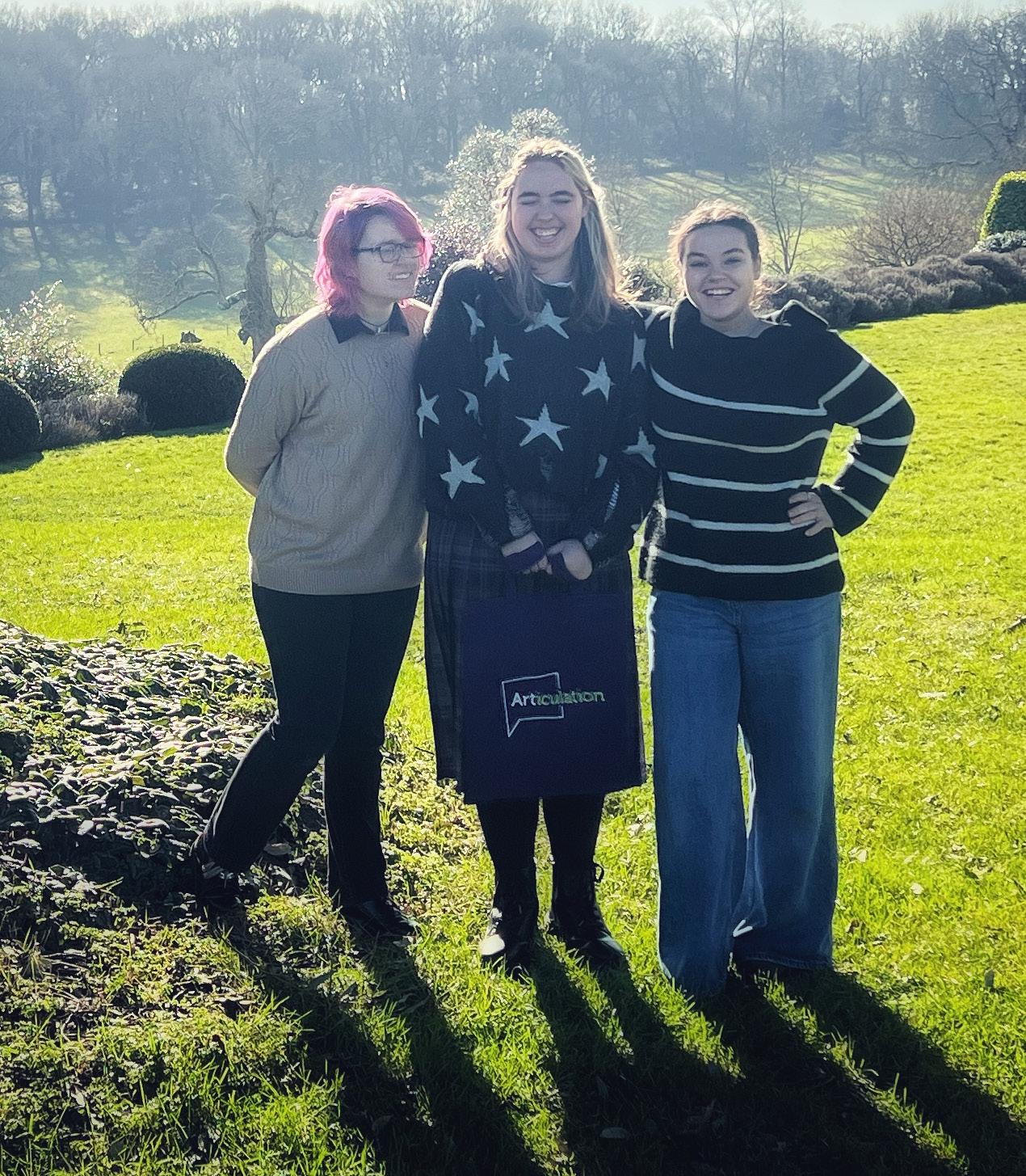
Katie B, centre, gave a presentation on the Can’t Help Myself installation, which was met by a spontaneous round of applause
red and with the viscosity of blood. Katie used this artwork to boldly tackle topics of authoritarianism and migration, exploitative labour practices and mental health and isolation.
Teacher Lydia Richards aid: ‘As Katie stood in the gallery space at Roche Court, it was wonderful to see a young person feel their own power and speak so passionately and persuasively.
‘She was commended by the adjudicator for her stirring words and “clear passion for social justice” which was met by a spontaneous round of applause by the audience, clearly moved by her performance.
‘As a teacher, it is moments like these which really count. The moments when you see the true purpose of education – not just grades and academic achievement, but helping young people find their voices, so they are ready to be the artist of their own lives, to go out and sculpt and shape the world ... perhaps into something better.’
• NewArtCentre is open 7 days a week and is free to visit, but they ask you to book ahead if possible: sculpture.uk.com
• Gillingham Sixth Form is still accepting applications for this September gillinghamdorset.co.uk or contact the school office to arrange for a visit 01747 822 222.

After the runaway success of its debut, the Dorset Spring Show is back – bigger, better and in a brand-new location. The second edition will take place on Saturday 3rd and Sunday 4th May 2025 at Birch Lane Showground, near Puddletown. Following a phenomenal first year, which saw more than 10,000 visitors, the show returns with a larger venue, stunning countryside views, a later date, and exciting new attractions, making it the ultimate spring celebration in Dorset.
The Spring Arena, sponsored by Handelsbanken, will once again host a variety of impressive displays, from the popular highspeed action of Shetland Pony Racing to the traditional craft of Heavy Horse Logging, where skilled foresters showcase how these horses worked the land before modern machinery. Beyond the arena, visitors can meet spring’s newest arrivals – no one can resist the lambs, piglets, chicks and calves.
The show will also feature adrenaline-fuelled BMX displays, live cookery and floral demonstrations, the un-missable
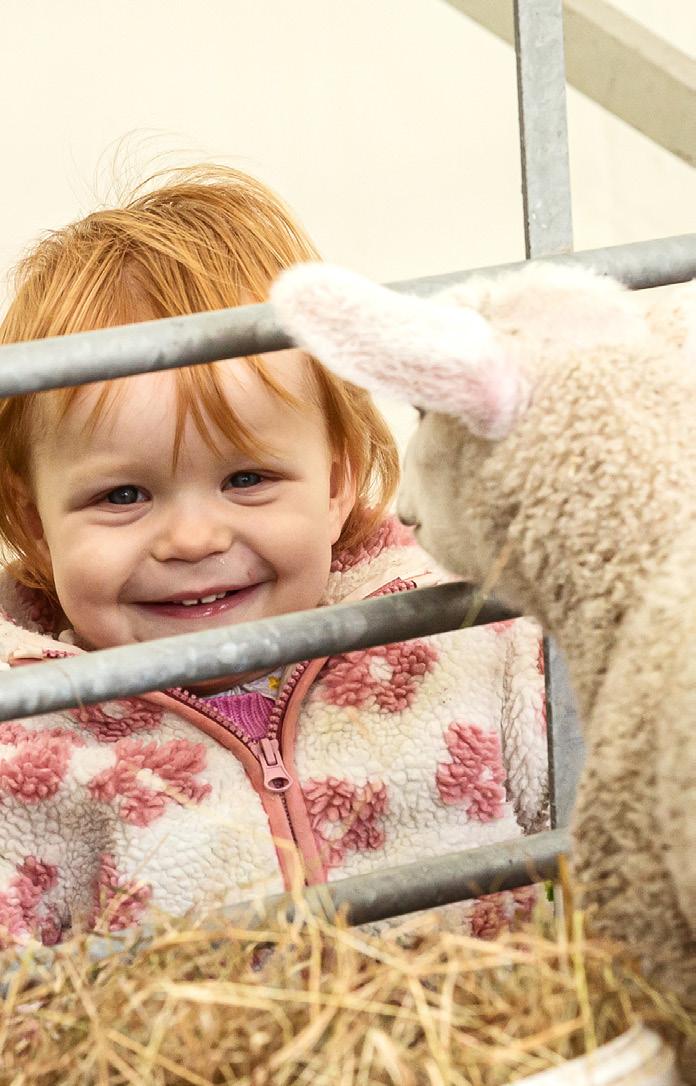
Sheep Show, and jaw-dropping feats from the Dorset Axemen. And for those who love a bit of nostalgia, there’s even the chance to hop on board a steam engine trailer ride and take in the sights. Event Organiser James Cox said: ‘This May bank holiday, we welcome in the new season with the year’s first big get-together for Dorset. We open the farm gates with a larger venue and an even bigger offering to provide a fantastic family day out.
‘The enthusiasm for the Spring Show has been incredible – we’ve already sold out the exhibitor spaces in our Shopping Pavilion and Food Hall: it’s going to be a great place to buy local.’
The Shopping Pavilion and 50-metre-long Food Hall are both must-visit’s for those looking to discover and buy from local businesses. Whether it’s fresh produce, handmade crafts or something unique for your home, there will be plenty to browse and take home. Another unmissable on the day is the Competitions Marquee – playing host to more than 90 contests across cookery, photography, flowers, vegetables and crafts, it’s a brillaint way for locals to get involved and to showcase their own talents. The marquee will be situated in the


heart of the Gardeners’ Village: all the excuse you needed to pick up some new plants (it would be a bit rude not to), some pots or a new garden gnome.
Tickets on sale now
Discounted tickets are available until 26th April, with entry from just £2 per child and £14 per adult, plus family bundle options.
• For more details and to book tickets, visit dorsetspringshow.co.uk.
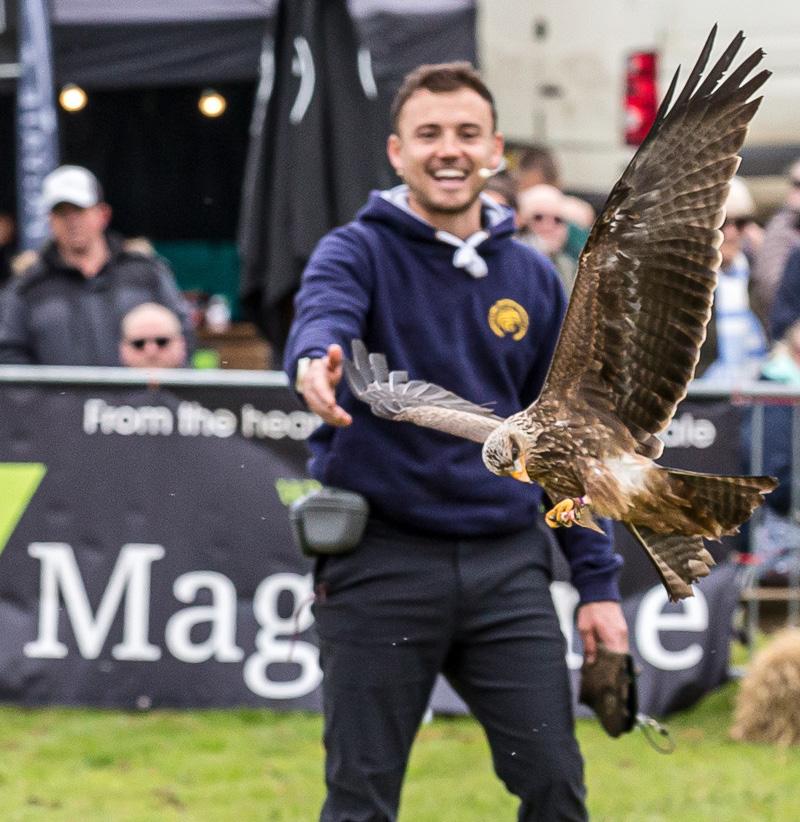


A local expert from Citizen’s Advice provides timely tips on consumer issues. In the postbag this month:

Q:We’re planning a summer getaway to Greece and I’m worried we’ll forget something important, which could ruin the holiday. What can we do to make sure we’re fully protected and prepared if anything goes wrong?
A: Booking a holiday can be overwhelming, especially if it’s been a while since you last went away. It’s unlikely anything will go wrong, but we’ve prepared a checklist to make sure you can relax into your holiday knowing you’re protected from the unexpected:
1. Check your passport is in date. Renewing your passport can take several weeks so don’t leave it until the last minute. Check the validity of your passport for your trip on GOV. UK by finding out the entry requirements of the country you’re travelling to. If you’re heading to Europe, bear in mind EU countries don’t accept passports more than ten years old. This includes passports issued pre-Brexit, which may have longer expiry dates.
2. Know your rights if something goes wrong. If your flight’s delayed long enough – usually
two to four hours, depending on the journey – your airline must provide access to food and drink vouchers, phone calls and emails, and accommodation if you’re delayed overnight. If it’s cancelled, you’re legally entitled to a full refund or replacement flight to help you get to your destination. You’re also entitled to compensation if your airline delays, loses or damages your checked-in luggage.
3. Get travel insurance.
Although it’s an extra expense, travel insurance can cover many of the things already mentioned, like flight delays and lost luggage, but also things like a holiday cancellation and medical emergencies.
Citizens Advice recommends getting insurance as soon as you book a holiday to make sure you’re covered right away – but always check first to see if an existing insurance policy covers what you need for your holiday. There’s no need to double up if you’re already covered! The chances are your holiday will be problemfree, but early planning and preparation can make all the difference.
As Trump unsettles NATO and offends allies, Simon Hoare MP looks at the strained special relationship and why the West must remain united against Putin
Many people will have had a hope that the second Trump administration might have been different from his first. That a greater sense of calmness and ‘grown up’ politics would be to the fore ... Any vestige of that hope was shattered in the Oval Office and the disgraceful treatment of the Ukrainian President.
If that is how this Administration treats its allies, then God help us all.
Of course, this came hot on the heels of the vice president’s sermon on free speech and democratic liberty delivered at the Munich Security Conference. An arrogant speech? Undoubtedly. Ill-advised? 100 per cent! Cowardly? Without a shadow of doubt. I say cowardly because I do not think he would have the spine to make the same speech in Beijing, Tehran, Moscow or Pyongyang. There is a lot of conspiracy theory speculation circulating currently concerning Trump’s status with the Russian authorities. I am not a conspiracy theorist.
What I do know, however, is that with the President’s tactic of let’s-unsettle-NATO-andoffend-our-neighbours-and-allies, the only person who benefits, in geopolitical terms, is Dictator Putin. Russia always benefits when the West is divided and uncertain.
We are certainly that at the moment.
It’s not me, it’s you
We will all be familiar with the idea of the Special Relationship between the UK and US. It has been strong and enduring. It can be, as it has been, special without there being continued agreement on every subject (for example the Suez, Grenada and – initially – the Falklands). It does, however, need to be based on an enduring trust: and that I believe is now eroded significantly.
Let’s hope it’s not the case, but the UK and US may be heading for a similar heart-to-heart
Let’s hope it’s not the case, but the UK and US may be heading for a similar heart-to-heart. Just because it’s lasted doesn’t mean it’s built to last forever.
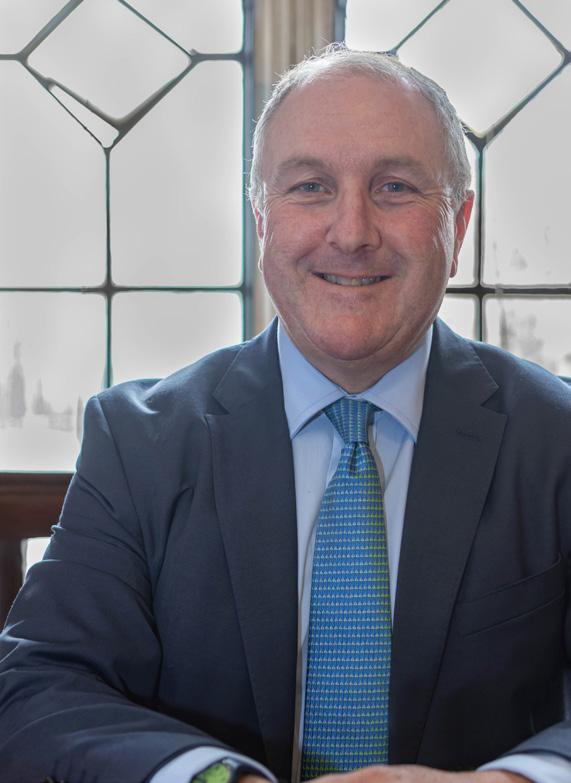
Many North Dorset homes and hearts were opened to Ukrainians following Putin’s unprovoked and unwarranted invasion. I well remember seeing the tsunami of generosity at Sturminster’s Exchange as I helped pack donations of clothes, food and bedding. It was deeply heartwarming. It remains as clear today as it did those three long years ago: to end the fighting is easy – Russia has only to withdraw her troops and respect the sovereign boundaries of Ukraine. Contrary to the Trump ‘philosophy’, the moves cannot only come from Ukraine, and I cheered when President Zelensky stood firm against the White House Bully Boys.
The House of Commons has responded magnificently (with the exception of the Trump/ Putin hero-worshipping Reform): a laser-like focus on stronger defence policies, increased defence spending, total support for the Ukrainian people and vocal opposition to the Russian regime. Our Prime Minister (with whom I have many policy disagreements) has led the international response, carrying on that role which his predecessors had. As we move forward he will have both my support and that of my Party in pursuit of the core principles we all share. Failure to do so would play into Putin’s hands and humanity would be the loser.
Many of us recognise that classic relationship conversation—“we want different things,” “we’ve changed,” “we’re not who we were X years ago.”
• Simon will be holding an advice surgery in Gillingham on Friday, 14th March at 3pm. For more information and to make an appointment, please call 01258 452585 or email simon.hoare.mp@parliament.uk.
Question: if you pay someone to do a job and they don’t complete it, should you be able to refuse to pay the whole bill? If you think ‘Yes, of course!’ then you might be interested in the recent small claims court action by Wessex Water against Caroline Dennett, one of Dorset’s hardest working and most inspiring environmental campaigners. Caroline has been refusing to pay the sewage treatment element of her water bill, on the basis that Wessex Water has obviously failed to adequately provide that service. Unusually for a small claims court hearing, Wessex Water chose to have a Barrister present their case. The judge was complimentary about Caroline’s presentation of her own defence, and she was sympathetic to Caroline’s arguments. She also refused to award costs against her, but ultimately had to con-
We consumers have no redress when our water company fails to adequately provide the service we pay them for
clude that she had no option in law other than to uphold Wessex Water’s claim for payment of the withheld money. So we consumers have no redress when our water company fails to adequately provide the service we pay them for. And because they have a monopoly, there are no alternative suppliers we can turn to. Unless and until the industry is properly regulated, the UK’s water privatisation rip-off will continue. More than 70 per cent of UK water company shareholders are now foreign interests. Wessex Water itself is 100 per cent owned by a Malaysian infrastructure conglomerate. The ten privatised water companies established in 1989 were effectively debt free

– they now have debts of more than £60bn, while over £80bn has been paid out to shareholders. And all the while, sewage has increasingly fouled our precious watercourses and beaches. If more of its customers temporarily withheld payment for the waste treatment part of their water bills, the pressure might encourage Wessex Water to fulfil its contract with us. What do you think ?
Some farming methods also cause gross pollution of our waterways, for example factory farmed chickens. But here, fortunately, we consumers do have a choice. Cheap chicken doesn’t pay for the huge damage it does to our environment – damage that one way or another we all pay for. So we can choose not to eat it, can we not?
Ken Huggins North Dorset Green Party
Events were moving very fast the first weekend of March as the diplomatic bromance between PM Starmer and President Trump turned into the undiplomatic, made-for-TV mugging of President Zelenskyy in the Oval Office. What has happened to the land of the free? We can only speculate about the motives and strategy of the so-called
Never mind the tea party: we need to smell the coffee!
leader of the free world. In my view there is rarely strategy to Trump. He seeks only TV ratings, cutting real estate deals over the heads of affected people and, above all, avoiding blame. Avoiding blame seems to be a significant motivator as Trump works in his unethical way to ensuring he can blame Zelenskyy and the Europeans for any failure to secure
peace in Ukraine. Trump made hay with Biden’s disastrous exit from Afghanistan, and he will want to set up scapegoats for anything that looks remotely like failure.
The public mauling of Zelenskyy at the White House needs to be seen in the same way that, for all the tactile patting and public grooming by Starmer and Macron of Trump the gorilla, the two European chimps still left their respective tea parties with no guarantees of US support
from the Donald – but at least Europe and allies are working on a plan.
Never mind the tea party: we need to smell the coffee! Like far too many professional soldiers in recent years, I started to believe fashionable military talk of hybrid warfare, sub-threshold effects, cyber and influence operations that would all make so-called sunset capabilities irrelevant. But there was always the nagging question of “does clever tech really beat artillery?” I well recall the visiting US Ma-

rine Corps general who asked my staff college cohort to remember that “a virtual presence is an actual absence”. We need to rebuild our forces quickly, with lots of good – not gold-plated – equipment and stocks. We need to do it with allies, to get best value for money and cut duplication. We need to recruit talent and retain experience. And we need to be prepared to make savings and pay more to achieve these things, even if the full first cut did not need to choke off
international aid. Previous generations spent eight per cent of GDP on re-arming in the years before 1939: and that was too little to deter our enemy. We are beyond the looking glass in the politics of Donald in Wonderland, where everything has been turned on its head. Europe’s enemy is Russia, but if Trump’s statements and actions make us feel that he thinks Europe is his enemy, are we wrong to believe that Trump sees Putin as his like-minded friend? It’s time for Europe to be strong against both the bullies in front of us, and behind.
Gary Jackson North Dorset Liberal Democrats
The 8th March is International Women’s Day, and while this would be a great time to win some brownie points at home by talking about my amazing (and long-suffering) wife, it is also an opportunity to celebrate some of the many amazing – and too often overlooked – women in West Dorset’s history.
Mary Anning, born in Lyme Regis in 1804, is one of history’s most renowned fossil hunters. Despite facing so many challenges, her discoveries changed the course of palaeontology forever. Today, a statue in Lyme Regis honours her achievements – a tribute made possible through the dedication of two other amazing women: Anya Pearson and Evie Swire, a motherdaughter duo who successfully crowdfunded for the statue.
Yet despite this rich history, there has long been a glaring absence of women represented in our public spaces. Until recently, in Dorchester there were six statues of men, one of a dog, one of a horse, and one of the Queen Mother. But not a single statue of a nonRoyal woman. This is not just about stone and metal – it is about the stories we choose to tell. Thanks to the efforts of Anya Pearson and the
Currently there are six men, one dog, a queen and a horse
Dorchester Sheroes campaign, this is beginning to change, with a statue of Sylvia Townsend Warner, a 20th century novelist, poet and pioneer for gay rights, set to be installed in the town centre.

Women’s contributions to West Dorset span centuries: The Dorset button makers, who influenced the livelihoods of hundreds of women and played a vital role in the region’s economy; Lucy Emily Baxter, an art writer from Dorchester; Mary Mullet Moule, who worked to improve sanitation during a cholera epidemic and Maude Steele, who was awarded the George Medal after she courageously maintained telephone services during the bombing of Sherborne in 1940. They are all part of our rich history of extraordinary women. On International Women’s Day, let us celebrate these women. Let us continue to push for progress, to support and uplift women in every walk of life, and to ensure that when we look to the past, we see the whole story, not just half of it.
Edward Morello MP for West Dorset

Dorset artist Jack Dickson features on Bill Bailey’s BBC series, creating a powerful portrait of railway worker Rizwan Javed MBE
Jack Dickson, a member of the art department at Bryanston School in Blandford, was featured on a recent edition of Bill Bailey’s BBC series Extraordinary Portraits.
The programme showcased Jack’s portrait of Rizwan Javed, a railway worker whose quiet heroism has saved 29 lives.
‘I watched all three previous series and absolutely
loved them,’ Jack told The BV. ‘As an artist who likes to tell people’s stories, I thought it would be amazing to take part. When the last series ended, I contacted the producers and put my name forward. It was a long shot, and I didn’t expect to hear back, but after a few weeks, they contacted me. There followed months of to-ing and fro-ing, interviews and waiting to see if what I did might
suit any of their potential sitters. I finally got the call to confirm early in the summer last year.’
Jack is no stranger to high-profile portrait competitions, having appeared on Sky Arts Portrait Artist of the Year in 2020. ‘That was an intense but fantastic experience,’ he recalled. ‘Working under time pressure in that kind of environment is a real challenge, but it was amazing to be part of it. It definitely pushed me as an artist and also turned out to be amazing preparation for opportunities like Extraordinary Portraits.’
Over the past eight years, East Londoner Rizwan, who works for London Underground, has prevented 29 people from taking their own lives. His dedication has earned him an MBE for his work in mental health intervention. ‘As soon as I met Rizwan, I knew this was a story I had to tell,’
Jack said. ‘The more I got to know him and his family, the more I felt I had to do him justice. It is very rare to get so much time with a sitter and to get to know every aspect of their lives – it was a real privilege.’
Describing himself as an ‘artistic magpie,’ Jack immersed himself in Rizwan’s world, observing him at work on the Elizabeth Line and meeting his family.
Rizwan, in turn, visited Jack’s studio in Blandford, accompanied by comedian and presenter Bill Bailey. As Jack worked, he wove together the threads of Rizwan’s story into a multilayered portrait that reflects his ‘humility and dignity.’ Rizwan was deeply moved by the final artwork. ‘You’ve got magic in your hand – you’re truly gifted and it’s beyond anything I ever expected,’ he said. ‘I felt comfortable enough to share deeply personal things with Jack, some of which even my family hadn’t heard.’
Jack responded: ‘I feel humbled by what you have to say – it really has been a privilege to do this and tell your story.’
Jack on Bill
Jack reflected on the unique experience of working alongside Bill Bailey: ‘He has always been one of my heroes, and I’ve seen him live on a few occasions over the past 25 years. The old saying “never meet your heroes” just isn’t true. He was an absolute gent, very funny, as you would expect, but also completely down to earth. It was a little surreal to be sat at home in Blandford having lunch with him ... but also strangely normal!’ The experience left a lasting impression on Jack. ‘Rizwan has had the biggest impact on me, and I now have a friend for life. His empathy, bravery and honesty are an example to us all. ‘The painting
I made of him was the most ambitious piece I’ve ever taken on, and I think it has been a success. The show has obviously been great exposure for me and has resulted in a few interesting opportunities, but most importantly, I hope I have managed to shine a light on a truly extraordinary person.’
As a teacher at Bryanston, Jack’s day job is to nurture young artistic talent. ‘Young people ask the most challenging questions and take risks in their artwork that adults often won’t. There are a few incredibly talented portrait artists, but even more who are talented artists in general, who might turn their hands to portraits on occasion. I can’t wait to see what journeys they take.’
• Extraordinary Portraits pairs talented artists with people who have powerful and inspiring stories to tell.
The episode featuring Jack and Rizwan is available to watch on BBC iPlayer here.
• Jack says of the below portrait: ‘Bill Bailey kindly agreed to let me paint him during the filming of Extraordinary Portraits. This is in fact a painting he had a hand in making while he was visiting my studio. It was one of more surreal moments of my life, having Bill Bailey pottering around the house, chatting to the family, eating with us, meeting the dog. Made so extraordinarily normal, however, by how unfazed my mum and my children were and how down to earth and gracious the master of mirth, music and mischief was.’

by Tracie Beardsley
Bookbinder Peter Wiltshire’s current challenge is restoring a 400-year-old family bible, that had been kept in an old biscuit tin. All images: Courtenay Hitchcock
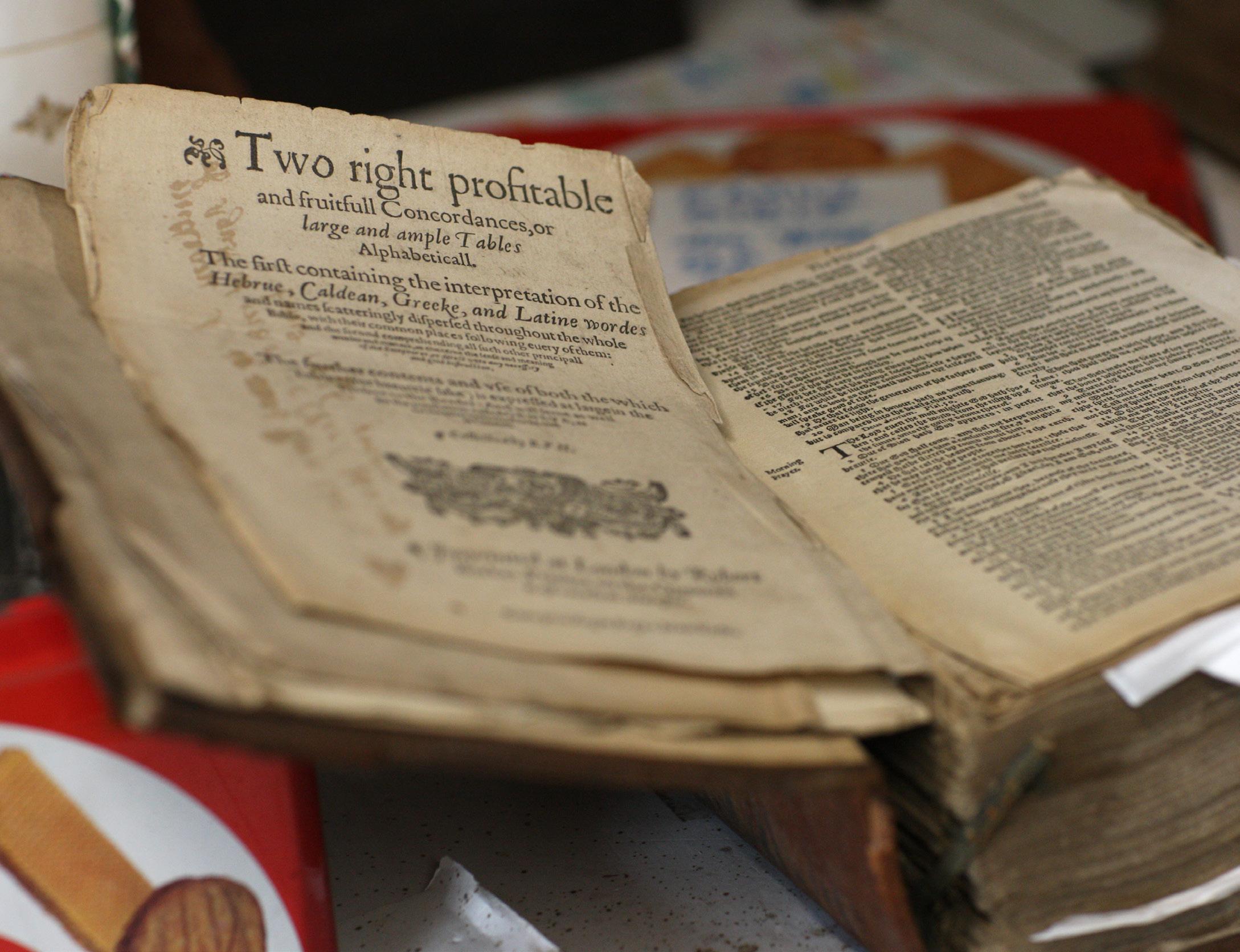
Peter Wiltshire learned the art of hand bookbinding from his father. Now, he’s restoring literary treasures in his own Dorset workshop
Peter Wiltshire gently lifts the lid off an old biscuit tub. Emblazoned across the Family Circle logo in big bold letters is DO NOT DESTROY. Inside is a worn and tattered leather-bound family bible, dating back to 1600.
Peter is about to embark on the enormous challenge of painstakingly restoring and rebinding its hundreds of fragile, flaking pages and the disintegrating cover.

One of only a handful of professional bookbinders in Dorset, Peter continues this ageold craft of hand bookbinding while co-parenting his three children, all under 10 years old. His workshop in Maiden Newton is crammed with pots of tools, delicate brushes and huge, handsome book presses alongside a collection of discarded book boards. This incredible archive illustrates binding styles from different eras – Peter uses them to help customers (and me) - understand the restoration process. ‘Book binding used to be a cottage industry. It wasn’t mechanised at all. Books were


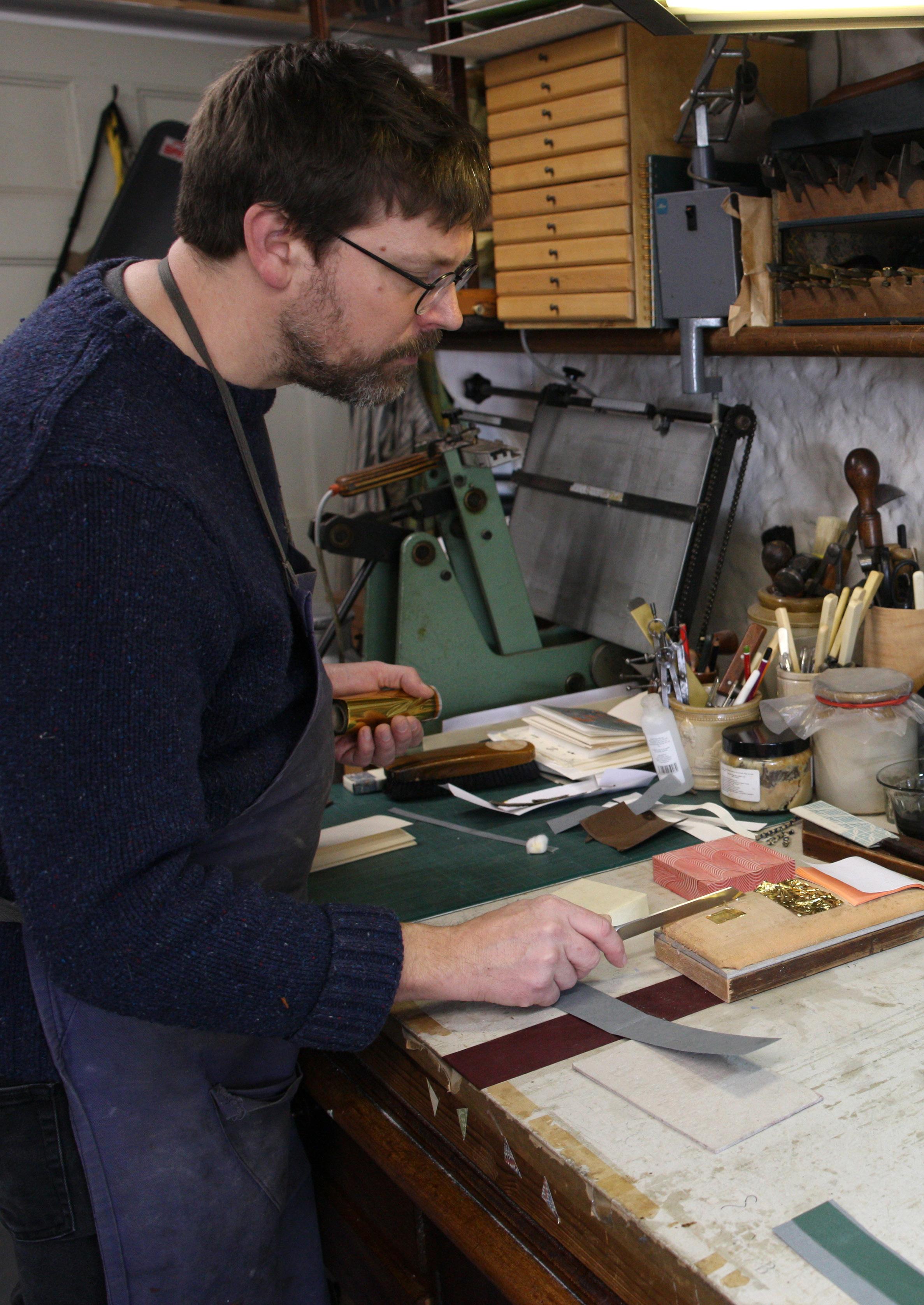


sewn together with their boards cut to fit,’ he explains. ‘These were laced on using cords which went through holes in the boards. There was just no way of speeding up the process. Once
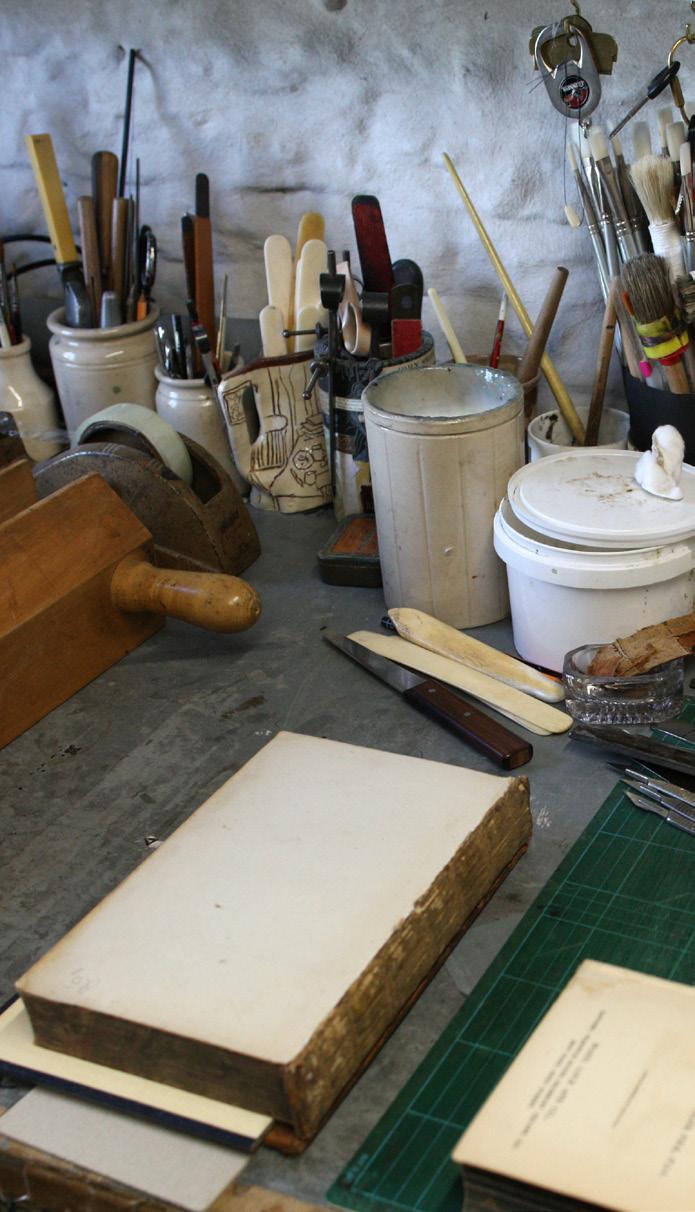
the boards were laced onto the book, the leather was cut to size and wrapped around the book in one go.
‘During the Industrial Revolution – and alongside growing national

The
literacy – the Victorians invented case binding, where instead of being sewn, case covers were created separately, then attached to the book. That was the birth of mechanised book binding.’
Dad’s apprentice
Peter began practicing his skills as a teenager. His father, Tim, ran a prestigious bindery in Winchester, connected to P & G Wells Bookshop, one of the oldest bookshop binderies in the country. ‘I’d sew books for Dad to get a bit of pocket money. I learnt a huge amount from just watching my father at work.’ However, a love of antiques and history was initially a greater attraction, and Peter began working for an auctioneer and antiques dealer. ‘It was only when an older friend of mine, with a slightly wiser head on his shoulders, asked me why I wasn’t training in bookbinding when I had such a unique opportunity within my own family. That was the catalyst, and I entered an apprenticeship under my dad.’ Peter went on to open his own bindery in Hampshire, connected to Petersfield Bookshop, before returning to work in partnership
Individual heated stamps with engraved designs, used for gold tooling and embossing. They are mounted on long handles for control and precision
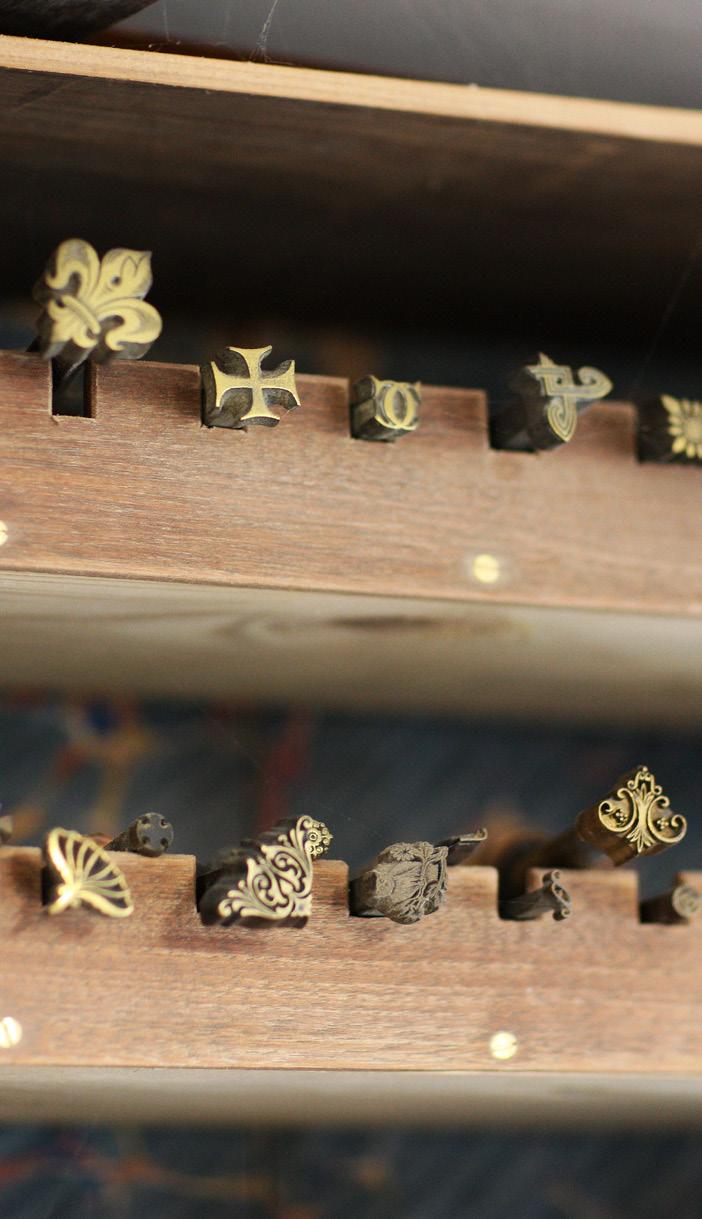
with his father until his dad’s retirement in 2021.
‘Dad was inspiring. The more I learnt about the craft, the more I realised his depth of knowledge and skill. I still pick his brains. I’m grateful there was no pressure from him to make me join his trade – this craft isn’t something you can do if your heart isn’t in it. It demands so much patience and precision.’
It’s not something you can do if your heart isn’t in it – it demands patience and precision.
I see what he means as I watch him expertly work. Using an incredibly sharp paring knife he gently lifts the inside of a book cover inscribed with the name Jane Dodgson – a relative of Lewis Carroll. ‘You can’t compromise a signature like this – they are literally irreplaceable,’ he says. ‘Often the book is too fragile to soak the pages off and you may damage the book board – so a knife is the only way to save them. It’s nerve wracking!
I’d resurrect Roger Payne, a much celebrated and maligned 18th century bookbinder – as close to being rock-and-roll as you get in bookbinding! He was a wonderful bookbinder but an alcoholic who died penniless. Payne was the first English bookbinder to come up with a new style of bookbinding, and the notion that a book cover should reflect the contents of the book.
He wrote poems about beer on customer invoices!
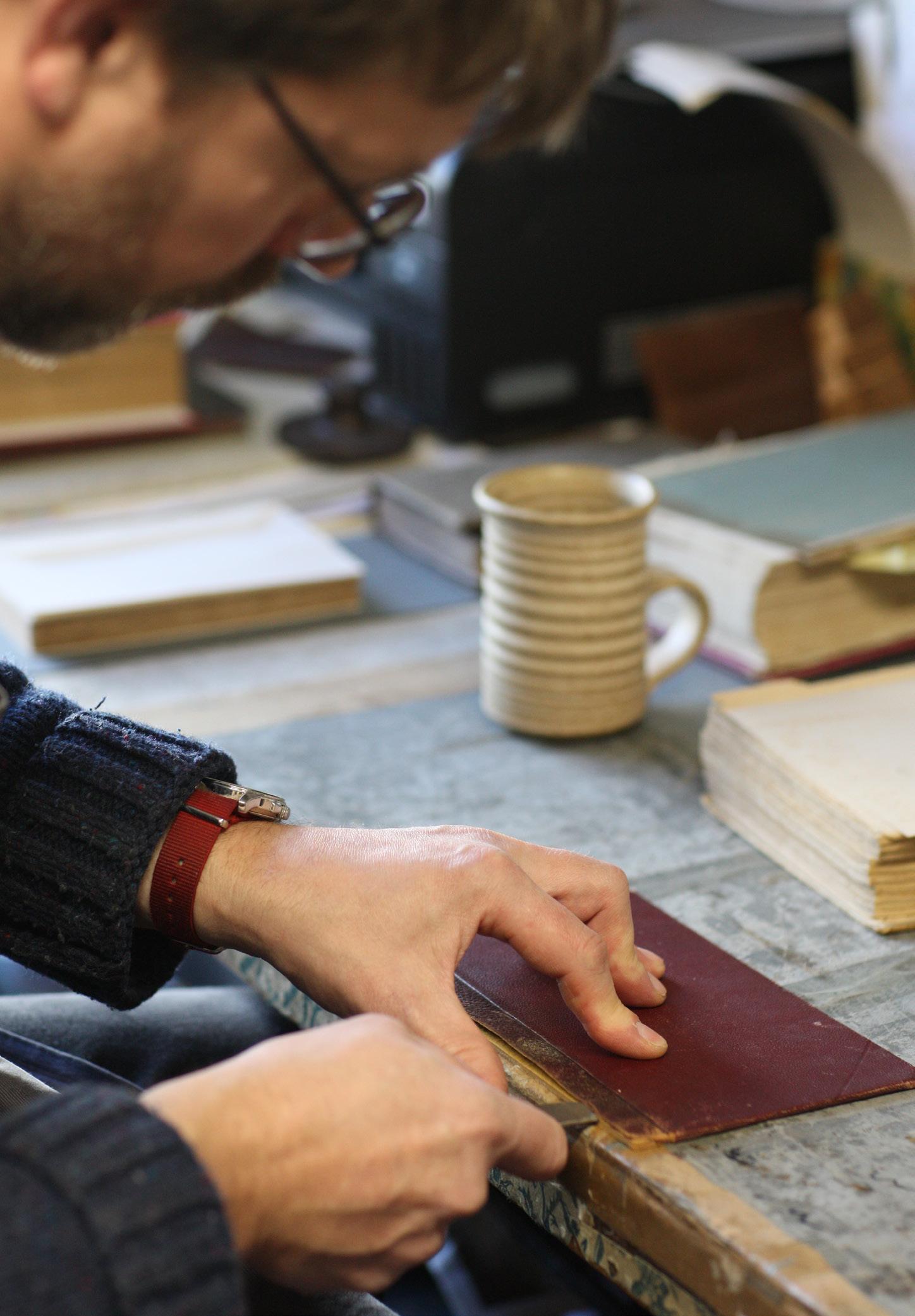
You really do only get one chance to do it right.’
The work demands complete concentration and though Peter enjoys listening to history podcasts, he often works in complete silence. ‘As you can imagine, with three young children, home life is noisy. It’s relaxing to work this way.’
And when he’s not on dad duty or working, books are his goto for downtime, too. ‘It’s a busman’s holiday, but I love exploring auctions and secondhand bookshops for rarities!’ Hand bookbinding is a niche profession with no official apprenticeship schemes, but it’s a burgeoning hobby with many
Patience and precision –
Dorset bookbinder Peter Wiltshire expertly cuts into a leather book cover
amateur bookbinding groups and guilds across the country. It’s a far cry from the bookbinders of the past who, along with leather tanners, used to have one of the lowest life expectancies in London. They were badly paid and often worked in poor light. Popular interest in restoration has seen a surge in commissions in recent years, and family bibles, second-hand literary treasures and even flight logs from the World Wars sit on Peter’s workbench awaiting his safe hands for repair.
But first it’s the bible in the biscuit tin!
• petewiltshire.co.uk
From rehabilitating traumatised animals to pioneering equine thermography, Diana has spent a lifetime learning their language – and teaching others to listen
Diana Robinson’s life has always revolved around horses. Born in Rhodesia (now Zimbabwe) ‘too many years ago,’ as she puts it, she grew up on a farm with a father who loved playing polo and who owned racehorses. She was placed on a horse as soon as she could sit up at eight months old, and from that moment, she has never wanted to get off. Her childhood was both idyllic and tragic. At almost five years old, she witnessed the devastating effects of a freak polo accident on her father. ‘A ball struck his horse between the eyes, dropping it at full gallop and leaving him with a spinal injury. While not immediately paralysed, he collapsed months later. At the same time, Diana’s mother was diagnosed with cancer. She died while her husband was in hospital, leaving Diana and her siblings to be raised by their grandparents until her father returned home seven months later. Horses remained a constant source of solace and joy. She was home-schooled for a year, then went to boarding school at seven, but credits her father’s polo ponies as her greatest teachers. Her upbringing was one of independence and resilience: ‘When you’re never told to be frightened of something … you aren’t,’ she says. By her teenage years, she was working at a stud and a racing yard and teaching children to ride.
As Rhodesia entered its bush war in the 1970s, Diana sought to become an equine vet in the UK. But as a woman, she found doors firmly closed –
Diana, aged 6, riding one of her Dad’s polo ponies in Zimbabwe
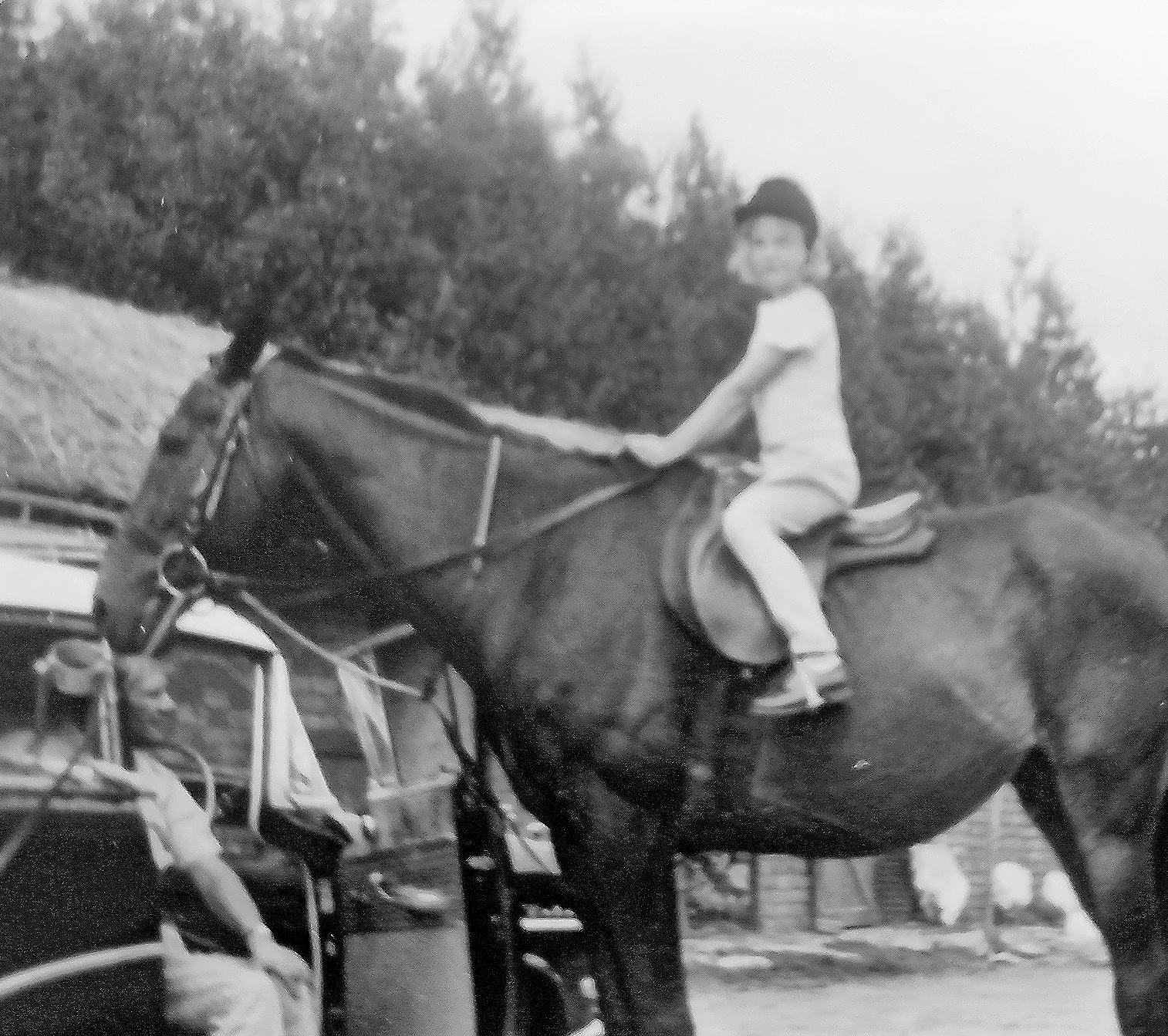
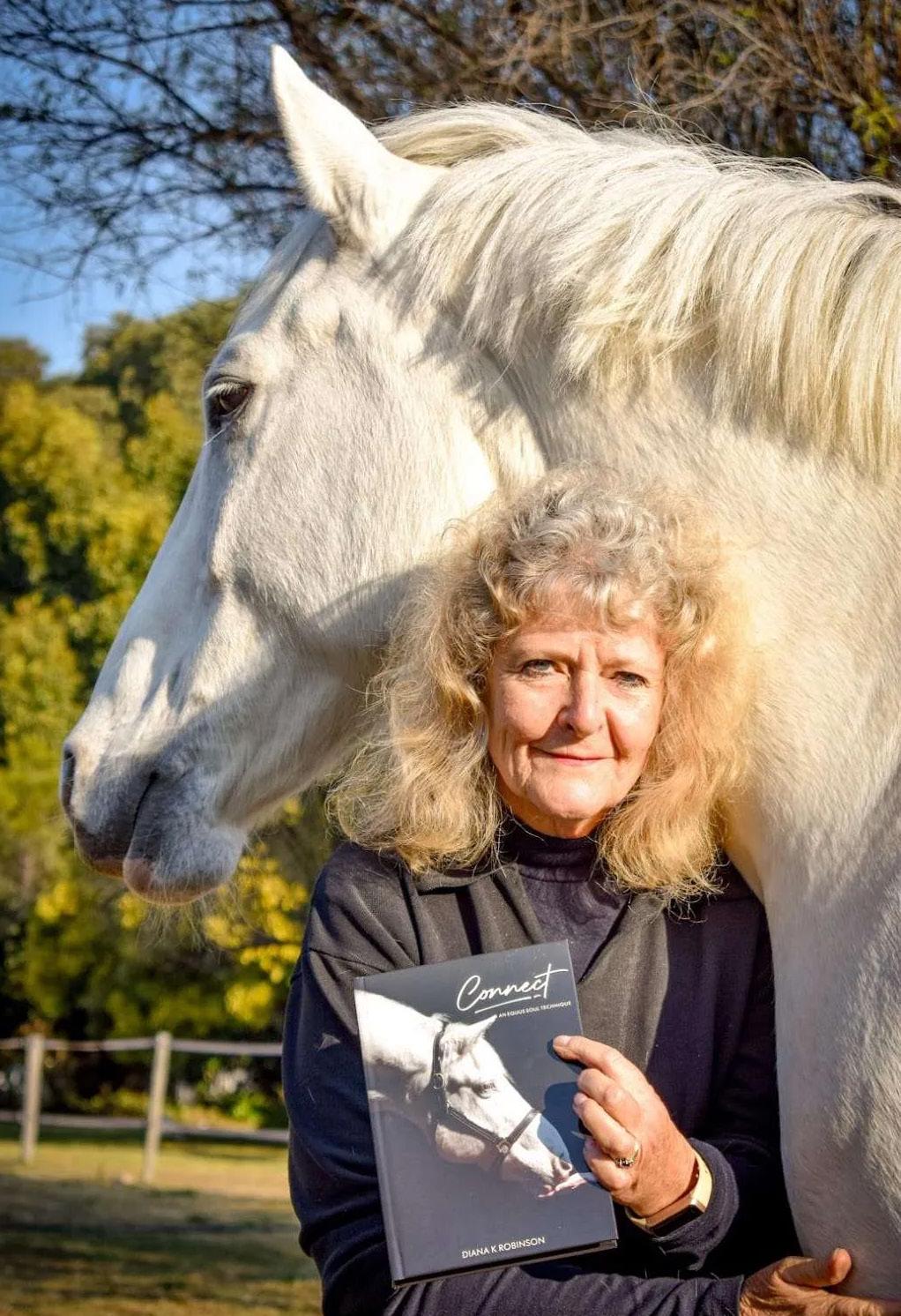
Diana Robinson, an advanced equine thermographer and equine masseur in Dorset, has developed the Equus Soul Technique
no one would consider her for large animal work. Returning home, her father encouraged her to join the newly established Rhodesian Women’s Services. After the six-week initiation, it was recommended she join the equine division, which she refused, feeling it was inappropriate at her age to try and teach men to go into battle. Instead, she entered a top-secret signals intelligence unit, where she spent more than three years working in Ciphers and learning about espionage.
Marriage took Diana to South Africa, where her work with equine therapy began in earnest. In Johannesburg, she was asked to take charge of the early days of the Riding for the Disabled unit. She worked alongside leading professors from Onderstepoort, the only institution in South Africa offering a Bachelor of Veterinary Science. ‘I definitely regretted not training as a vet,’ she says, ‘but I found something I loved – the healing
side of working with horses. Having had a father in a wheelchair, I instinctively understood. It was fascinating to see how much horses could help disabled people gain independence.’
She began experimenting, bringing in off-the-track under-performing Thoroughbreds. ‘People asked what on earth I thought I was doing,’ she says. ‘Thoroughbreds? For therapy? But the ones that don’t perform that well on the track generally have the most incredible temperament – and it was that temperament, intelligence and sensitivity I was after for therapy work. And it was successful. It really really worked.’
One of her most memorable experiences was with Neil, a 33-year-old man with autism who had never spoken: ‘Someone from the Johannesburg Autistic Society told me, “I don’t want to knock your enthusiasm, but I don’t think you’ll manage what you’re setting out to do.” But I thought, nothing ventured, nothing gained! So I worked with Neil. He was very aggressive initially, but soon began to enjoy the attention. He would come to see the horses but refused to touch them. After I encouraged him to touch and hug trees, he got braver, but even that took some time. After a few months, I got him into the saddle. He was very nervous at first, but we all encouraged him. After a few months of riding once a week, he came to the arena with a more positive attitude. He clambered into the saddle with help, a mile-wide smile crossed his face, and he gave me the thumbs up. He began to trust me. We’d been working patiently with Neil

In the Rhodesian army with her husband, 1978

for 17 months, when one morning he indicated I should stop. Looking back at him, I asked, “What do you want, Neil?” He smiled, hesitated a moment, then said, “horsey.” I had a lump in my throat and couldn’t speak for a moment. It was the first word he’d ever spoken in his life. It was a momentous occasion. Sadly, after four years, funding for the programme was cut. But by then, Diana had gained a very deep understanding of the therapeutic value of horses and realised how much of what she’d learnt as a child she could use.
Not long after, Diana was attacked as she drove into her home, very badly beaten up and robbed. At the time, car-jackings were quite commonplace in Johannesburg. Her army training helped her cope with the trauma, but the experience pushed her to leave the city. She and her husband moved to a farm in the rural Free State province, where she found healing in the company of her horses.
‘I realised there were many women experiencing the same trauma,’ she says. ‘So I decided to create a peaceful retreat. No psychologists. No formal investigative therapy – just being with my horses, soothing the soul simply by sitting with them, observing.
‘I was using traumatised horses I had been asked to rehabilitate. I noticed that rather than being a greater risk, they were more sensitive to traumatised people. They understood. They responded in way I couldn’t explain then. They so impressed me with he results I had from the
ladies in the groups, I developed the Equus Soul Encounters. I watched,I learned, and I began to understand.
‘A number of these retreats were documented in magazines, and I got endless calls to rehabilitate badly-behaved horses. I’d take them on like a kid collecting candy – all horse people will understand that!
I simply loved the results and in 2000 I qualified as an Equine Masseur. I had some amazing horses pass through my hands. Some even stayed!
The rehabilitation process taught me that kindness and the gentle touch is the most rewarding process for the horse. And one of the most interesting things I learned on the course was Pressure Point Therapy. The gentlest of touch creates a reaction, and observing their reaction leads you to a greater understanding of where the muscular issues may lie. I mean, they flick their tails when a fly lands on them.
‘When I work on a horse, I like to observe what they tell me with their ears, their eyes, the chin and the mouth. Their reaction tells me if I’ve got the spot and what kind of pressure I need to use to release a knot! Of course, there’s more to it than that, but my favourite saying is: “Through
Diana scanning Hektor Image: Courtenay Hitchcock
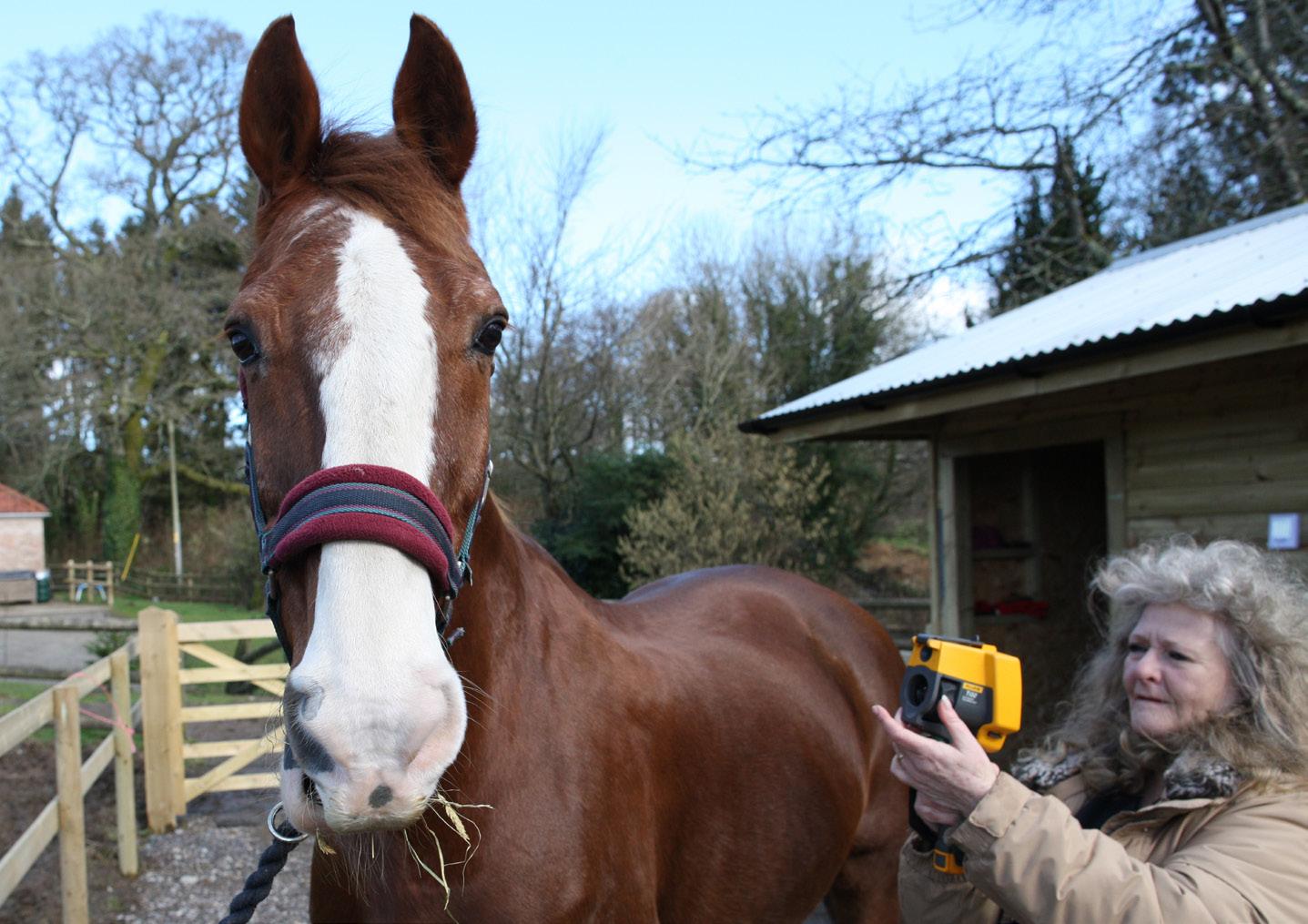
observation comes wisdom.” And horses are fabulous tutors.’
Seeing red Diana’s training deepened her understanding of how horses compensate for pain and injury. ‘I had 24 horses when I did my massage course: I had plenty to practice on. During this endless practice I learned how roughly we handle these sensitive creatures – most of us are guilty of it. I adjusted my touch and learned so much from their shifting body language and responses. They told me so much when I took the time to listen!
‘Then I was introduced to equine thermography. That blew my
mind, as they say! I immediately set about training so that I could combine the use of the infrared camera with my massage work, because now I could see the inside of the horse, as well as know exactly what was happening on the outside. Having the camera to support me visually I would probe where I saw a problem on the screen, gauging the horse’s reaction. If there was none, I knew the trauma or injury was an old one, no longer troubling the horse. ‘I was trained on an Iris 2000 camera: on humans first, and then I moved to equine. I had two years of training in total. And now with fifteen years of
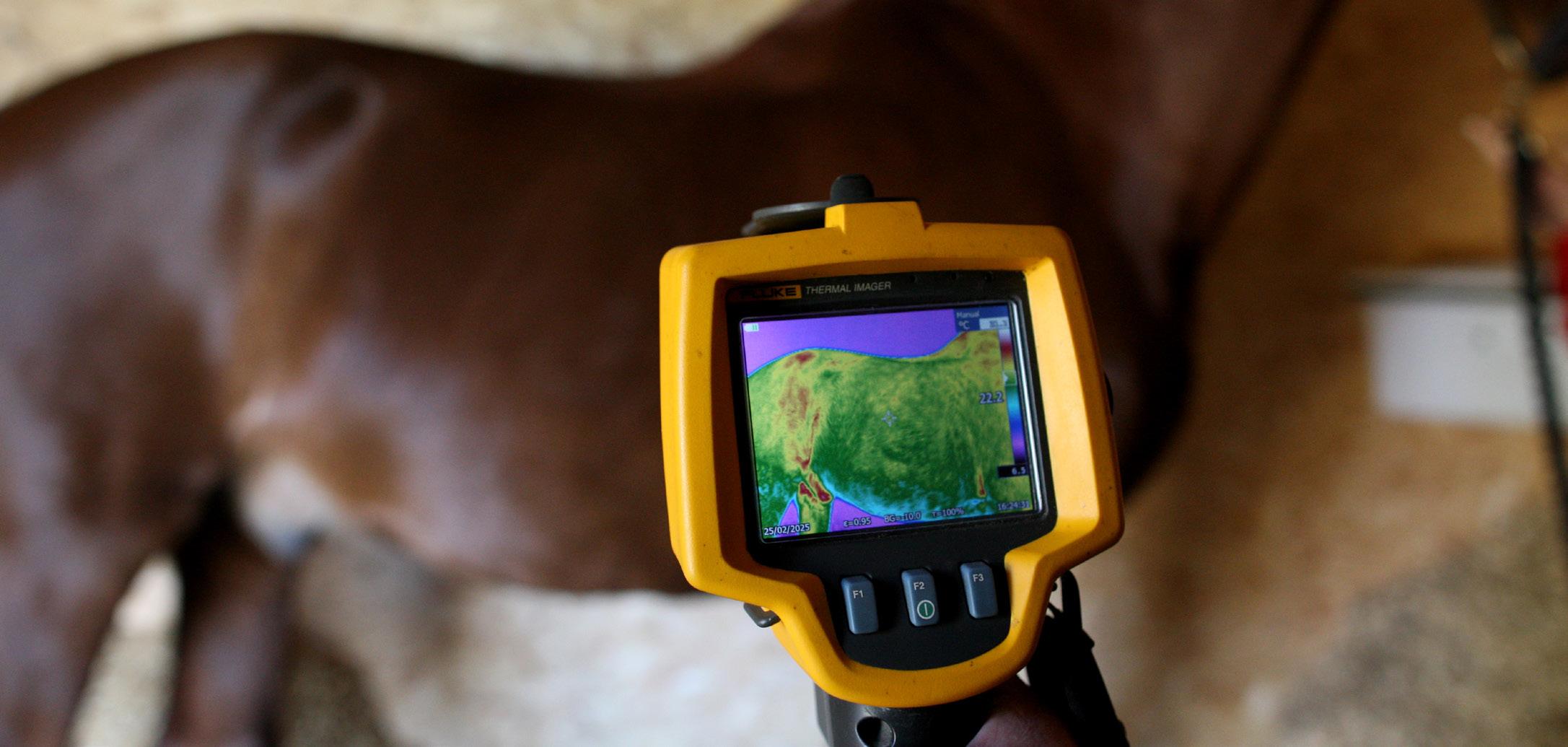
Hektor (amd above) is a huge 21-year-old carriage horse whose career included Royal Ascot. He’s now a happy hacker with his owner Paula Bailey. Image: Courtenay Hitchcock
scanning, I have scanned thousands of horses of many different breeds and in an assortment of disciplines. I have learned so much, scanning horses across Africa and Britain.
‘What I have discovered is quite shocking,’ she says. ‘Probably 90 percent of those horses had subluxations – partial dislocations of their joints – that no one had picked up on. A horse can have multiple subluxations and still perform, but they’ve been compensating for their discomfort, and we’ve not noticed. When the demand on their bodies becomes greater – perhaps with a higher level of competition requiring more fluidity – that’s the time they start to resist, and things begin to go wrong. The knock-on effect has been too great, and the resistance shows not just in iffy lameness, but in a change in behaviour: in bucking, rearing, shying, leaning on the farrier, head shaking ... many other issues. At this point the poor horse is labelled naughty! But it’s not just the subluxations they are struggling to compensate for, it’s also poor training, poorly-fitted tack, over-biting, poor farriery, perhaps an unbalanced rider ... until eventually they become dangerous. Not because they want to be vile, but because we’ve not listened.
The use of thermographics as a diagnostic modality is useful in all equine circumstances. I’ve scanned across the disciplines, but have probably scanned more racehorses and top competition horses than happy hackers.
‘Racehorses really benefit. As their joints are nowhere near closed when they begin their racing career it is vital that, skeletally, they are kept as aligned as possible to avoid these knock-on issues, which hopefully keeps them sound winners! This is especially true for chasers. This can be a ‘quick fix, that lasts!’ And correction doesn’t hurt – in fact you can hear them sigh in relief.
The scanning procedure is simple: an assortment of protocols needs to be adhered to, which are given to the client upon enquiry. There is no radiation risk, and I travel to the horse, saving a lot of money and time.
They become dangerous not because they want to be vile, but because we’ve not listened
Approximately sixty images are taken, which I download and audit carefully. A full histogram is then emailed to the client 24 hours later, with advice on what has been observed along with a recommendation on which professional needs to treat the horse – which might be a vet, a physiotherapist, chiropractor, farrier or others. This modality is a wonderful pre-purchase examination too, and great for saddle-fit.’
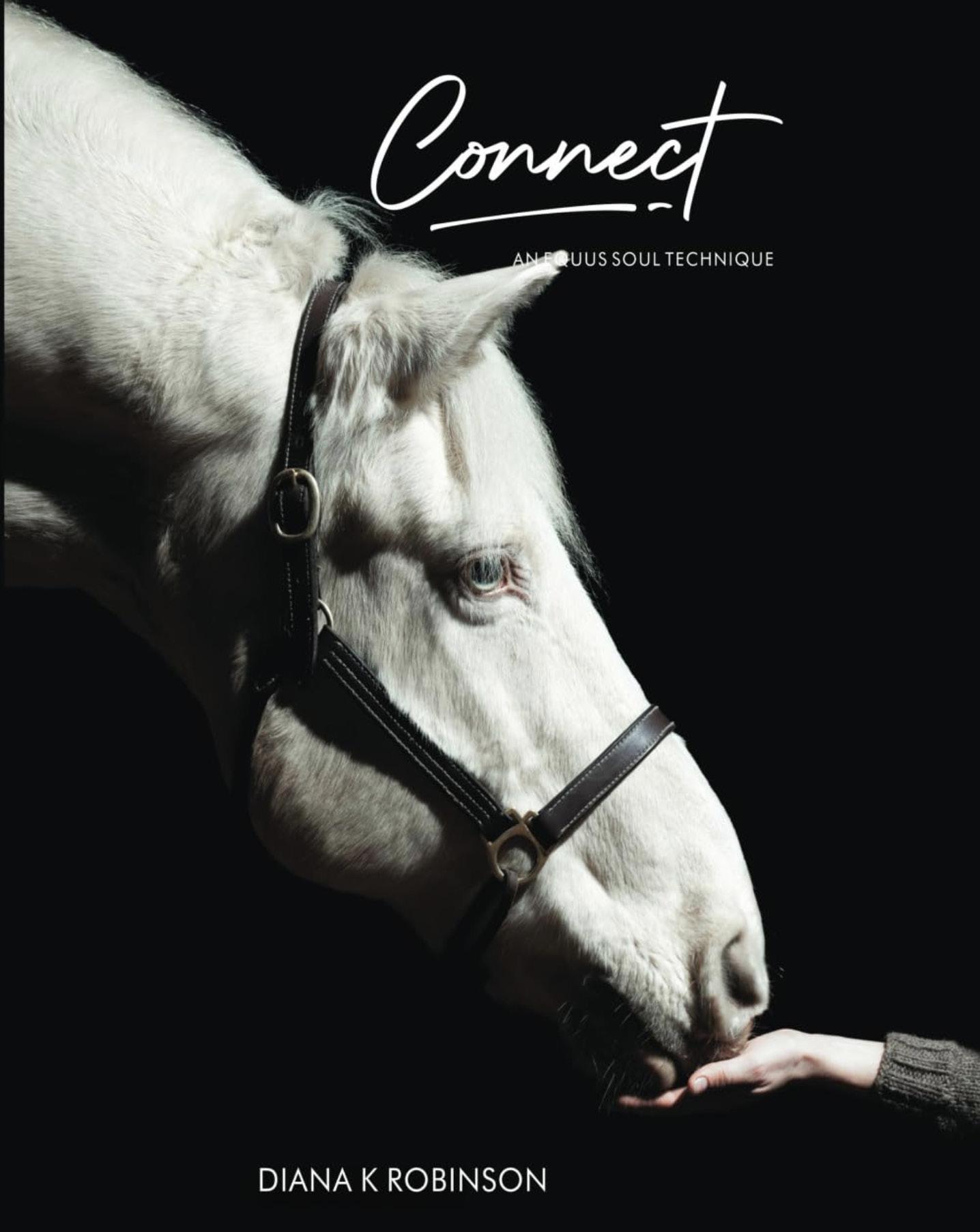
Diana’s years of experience have culminated in her book, Connect, a guide to developing a deeper relationship with horses through touch, observation and understanding. She believes that many horse owners – no matter how well-meaning – are often too rough without realising it.
The book delves into everything she has learned, from reading subtle body language to using the thermographic imaging to detect discomfort. It’s a practical and insightful resource for anyone who wants to enhance their relationship with their horse, whether for competition or companionship. Today, Diana continues her work, consulting with horse owners, trainers, and breeders, and promoting Connect. Her mission is simple: to help people see horses differently.
‘We live such fast-paced lives: we don’t stop to just be,’ she says. ‘We don’t get that opportunity, or we don’t stop ourselves, to just take a breath, take a step back and have a really good look.’
• Diana offers demos at yards and clubs for groups to see how equine thermography works. Please feel free to book a slot: call Diana on 07407 684 605 or email dianakrobinson22@gmail.com
• Diana is an advanced equine thermographer, equine masseur, equine behaviour specialist, pressure point therapist, lameness and unsoundness specialist.
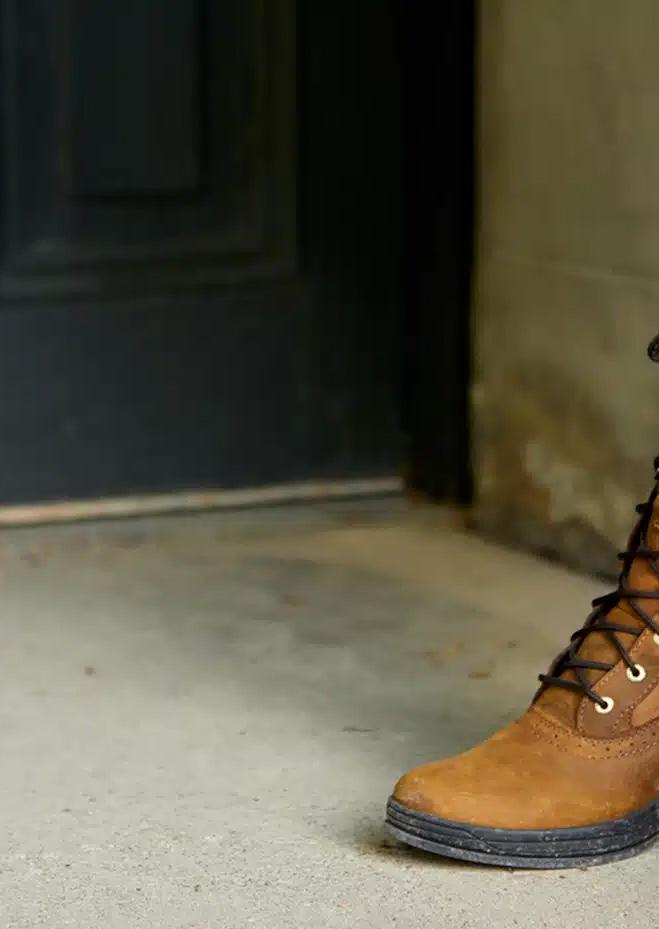


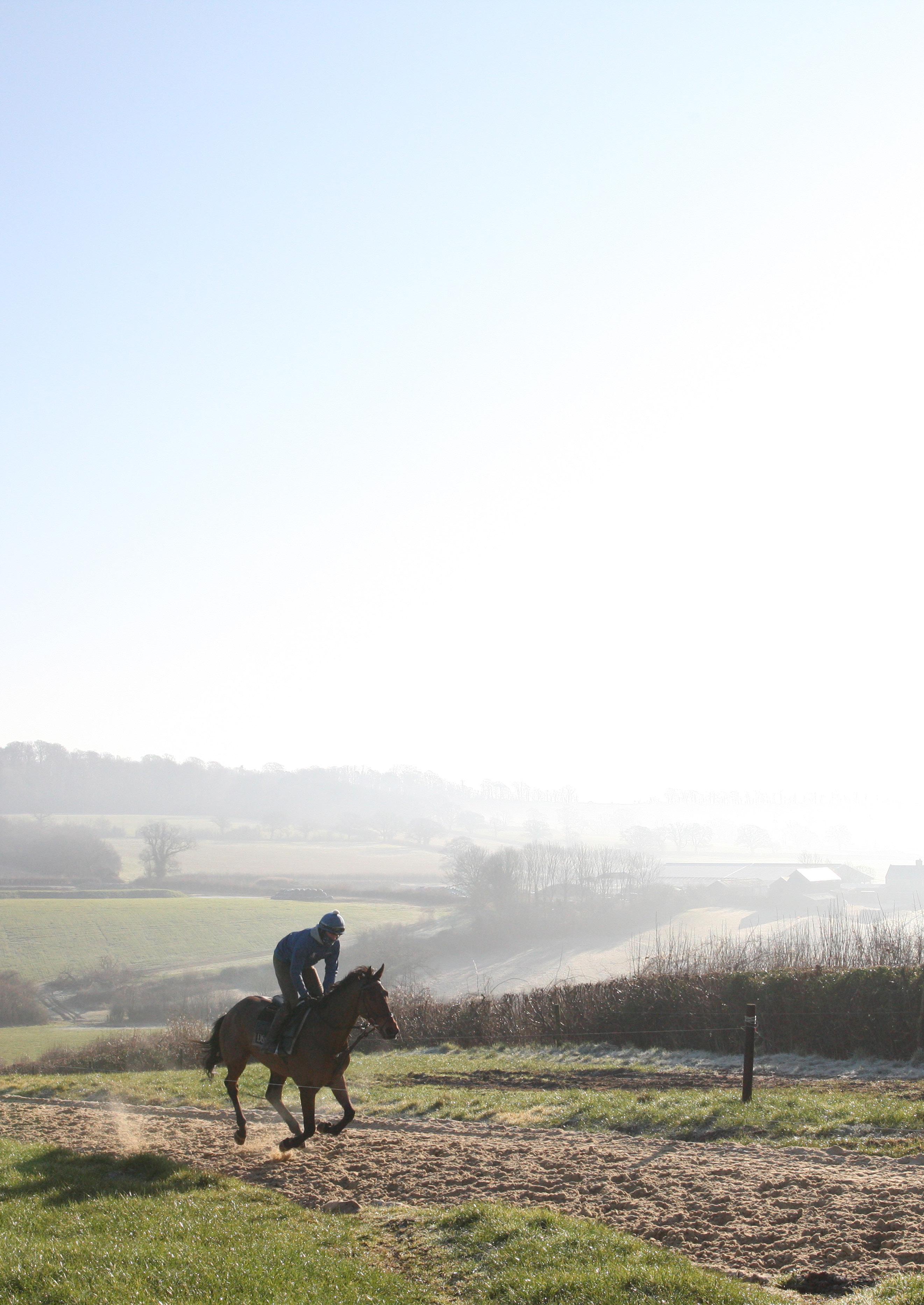

We have been so lucky to finally enjoy some spring-like weather over the last couple of weeks – it always comes as a welcome relief after a long, cold and constantly wet winter! We’ve had ten winners in the last month, bringing the season’s total up to 56 winners at the end of February: satisfyingly, that’s one better than Joe’s previous best of 55!
The real sign that spring is almost here, though, is that Cheltenham Festival is just around the corner. With less than a week to go as I write, anticipation is at fever pitch ... If you’re planning to watch – or even go to the festival – here’s your exclusive insider’s guide to the small but carefully selected group of horses we’ll be running: a behind-the-scenes look from us, just for BV readers ...

Age: 8
Sex: Gelding
Colour: Bay
Sire: Walk In The Park
Dam: Bitofapuzzle
Official Rating: 140
The Changing Man was broken in and produced at the yard, having been bought at the Doncaster Store Sale in 2020 as an unbroken three-year-old. He was always a very good-looking horse, and has an excellent pedigree: by leading National Hunt sire Walk In The Park and out of a Grade 1-winning mare. Despite this, he proved to be a bit of a slow burner on the track and didn’t get his head in front until his sixth start, where he won a Stratford handicap hurdle off a rating of 95. He then won twice more over hurdles, and his mark rose to 132 over the next season. He went over fences last season and, despite showing some
Races entered:
• The Ultima Handicap Chase (3m1f)
• The National Hunt Challenge Cup Novices Handicap Chase (3m6f)
• The Brown Advisory Novices Chase (3m)
good placed form, didn’t manage to win. This means he is still able to run in Novice chases this season and, after three second-place finishes in valuable handicaps, he took advantage of this on his last start, absolutely bolting up in the Grade 2 Reynoldstown Novice Chase at Ascot in midFebruary. He has a few options at Cheltenham but is most likely to run in the Ultima on day one. This race is a handicap, meaning horses carry weight according to their rating, and we feel he could still be well treated off his current mark of 140. He goes there full of confidence and in great form so should have a really solid chance.

Age: 8
Sex: Gelding
Colour: Bay
Sire: Court Cave
Dam: Lady Knightess
Official Rating: 156
Races entered:
• The National Hunt Queen Mother Champion Chase (2m Grade1)
• The Johnny Henderson Grand Annual Handicap Chase (2m)
• Ryanair Chase (2m4f Grade 1)
One of the real stars of our yard over the last few years, winning three hurdles and three chases. The highlight of his career came on his reappearance this season, when he won the Grade 2 Haldon Gold Cup at Exeter impressively. He has run well to be placed in Graded races since, and now finds himself on a career high mark of 156 going into Cheltenham this year.

He will either run in the Grade 1 Champion Chase or the Grand Annual Handicap Chase, where he would carry the second top
weight. Neither looks an easy task, but he is flying at home and the drying ground will definitely be in his favour.
Age: 7
Sex: Gelding
Colour: Bay
Sire: Getaway
Dam: Harbour Mistress
Official Rating: 134
Races entered:
• Jack Richards Novices Limited Handicap Chase (2m4f Grade2)
Lord Of Thunder was bought at Cheltenham Sales having finished second in his only start in an Irish Point To Point.
He won twice over hurdles in his first season under rules, but an injury last January put him out for the rest of the season. He made his chase debut at Cheltenham in October and was running well when falling two out. He has since become a very
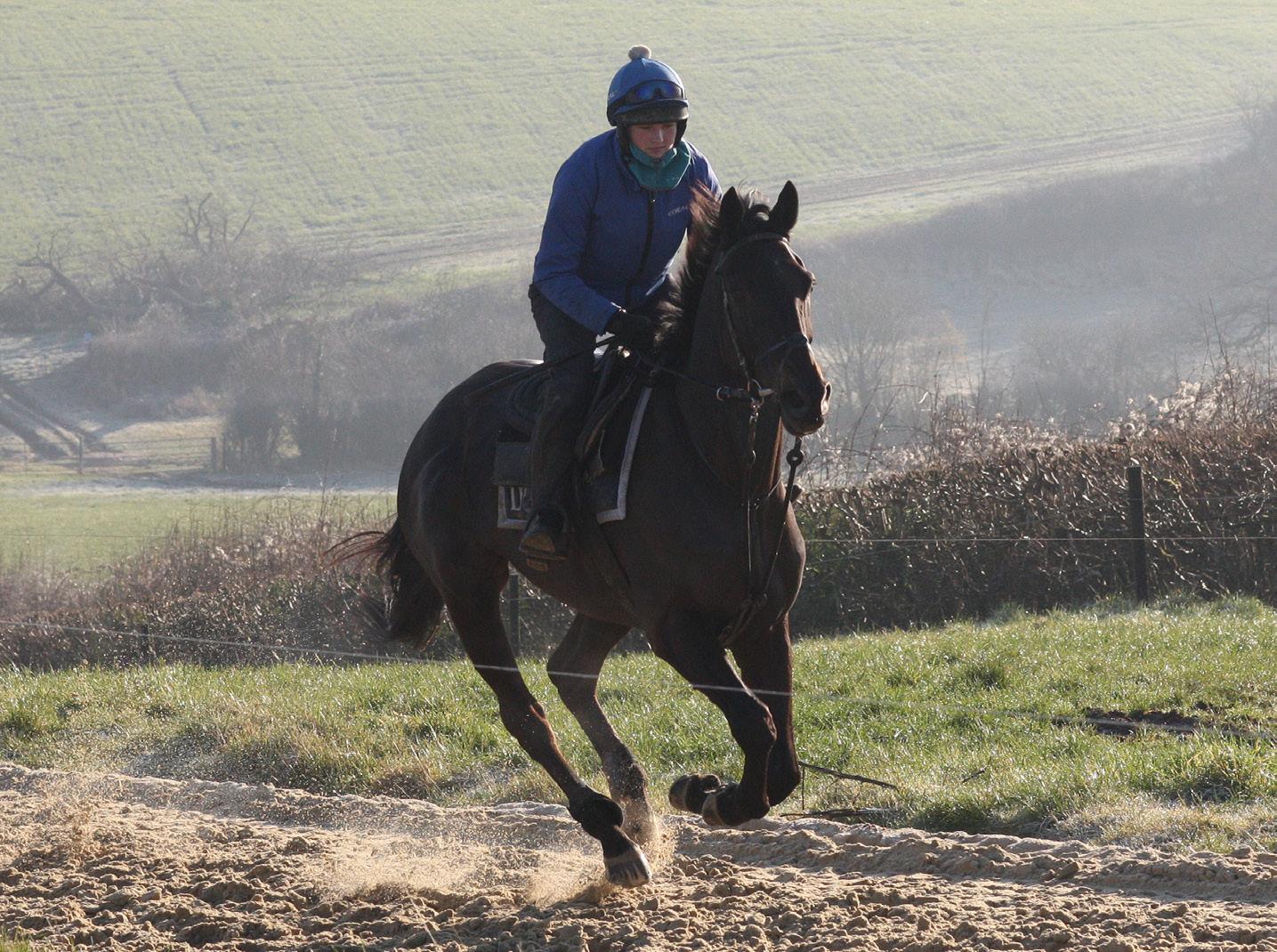
good jumper and, after finishing second in a Grade 2 at Ffos Las, was an impressive winner at Newbury on his latest start. He is a nice young horse who is
still improving, and he should be well suited by a strong gallop over 2m4f in the Jack Richards Novices Handicap Chase on the Thursday.
Age: 6
Sex: Gelding
Colour: Bay
Sire: Affinisea
Dam: Lough Derg Lily
Official Rating: 129
Race entered:
• Albert Bartlett Novices Hurdle (3m Grade1) First Confession
Another horse to graduate from the Irish Point To Point field, having won his only start in a 4-year-old Maiden. He has won two of his four starts in Novice Hurdles this season, both coming at Ascot over 2m3f on good ground. He is a big horse with a huge stride, and he gives the impression that the step up to three miles in the Albert Bartlett will really suit him. He goes there in great form, and despite currently being quite long odds we quietly fancy him to run into a place.
Age: 7
Sex: Gelding
Colour: Bay
Sire: Getaway
Dam: Far Rock
Official Rating: 132
Race entered:
• The National Hunt Challenge Cup Novices Handicap Chase (3m6f)
Already a winner of a Grade 2 hurdle and a Novice Chase, Rock My Way joined us part way through this season, having previously been trained by Syd Hosie and Anthony Charlton. He has had one start for us, finishing second in a Novice Handicap at Doncaster in January. He is a talented horse who is really pleasing us in his work at home. He is untried over further than 3 miles, but gives the impression of a strong
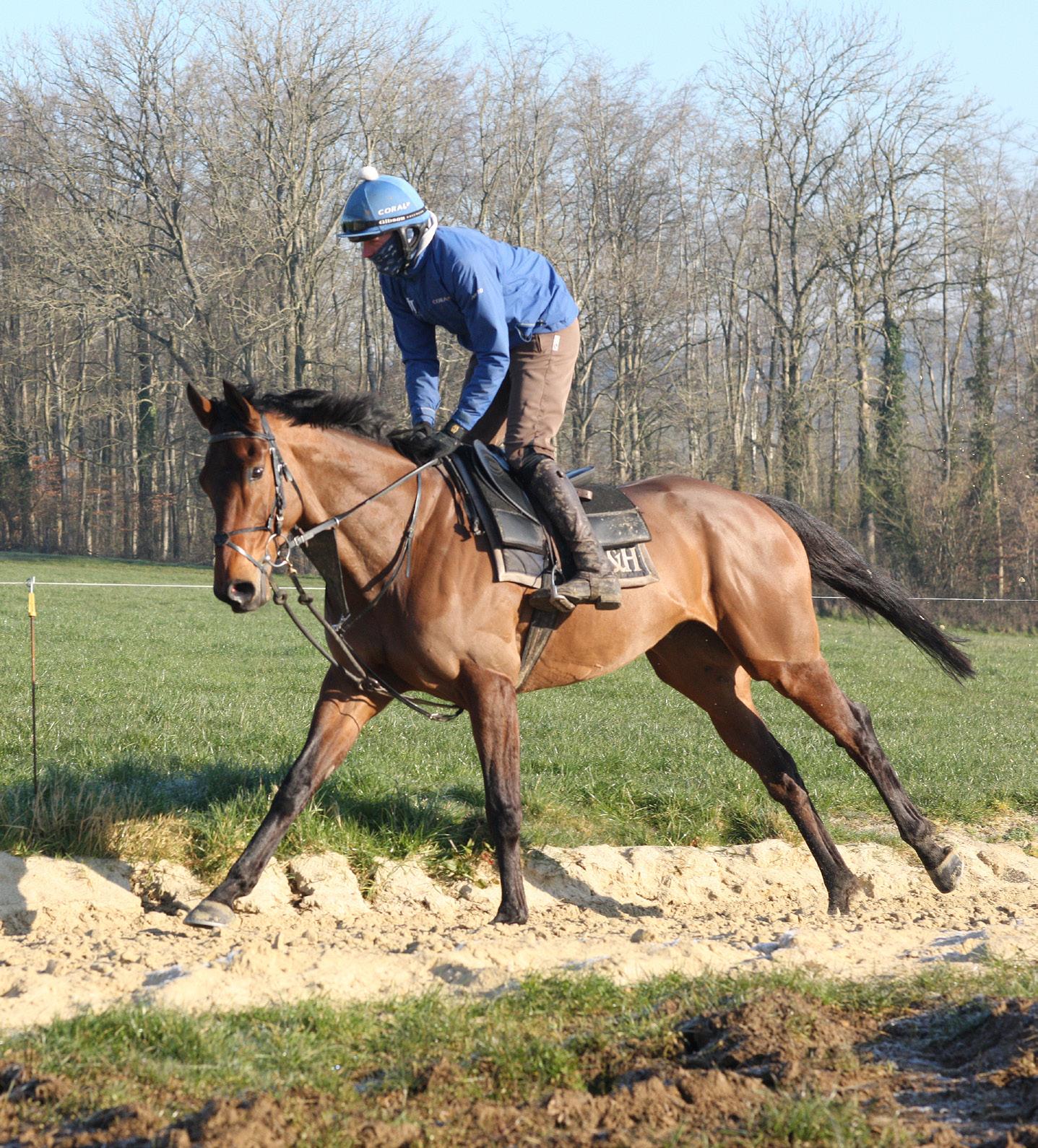
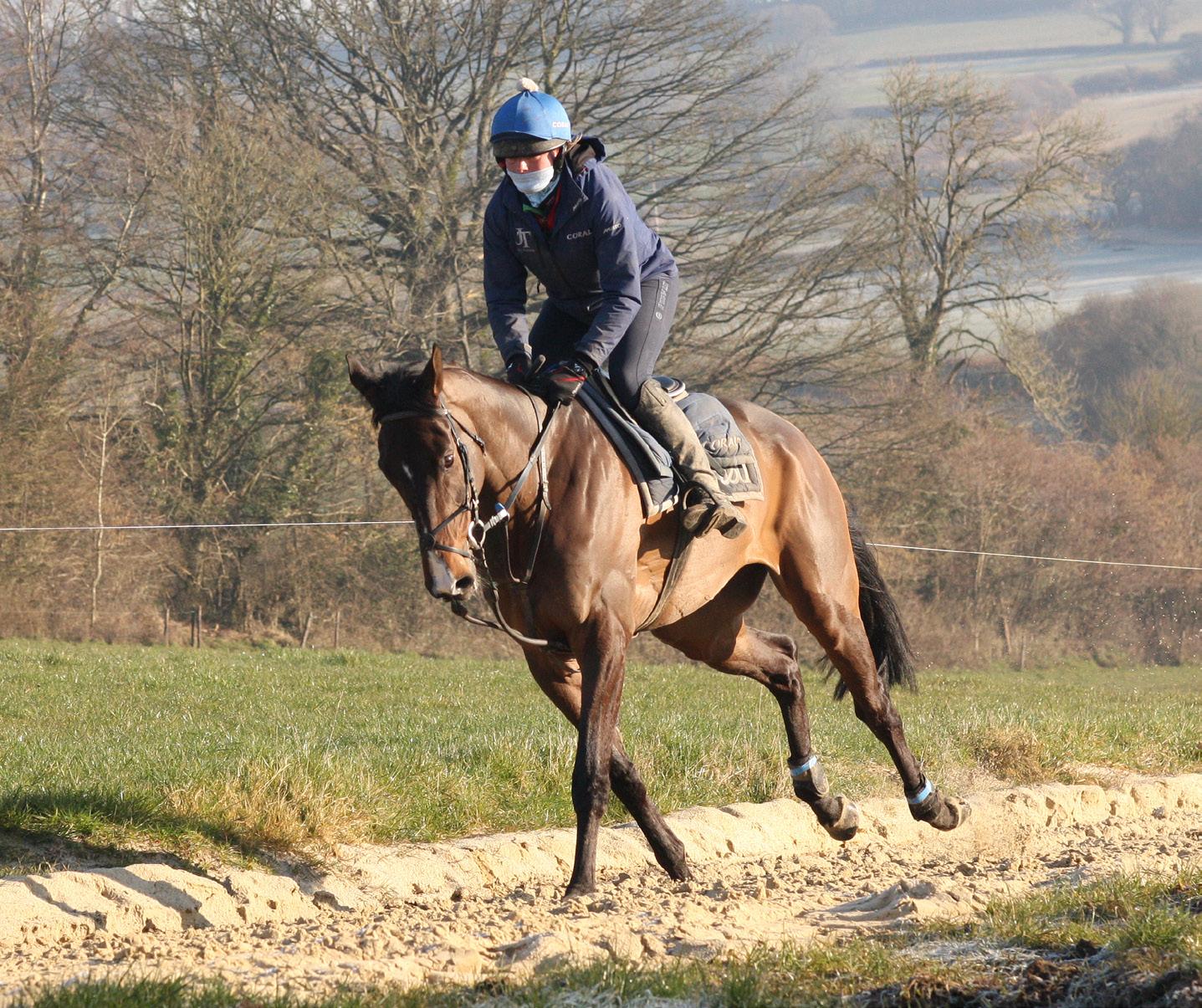
stayer and the race has changed to a 0-145 handicap this year, meaning he will carry a fairly light weight off his rating of 132.
He is not guaranteed to run at Cheltenham, though, as he has the option of a valuable race at Uttoxeter the following Saturday.
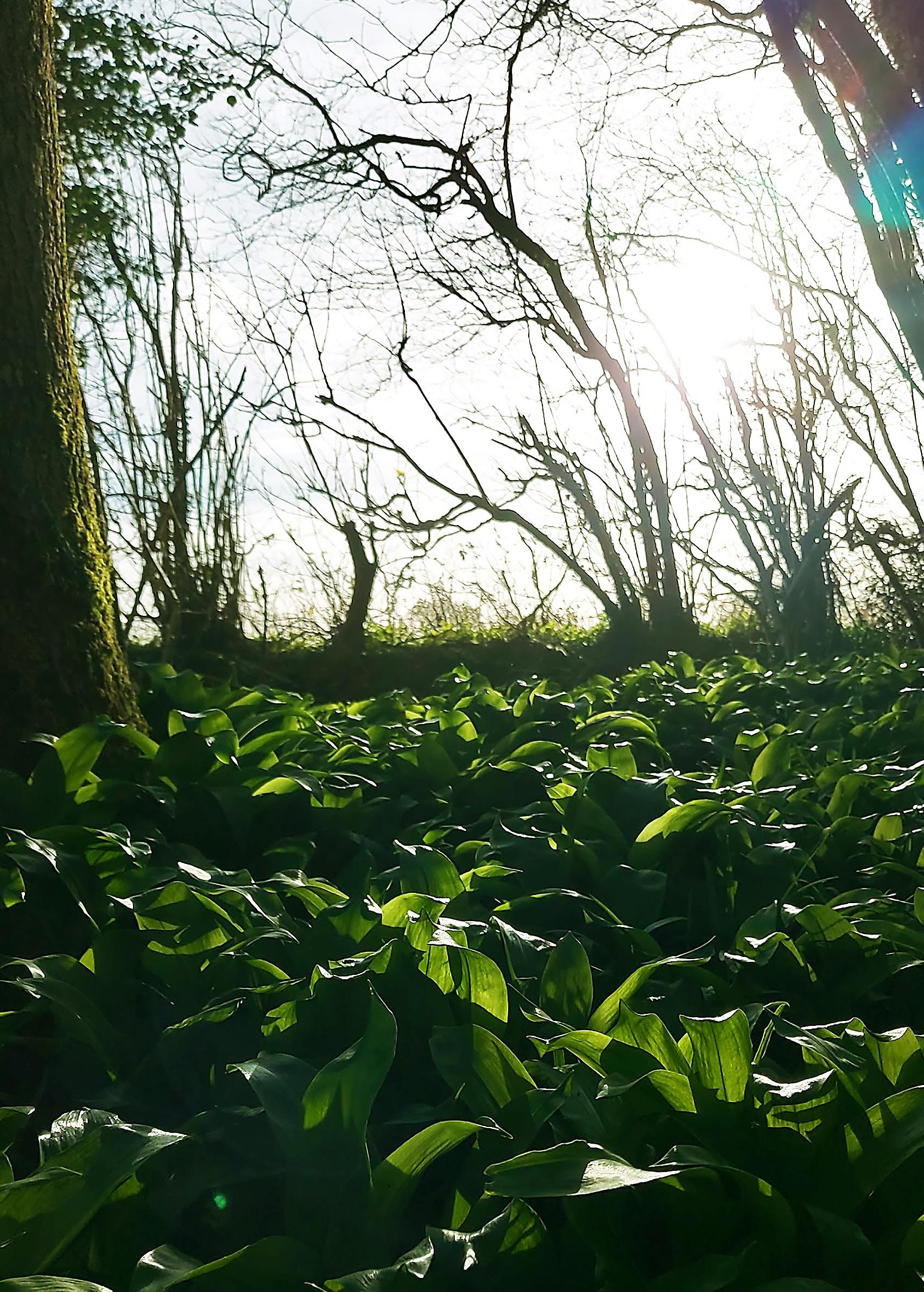
The
scent, the colour, the folklore ... wildlife writer Jane Adams says wild garlic isn’t just food for the table, it’s a tonic for the end-of-winter soul
Two things hit you when you step into a wood full of wild garlic: the sharp, pungent scent and the lush, almost irresistible colour that makes you want to dive right in. Each March, I visit a wood just like this. Brown hares lollop lazily around its edges, and one year, a roe deer passed so close I heard its vapourous breath. These places hold a magical quality – calm and quiet, and a world away from the rush of our modern lives. In a few weeks, the wild garlic’s starburst blooms and bluebells’ drooping bells will overwhelm these fresh leaves.
But for now, before the flowers appear, it’s the perfect place to recharge a winter-weary mind and body with a generous dose of green. It’s probably no surprise to learn that wild garlic, as well as a useful source of food, has a long history of medicinal uses. At one time, it was used to support heart health, lower blood pressure and improve circulation. Rich in sulphur compounds, it shares many of the same benefits as cultivated garlic, though milder. Herbalists also used it as a natural antibiotic and remedy for colds, digestive issues and skin conditions – a perfect way to purify the blood after the harsh winter months.
The smell of crushed wild garlic will linger for days – even weeks – on your boots
Wild garlic goes by all sorts of names. You’ll often hear it called ransoms, but also bear’s garlic, gypsy’s onion and stinking nanny (which seems a bit
The Latin name for wild garlic, Allium ursinum, comes from the word ursa, meaning bear. This is down to the fact that brown bears dig up and eat the bulbs in the wild, leading to one of the plant’s common names, bear’s garlic. If you go down to the woods today, you’re in for a big surprise ... but it won’t be a bear!
harsh on the nannies!). In Dorset, people believed it either scared off or attracted the Devil, earning it the name devil’s posy. Its powerful, almost otherworldly fragrance likely helped fuel these folklores, giving wild garlic a bit of a mysterious air.
Foragers love its edible leaves, which pack a real punch of garlicky flavour. It has a long season –four to five months – so you don’t have to rush out and start picking, but they’re best picked before the flowers bloom, usually from late February to early April, as the leaves turn more bitter once the flowers show up.
Me? I’m all for just leaving it be.
Just the sight of its deep unspoiled lushness is enough to purify my sluggish winter blood. And don’t worry, you won’t forget its scent in a hurry. The smell of crushed wild garlic is likely to linger with you for days – even weeks – when it is caught on the soles of your boots. Leave your wellies in your car, and every time you pop to the shops or dash for the school run, you’ll get a little whiff of that green goodness all over again.
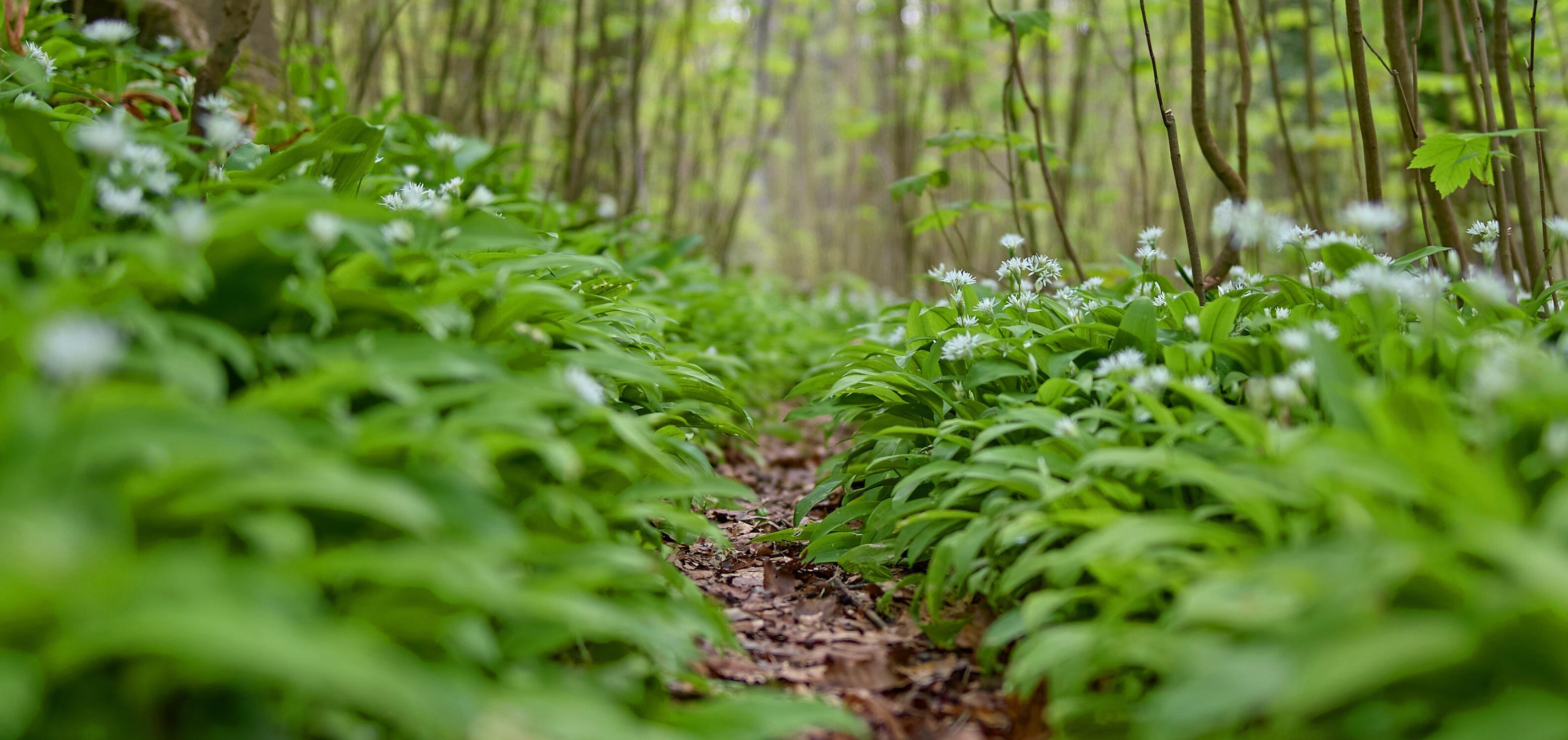


Adult sandwich tern flying over Brownsea Lagoon, showing its characteristic yellow bill tip or ‘butter from its sandwich’
Brownsea Island welcomes thousands of birds and visitors every year. Jonny Owen, Brownsea ranger explains how Dorset Wildlife Trust is stewarding this precious natural environment for future generations and introduces The Lookout, a brand new wildlife observatory with stunning views across the Lagoon.
Brownsea Island’s nature designations include Site of Special Scientific Interest (SSSI), Special Protection Area (SPA), and it is on the Ramsar List (the list of Wetlands of International Importance, the world’s largest network of protected areas). It is also part of the Purbeck Heaths National Nature Reserve (NNR). Behind these bewildering acronyms lies a more rousing truth: a deep collective desire and pledge to protect this natural paradise.
In the early 1960s, Helen Brotherton, CBE BEM Dorset Wildlife Trust’s late founder, sailed her

boat to Brownsea to explore, and immeidately recognised the importance of Brownsea’s lagoon to birds such as dunlin, curlew and redshank. Helen set to work mobilising partners like the National Trust as well as the local Poole townspeople to fundraise, successfully outbidding prospective developers to protect Brownsea – which became Dorset Wildlife Trust’s first nature reserve. In the 1850s, Colonel Waugh built Brownsea’s lagoon wall with more than a million bricks, encircling St Andrew’s Bay to increase his beef cattle pasture. The first world war meant there was little appetite for repairs when the seawall breached in 1916, flooding the cow’s pasture. This happy accident started the quiet transformation of 80 acres into prime brackish lagoon, reedbed, and saltmarsh – a rich mosaic to host a bewitching assemblage of birds.
Typical spring surveys boast 40 or more different wetland species, some of which are present in their thousands: in February this year I counted more than 4,300 dunlin!
Brownsea is vital for overwintering and breeding birds alike. It is the only part of Poole Harbour,

which is non-tidal, meaning winter visitors can feed on exposed mud even at high tide, and in summer, nests will not be washed out. Its wall offers shelter and its position within Poole Harbour brings prime fishing opportunities.
We count every bird on the lagoon weekly – also the eggs, nests and young in the breeding season, giving us data reaching back more than fifty years. In 1972, just five sandwich terns were recorded: by 1979, a whopping 320 birds heralded the future.
We saw a steady upward trend in numbers until a record of 509 sandwich terns was recorded in 2020 – I remember the excitement of that day!
From the Tern Hide, visitors can enjoy the closest views of breeding sandwich terns in the country, witnessing the air drops of sand eels to hungry chicks, the aerial acrobats and the deafening melodrama of the tern colony has inspired many young minds towards a career in conservation. Thanks to the generosity of our members and supporters, we are extending the breeding islands, making more space for the birds.
Further around the lagoon is a brand new wildlife observatory, The Fine Foundation Lookout, which will welcome its first visitors when Brownsea reopens on Saturday 15 March 2025.
The building is nestled among trees and has been constructed using sustainable materials designed to weather over time and soften into the natural setting of the Lagoon. From its elevated position, visitors will have spectacular views of the many birds which nest and feed on the lagoon.
The Lookout is part of the Wild Brownsea project in partnership with National Trust. It was partly funded by The National Lottery Heritage Fund, with generous contributions from The Fine Foundation, National Trust and of course Dorset Wildlife Trust members and supporters. The aim of the Wild Brownsea project is to make the natural heritage of Brownsea more accessible for people of all ages and backgrounds and has included the construction of boardwalks, improved access to the bird hides and outreach and engagement work with many local community groups.
Brian Bleese, Dorset Wildlife Trust’s chief executive, said: ‘We are delighted to welcome visitors to The Lookout where they can immerse themselves in the rich birdlife of Brownsea Lagoon and discover more about the island’s remarkable wildlife. The building’s innovative design allows visitors to truly connect with nature. Despite the challenges of building in such a remote location, with all materials needing to be transported to the island by boat, the dedication of our contractors, Townsend Timber, and project team turned this exciting vision into reality and I would like to extend my heartfelt thanks to everyone for their hard work and commitment.’
• Brownsea Island will be open daily from 15 March to 2 Nov 2025, 10am to 5pm. More information is available at nationaltrust.org.uk/brownsea-island
• Find out more about the Wild Brownsea project here: dorsetwildlifetrust.org.uk/wildbrownsea

The historic view across Colonol Waugh’s cow pasture towards Brownsea Castle, before the 1916 breach in the sea wall which created what is now a wildlife-rich lagoon
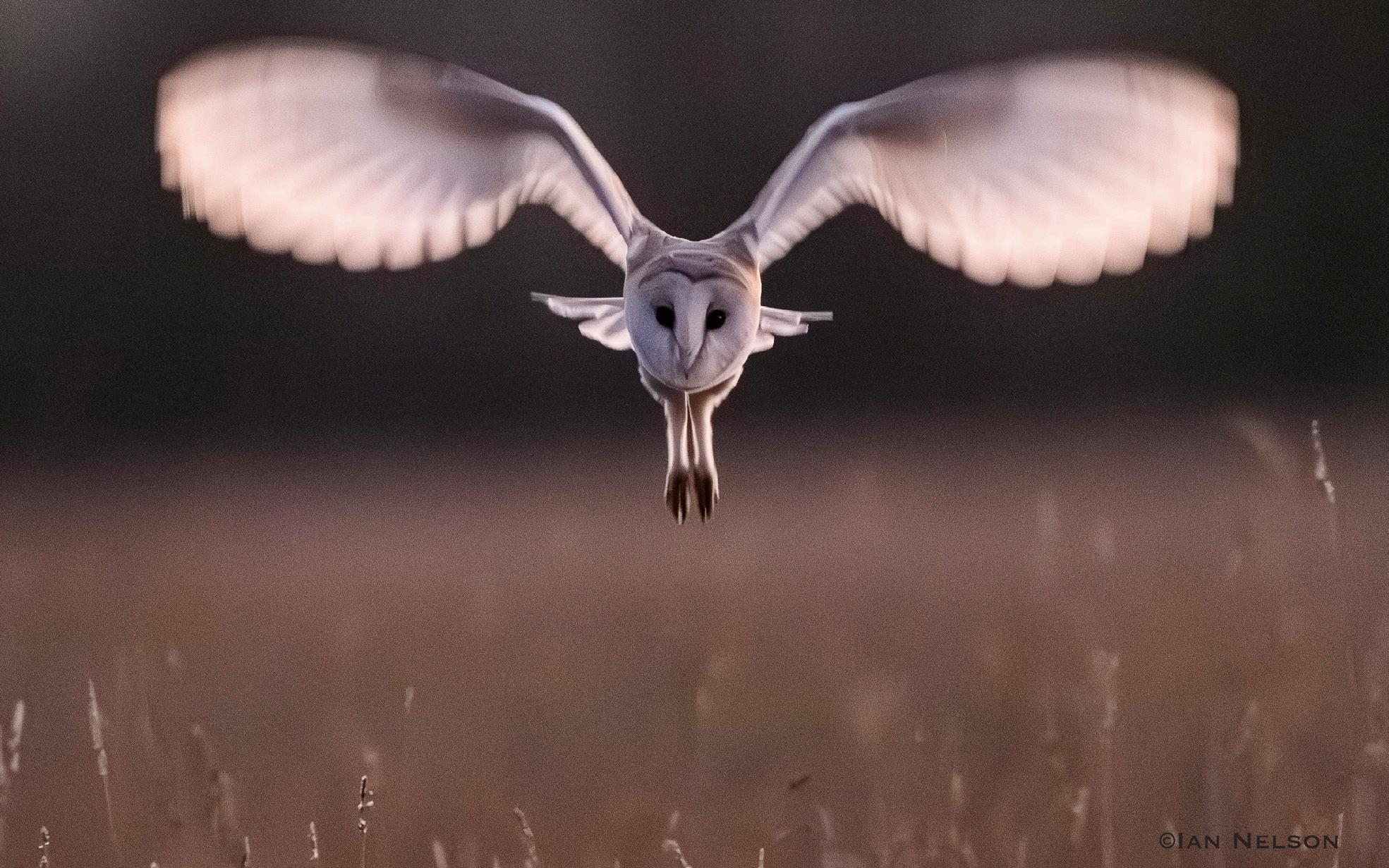
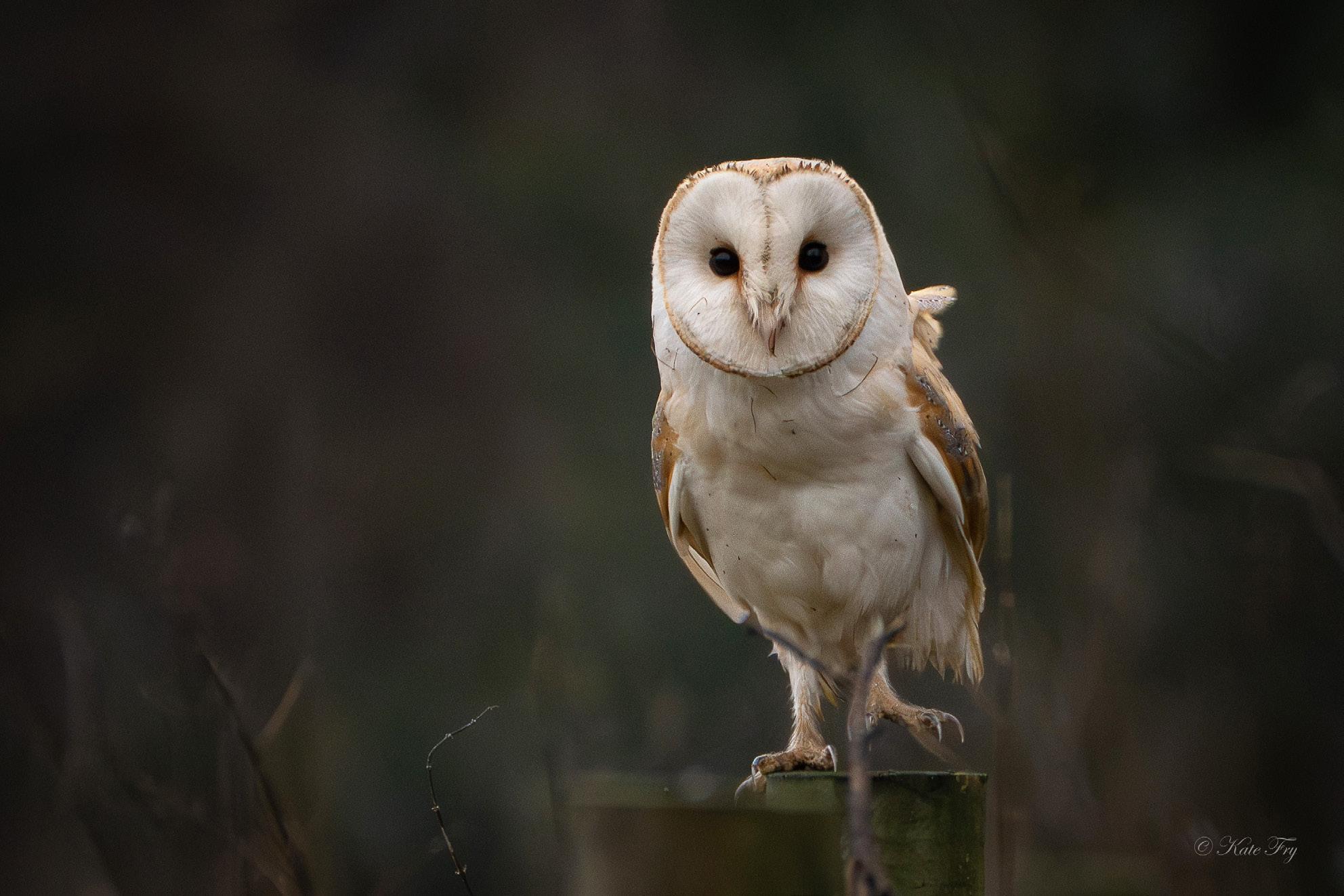
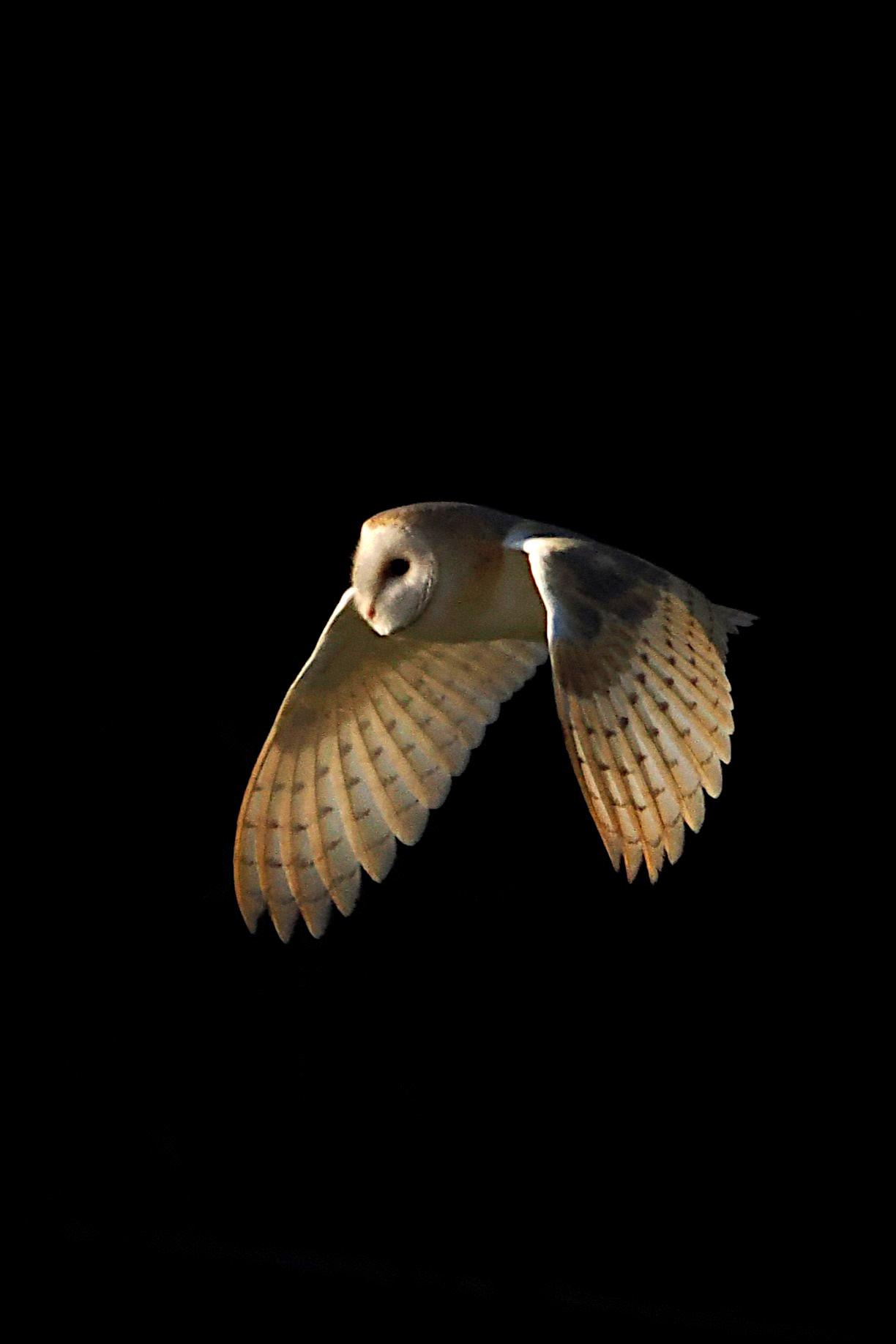


you ...
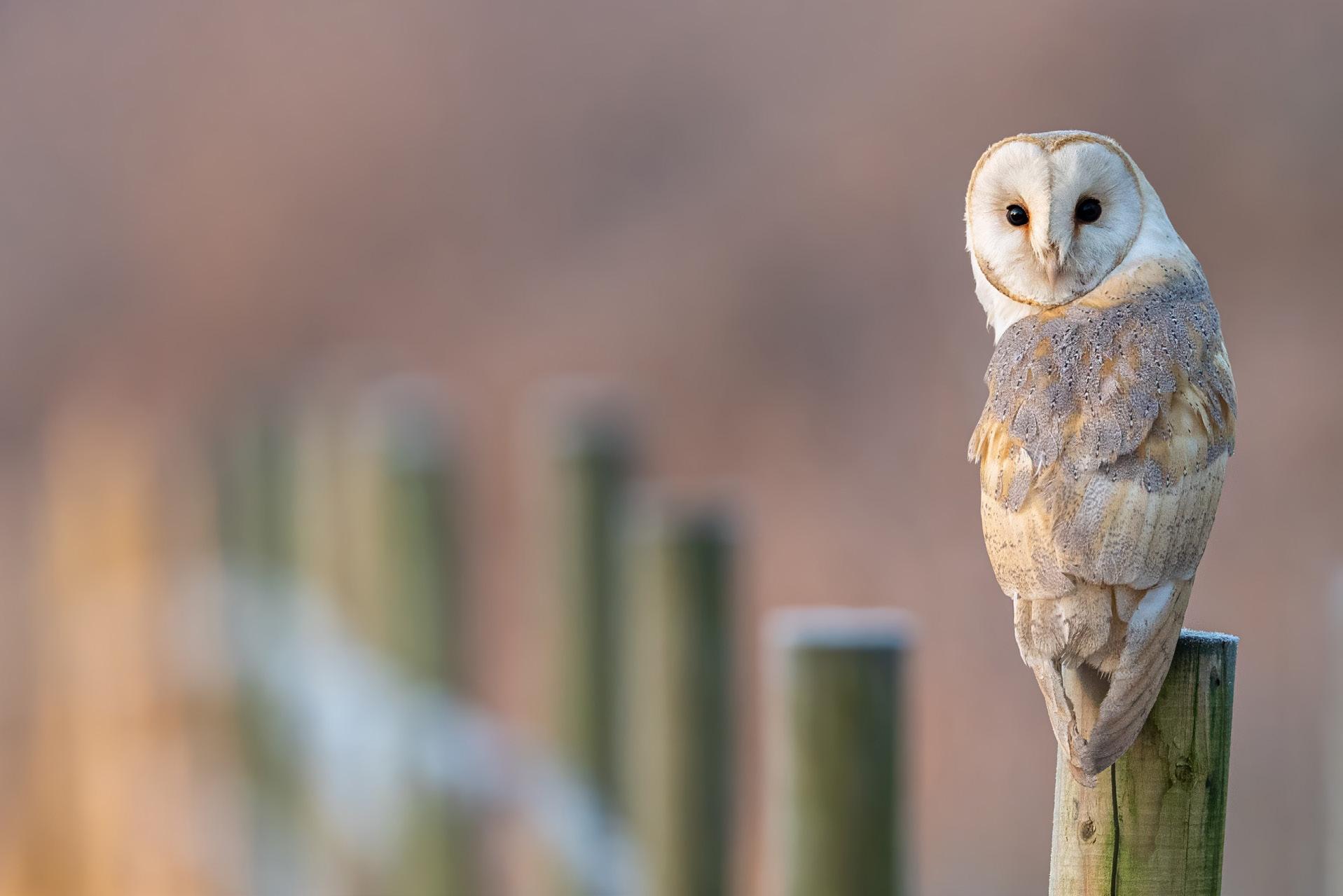
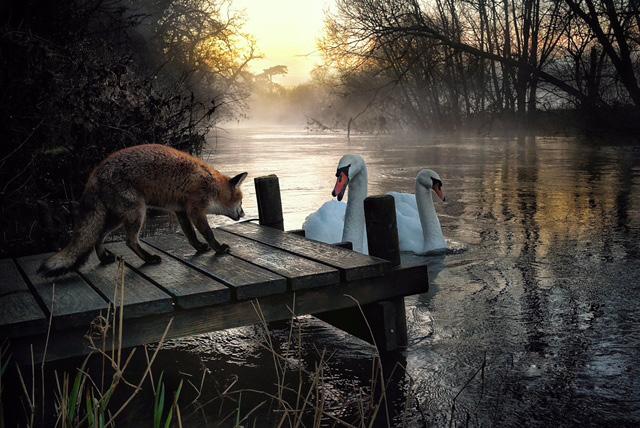
Meet
We welcome photography submissions from readers – the only rule is that they must have been taken locally in the last month. Our cover shot is always selected from our submissions pile. If you’d like to join in, please share it in The BV community Facebook Group or simply email it to us on photos@bvmagazine.co.uk
Someone

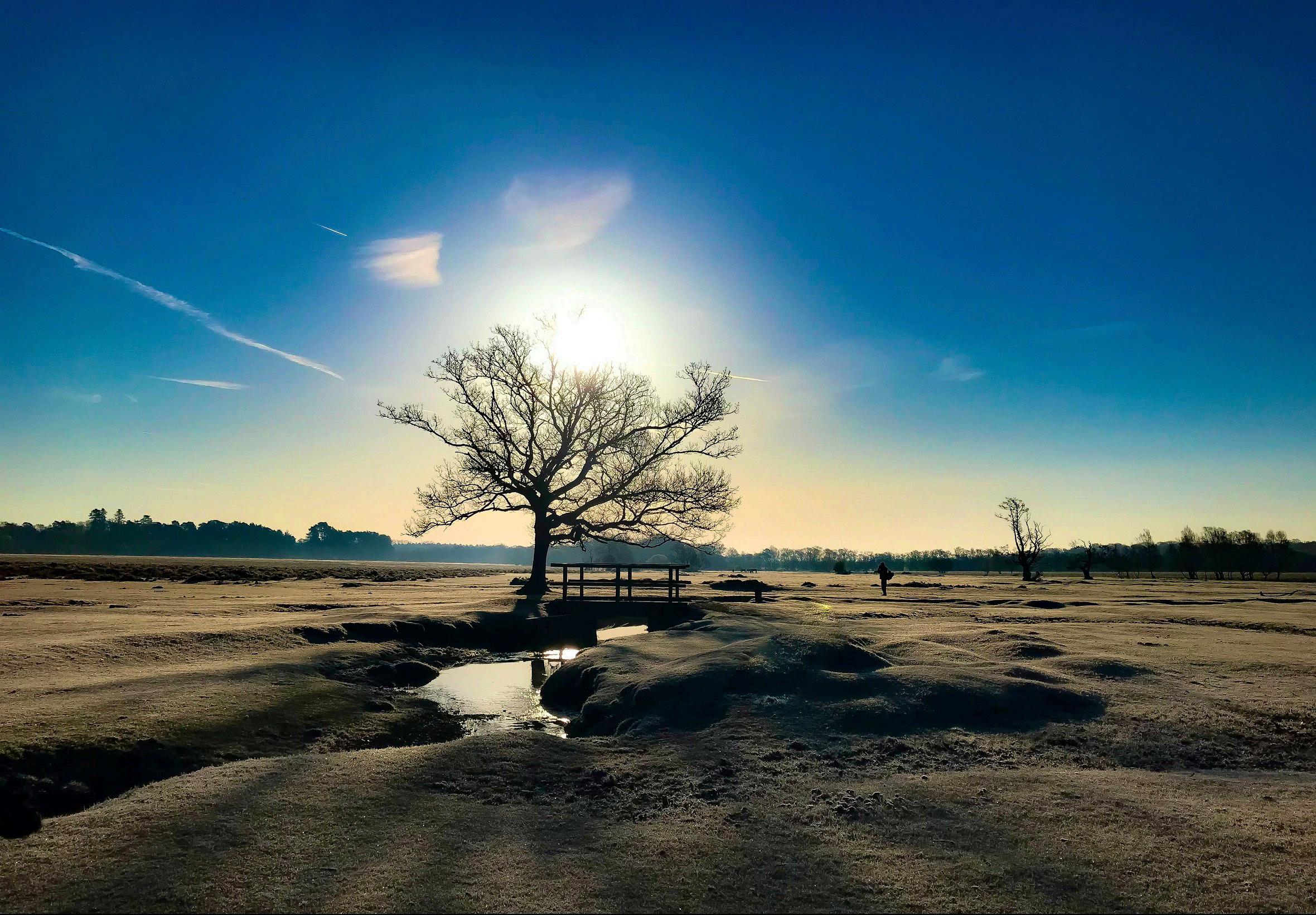
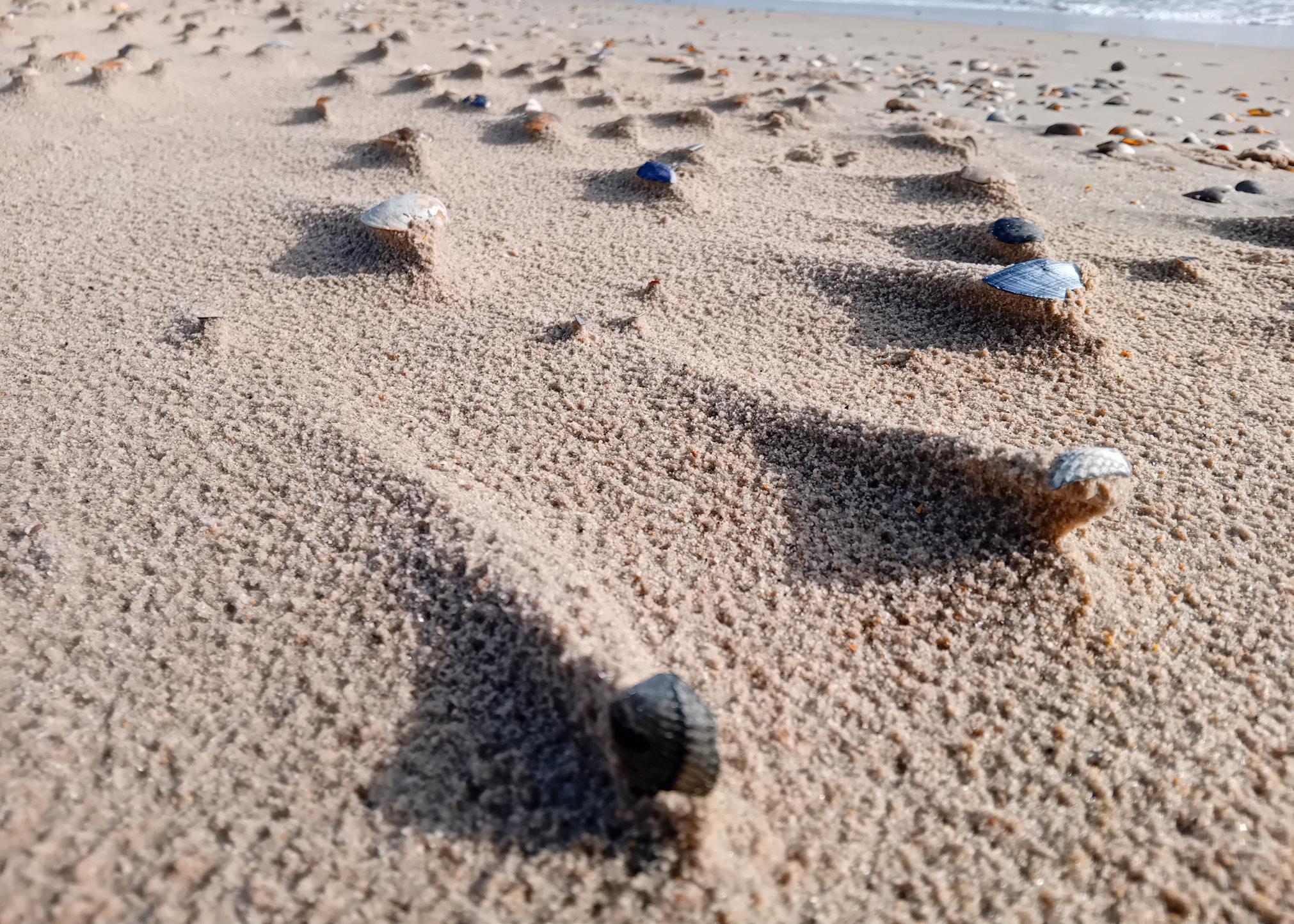


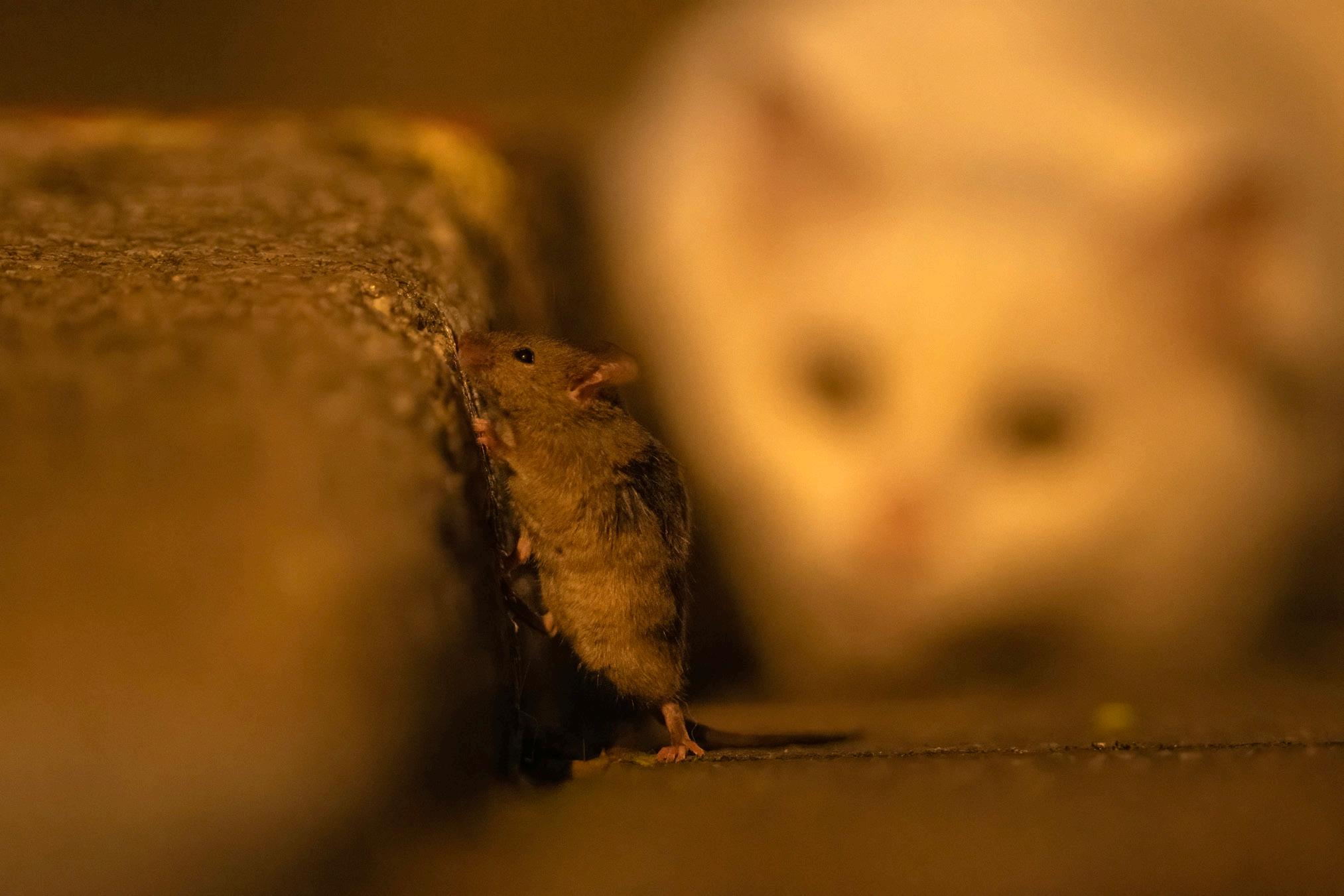
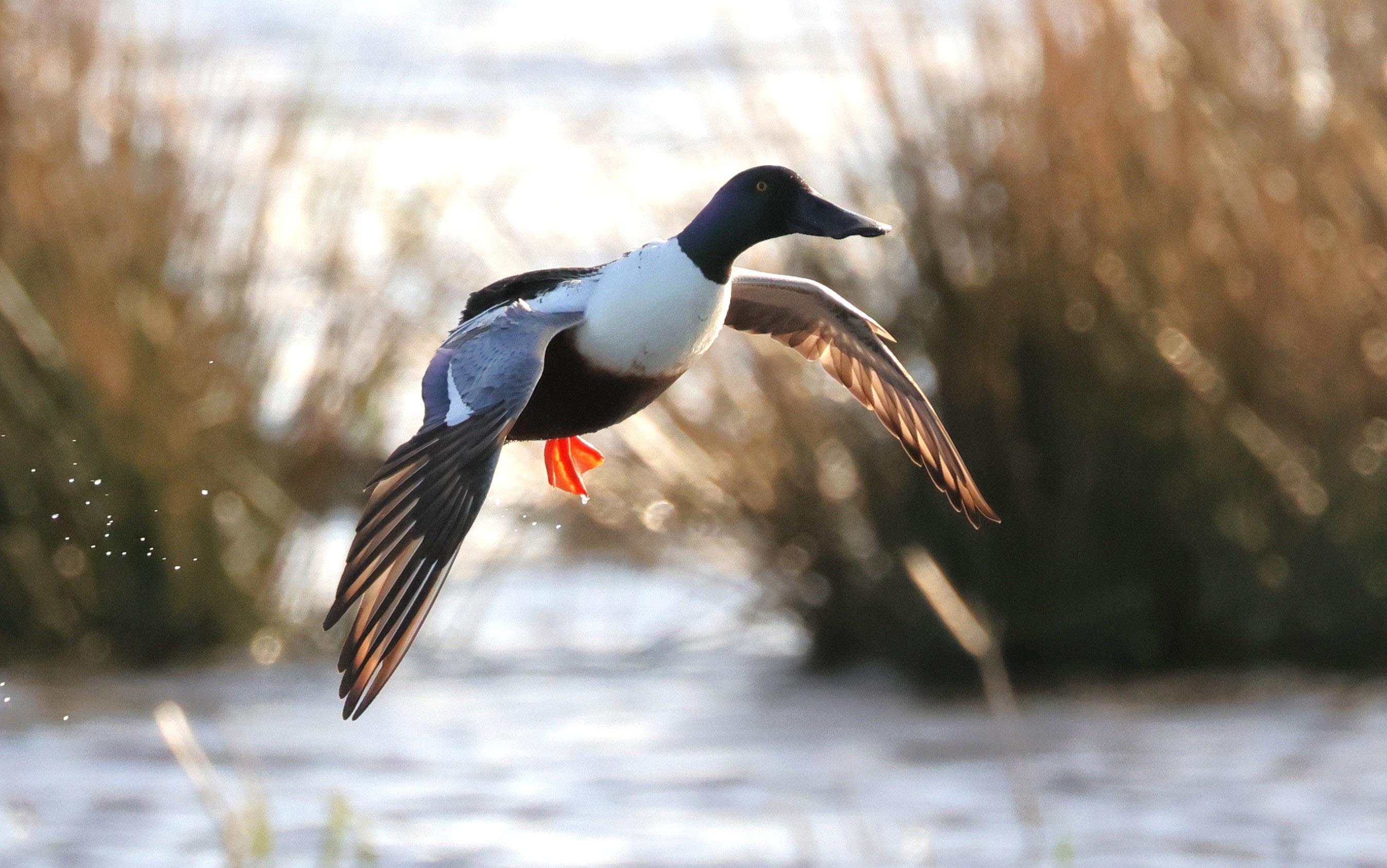
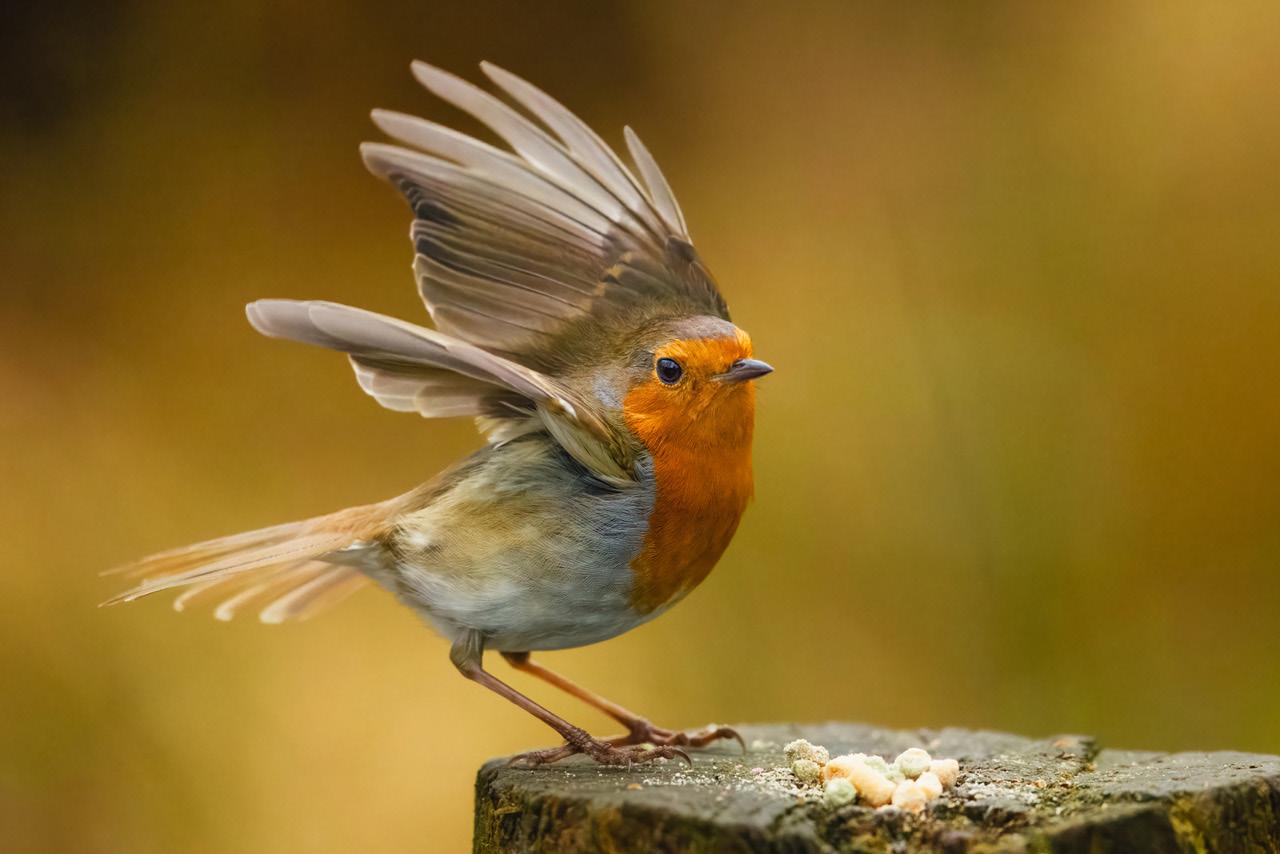
Spring awakenings

With longer days
on
the horizon, it’s time to sow, plant, prune, and mulch – but Pete Harcom says don’t be fooled, frosty nights aren’t over yet!
The clocks will go forward on Sunday 30th March … spring is finally in the air, but be careful, it can be late April or even May before night time frosts are finally over. If the weather allows and the soil is not frozen, this could be a good time to prepare a flower bed or even create a new one. Make sure to incorporate plenty of good compost if the soil is in any way impoverished. Consider the siting of the bed when you plan the plants (how much light will they get here?). Also consider the edge of the border – does it need some defined edging?
Once the border is prepared, annual flowers can be sown from March onwards: just rake the soil to a fine tilth on a dry day. Watch the weather forecasts for any frosty nights, and protect it if necessary with cloches or horticultural fleece.
It’s often best to be patient and wait until late March before you purchase any tender plants like fuchsias and pelargoniums unless you have some good frost protection ready for them like cloches or a cold greenhouse.
Keep an eye on weeds – take them out now with a hoe or similar, before they sart to spread. Cover all bare soil patches and around shrubs with a good


March is the month to plant some colourful anemone coronaria tubers – but note that they need particularly well-drained soil, so be sure to add some grit to the soil to avoid water logging
thick layer of mulch or garden compost. Also take the opportunity to top up your potted plants with a layer of mulch or compost.
March is your last chance to plant bare rooted trees and shrubs. Prune any bush and climbing roses quite hard, back to strong stems, with a sloping cut, no more than 5mm away from a bud.
Now’s the time to plant your summer-flowering bulbs such as lilies and gladioli. If you’re tempted by some anemone coronaria tubers, note that they need particularly well-drained soil, so ensure grit is added to the soil when you plant them to ensure that drainage is good and to avoid water logging.
Divide your hostas now, before they come into leaf, and also any hellebores and polyanthus-type primulas after they finish flowering.
Keep deadheading the winter-flowering pansies –they will carry on into the spring and even to early summer, if attended to frequently. Also deadhead your narcissus (daffodils) as they fade, but leave the foliage alone to die down naturally.
Check whether any of your pots need watering – even at this time of year, they can dry out, especially those that are sheltered by eaves or balconies, as they can miss out on any rainfall.
Hedgehogs will be emerging from hibernation around now: do remember that slug pellets are poisonous for hedgehogs, and frogs too, as they eat the snails and slugs that have been killed by the slug pellets. Lastly, if you can, clean up the inside of any bird nest boxes early this month, before they move in!
Thanks to the miserable weather, very little groundwork was carried out in preparation for the spring. Even during the drier spell at the beginning of February the lack of sunshine coupled with low temperatures meant there was little drying out of the soil – and just as it became workable on the 19th we had more rain, putting us back to square one again.
We had a good harvest though, so we’ve still been cropping parsnips, carrots, leeks, sprouts, broccoli, forced chicons, winter radish and salad leaves. From our store we’re still eating oour own potatoes, onions and winter squash, and in the freezer we have peas, broad beans, French beans and the last of the sweetcorn.
The work we did manage to achieve this month:
• Broad beans: We’ve put six trays of young plants outside to harden.
• Fruit: Pruned the gooseberry and currant bushes, and the pear trees. We also cut down the old autumn raspberry canes to ground level. Mulched everything with manure, and weeded the strawberry patch.
• Greenhouse: We washed the glass.
• Plot work: On the 19th we spread manure
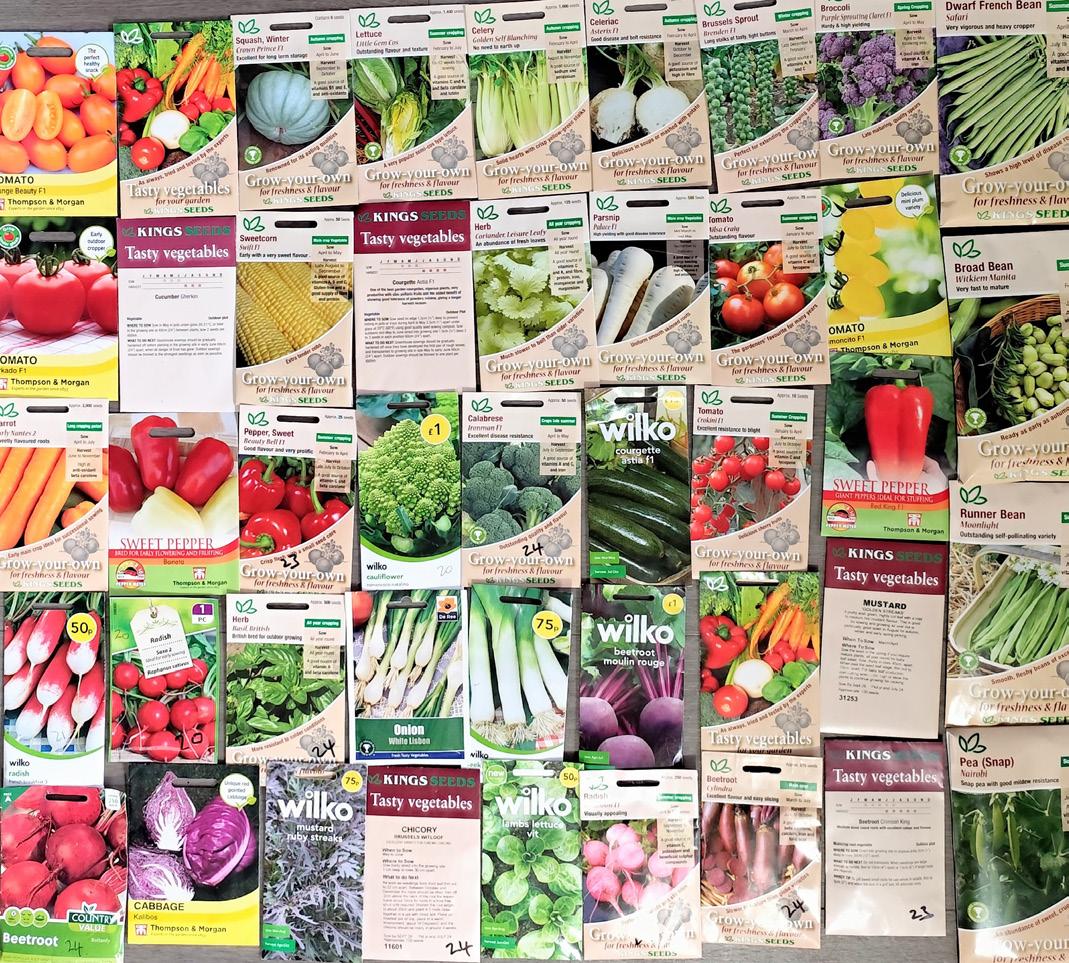
Barry Cuff grows more then 30 different types of fruit and vegetables each year on his allotment
on all the empty areas vacated by harvested vegetables, and all around the brassicas.
• Potatoes: We planted two Jazzy potatoes in a tub for some early new potatoes. PreservedWe had a chutney-making session.
• Seeds: We sowed lettuce and red cabbage in plug trays. We also sowed trays of mixed spicy leaves and an agricultural pea (to eat in salads as young sprouts).
• Sweet peppers: We pricked these out into individual pots.
We grow more than 30 different vegetables on the plot and in the greenhouse, and all are raised from seed. It is admittedly becoming expensive, but it is still good value. Stored correctly, most vegetable seeds will still germinate well after two or three years, some even longer (this year we are using cabbage seed bought in 2021!)
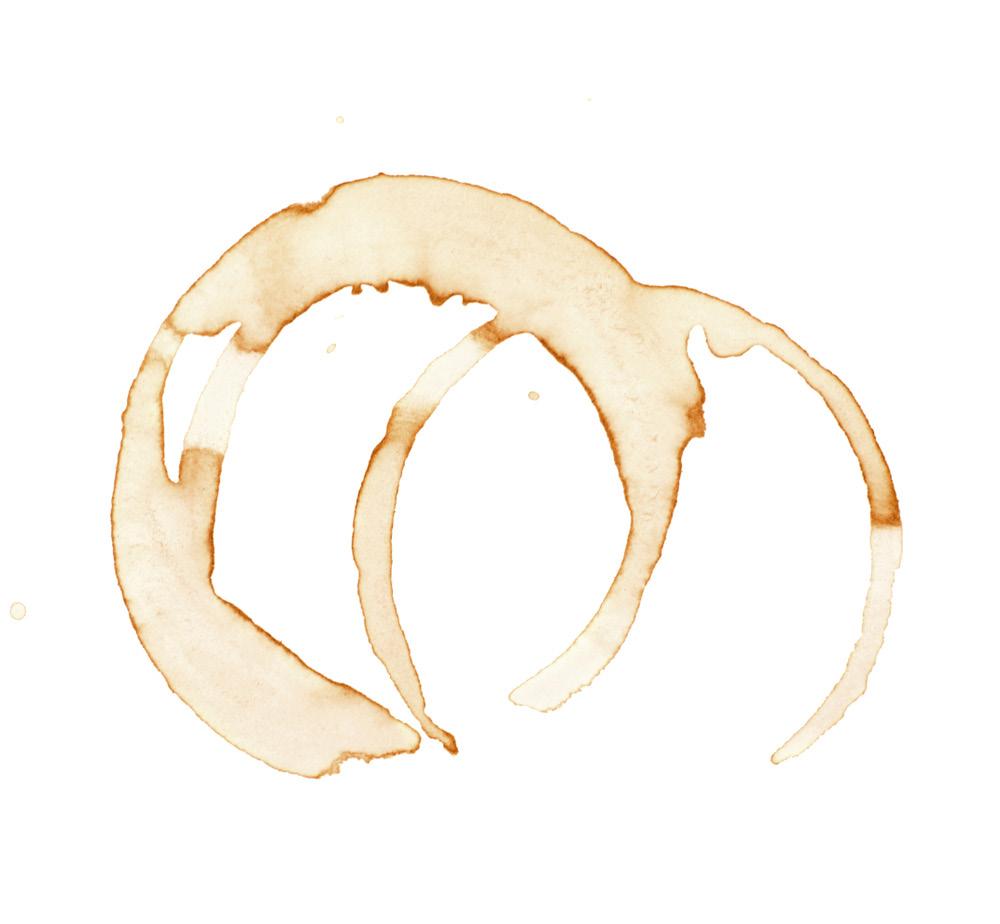
We test most carried-over seed to ensure it is still viable, and any with a germination rate below 50 per cent is discarded.
We have found that French beans do not perform well after the first year, but contrary to advice given parsnip will perform well providing it was above 90% germination rate when packeted.
Our Allotment Association is able to buy seed from Kings Seeds at a 40 per cent discount. Because we have a large plot and grow a wide range of vegetables, our seed bill is around £60 this year. The majority of packets are bought from Kings, with a few from Fothergills and Thompson & Morgan. There are some good value packets to be had from Wilko and CountryValue.co.uk. We always look at their displays and end up buying a few!
The majority of our veg are started in plug trays, seed trays or small pots, using a good quality multi-purpose compost. Carrots, peas, parsnips, beetroot, spring onion and winter salads are all sown direct into the ground.
We now need some decent March weather so that work on the plot can start in earnest!

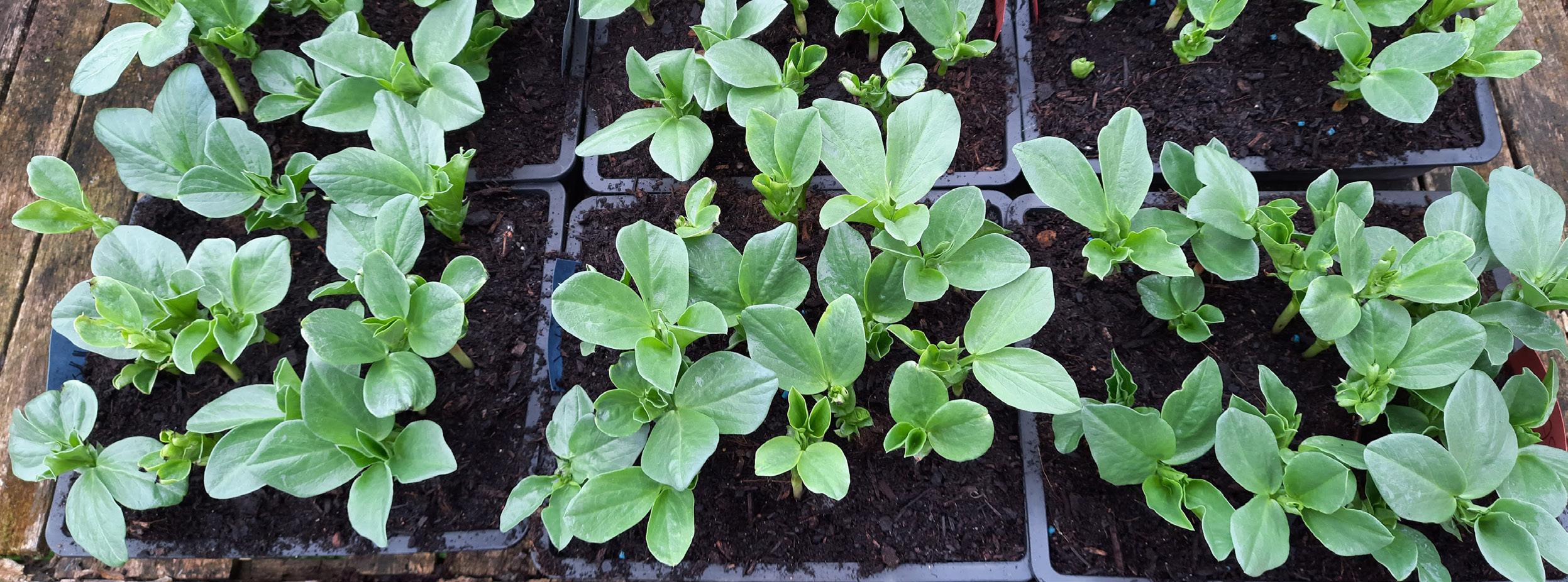
Ploughing
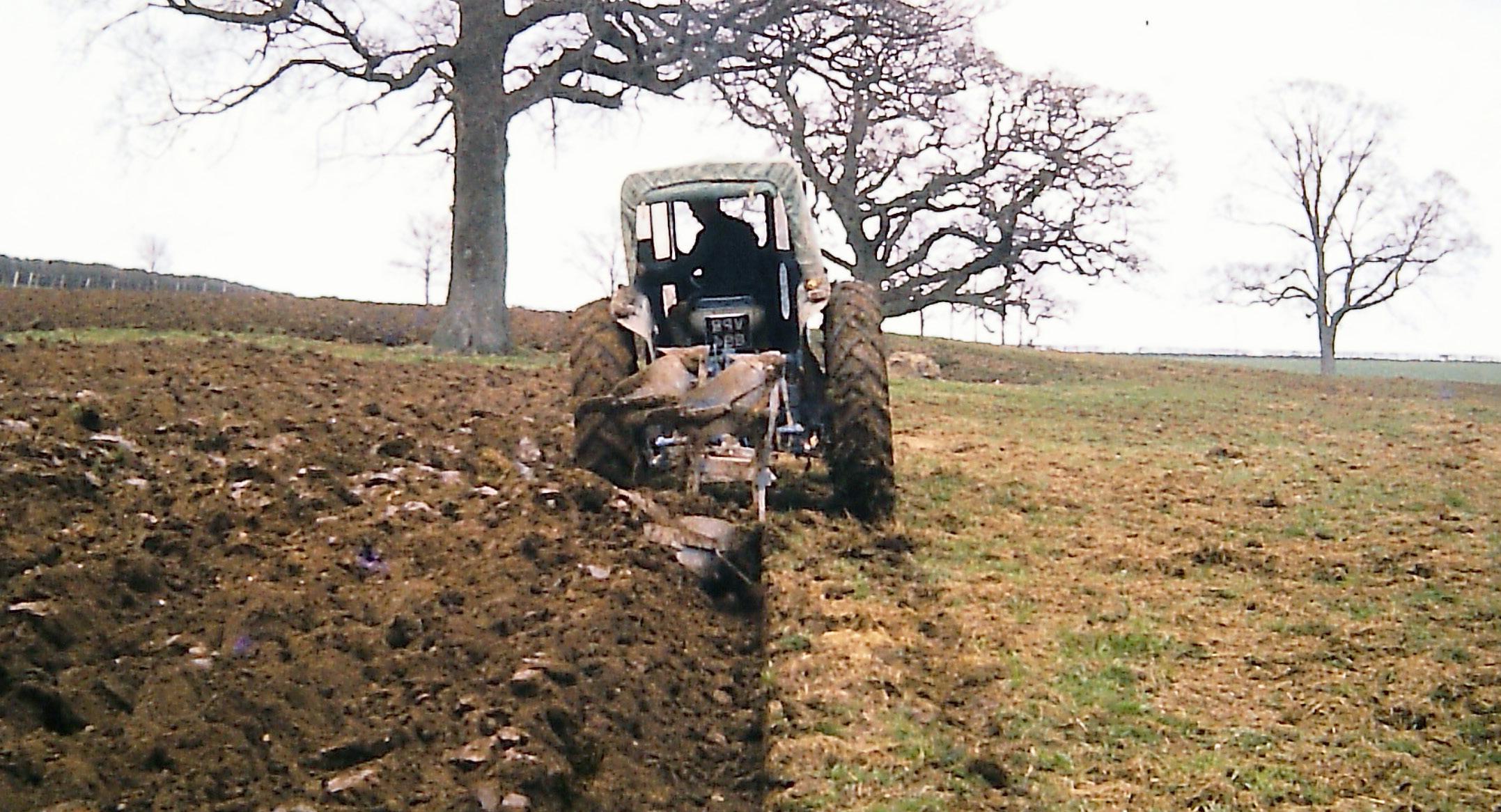
Red tape, red tractor, and no red cards ... James Cossins has had a winter of TB testing, audit headaches, and a well-earned break at AFC Bournemouth
The sun is finally shining and with spring just around the corner we can hopefully look forward to some better weather – and better fortune for us at Rawston Farm. The dreaded TB testing cycle came round once again in early February: as the majority of the 700 cattle were inside the testing was easier, but did still take up almost four days. The result was not so pleasing though with one beef animal being a reactor and four milking cows becoming inconclusive, despite the fact that 60 days earlier they had passed the dreaded gamma test. So once again we had to send cattle off to the abattoir for TB reasons. The results all came back negative, and now we have to wait until we test again in 60 days time – much to everyone’s frustration. Having talked about our TB nightmare here in The BV and on the podcast (if you missed it you can listen to James in
the January podcast here, he starts at 28:35 - Ed), I have had a number of farmers contact me who are in the same position: the odd reactor being found but no direct evidence of the disease. All we know is that the animal may have been exposed to the disease in one form or another. I am currently expecting a visit from a government official to hopefully give us some constructive advice as to the way forward.
So once again we had to send cattle off to the abattoir
We have had our annual Red Tractor audits for milk, beef and crops. A lot of paperwork has to be updated and assembled for these visits, which normally last four or five hours each. Fortunately the assessors are always from a farming background and have a good understanding how a farm works. At the end of the audits we did have a few non-compliances – mainly on updating records, which we
have now rectified. Red Tractor is currently under review, with many food producers calling for updates, feeling it has lost sight of its original purpose. I personally believe there should be better labelling on foods, showing that certain standards have been met and that the food was produced and processed in Great Britain. I also believe that many consumers still do not understand what the Red Tractor logo stands for.
Other food labels have appeared over the years, many claiming to represent higher standards then Red Tractor – and therefore commanding a premium price. Labelling will become ever more important as we face a growing influx of imported foods, often coming with little or no information on their origins or production standards.
The farming industry’s frustration with the Government over the inheritance tax issue certainly isn’t going away. A recent delegation from the farming industry went to meet
the Treasury with some counter proposals – which would have raised at least the same amount of taxes – involving taxing the land when it is sold, instead of when it is inherited. The proposal was not even listened to, much to farmers’ frustration.
Last month I spent a day with a number of fellow farmers in Bournemouth Square, meeting the public. We spoke to several hundred people, and all had a positive response to our concerns about the family farm tax. We talked about how food supplies could be disrupted if farms had to be sold off to pay taxes, and we discussed the very real possibility that the land would then be bought by investors or companies who wanted to offset their carbon, such as airline companies. I’m a fifth generation farmer, and we have a sixth and seventh generation keen to continue.
As a family, we’re seeking advice on how to reduce our tax burden to keep the farm viable for the future. It seems strange – almost
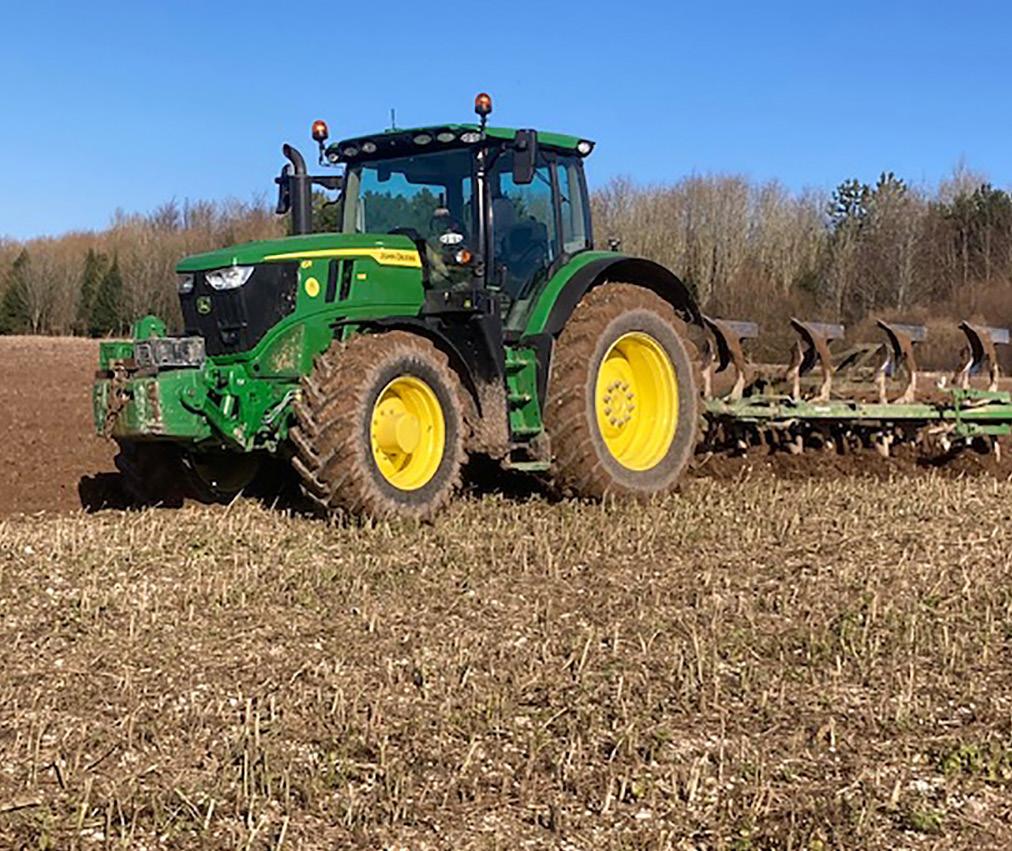
moved on
and in 2025 it’s slightly more high tech
ridiculous – that ‘working the tax system’ is the government’s own recommendation for lowering the amount of tax we’ll pay!
It’s ridiculous –‘working the tax system’ is the government’s recommendation
In other news
The weather will hopefully bring a busy month for all farmers and growers – we have so many jobs to carry out in dry weather such as sowing crops, spreading fertiliser,
Dorset FCN has been very busy hosting our two winter quizzes – more than 250 people joined us at Symondsbury Barn and the Udder Farm Shop. Both events were terrific, achieving the goal of getting people together to have a really fun evening, with supper and a quiz. Thank you to all those that supported the two events. As I write this, we have definitely morphed back into winter: it is looking extremely bleak outside. But spring is just around the corner, and by the time you read this I suspect the sun will be shining on lush new growth: snowdrops, daffodils, primroses and, soon, bluebells. Of course there is nothing better than newborn lambs running around a paddock.
preparing grass fields for cutting or grazing and hopefully turning out some cattle to grass!
On a very positive note my son Henry and I have watched some really entertaining football matches at AFC Bournemouth recently – especially the most recent FA Cup game which lasted nearly three hours, with extra time, penalties and a lengthy VAR to sit through.
Let’s hope their successful run continues!

When politics disrupts the equilibrium of country life, it can sometimes be tough to see the wood for the trees. FCN are here to help and listen – if anybody is worried in the current climate, please do not worry about things on your own. Use your family, friends and community to help get through this period.
If you need us for any reason, you can email me (Bec) on bec.fcn@gmail.com or you can reach Barrie on Barrie.fcn@gmail.com
The confidential, national helpline is open every day of the year, from 7am to 11pm. Volunteers provide free, confidential support to anyone who seeks help: call 03000 111 999

The climate change committee wants us to eat a lot less meat, but Andrew Livingston isn’t confident the public will stomach the idea
Last week, the Climate Change Committee* (CCC) announced that the answer to all our problems was to ‘eat less meat’. Yes – it’s time to dust out the rabbit food to save the planet! The CCC, if you didn’t know, had met for their seventh carbon budget, and are now calling for a 27% reduction in cattle and sheep numbers. Its recommendation is that by 2040, the public should have reduced meat consumption by a quarter, and dairy by a fifth. The Government could very well actually implement these measures in the hunt for Net Zero: after all, farmers already hate this government, so Kier and his mates may as well cross the Rubicon. UK agriculture accounts for just 12% of the country’s carbon emissions – but it occupies 70% of the land. Which really begs the question: what exactly is
happening on the other 30% of the land that’s churning out the remaining 88% of emissions?
dealer
Farmers already hate this government, so Kier and his mates may as well cross the Rubicon
The Government might be able to dictate to farmers what to produce, but people will always eat what they want. The Climate Change Committee (CCC) wants meat consumption slashed by over a third by 2050. Introduce a meat tax and we’ll be right back in the Middle Ages, the rich feasting on roast beef while the poor are left gnawing on rats … or worse, tofu. I can already picture the dystopian fallout: Farmer Giles, headlights off, crawling through London’s backstreets in a battered Land Rover, its boot packed to the brim with off-market lamb shanks and sirloin steaks. He pulls up in a dark alley, meeting a
desperate meat junkie – wild-eyed, shaking and whispering, “You got the good protein?”
Now, don’t get me wrong: on the whole I don’t disagree with eating less meat – but buying better quality instead. I’m aware that a farmer telling people to eat less meat is a bit like a turkey voting for Christmas, but variety is the spice of life! Just to be clear though – I said less meat. Not fake meat.
Oh, the irony
Honestly, if you want to be a vegetarian that is absolutely fine. Do what you want. But there are so many amazing protein-rich foods out there for you, in all manner of shapes and colours, why do you insist on mushing it up, putting it in a skin and calling it a ‘sausage’?
(Uh oh. Now I think might actually be turning into my dad ...)
Lentils, dried peas and the great British broad bean are all grown in this country – and they are all packed full of protein. If we’re eating veg, we should eat British!
Currently, the UK imports more than three million tonnes of soya beans for animal feed, and to make tofu and soya milk. Soya in animal feed is an issue I have raised before, and one that I hope might be solved with the introduction of insects as animal feed – probably the larvae of the Black Soldier Fly. The main source of soy is South America: it’s grown on land that was once rainforest and a carbon sink.
I’m not saying you shouldn’t eat soya, obviously – I’m just saying let’s be realistic about how environmentally friendly any food really is. Are we just offshore farming our carbon to produce food?
Is it not important to be food secure? Interestingly, soy is slowly becoming viable
• Black soldier fly larvae can be farmed on organic waste, turning them into highquality protein for animal feed.
• Insect farming requires up to 98% less land than soy production.
• Insects offer a locally-produced, circular solution, reducing waste while providing a sustainable food source.
• By 2050, UK pig, poultry and aquaculture sectors could use 540,000 tonnes of insect meal annually.
• This could replace around 524,000 tonnes of soy imports – cutting the UK’s soy footprint by 20%.
• The first UK factories producing insect meal at scale are already in development.
Insects might not be on your dinner plate (yet), but they could soon be feeding the animals that are!
for growing in the UK, mainly for human consumption. There are even companies that make tofu from soy that is solely grown in the UK now. The sheer irony of it: the main reason we can now grow soya beans in the UK is from the rising temperatures due to climate change ... caused in part by the loss of our rainforests and carbon sink ... Every cloud, silver linings and all that.
* The Committee on Climate Change (CCC) advises the government on emissions targets and reports to Parliament on progress made in reducing greenhouse gas emissions. CCC is an executive non-departmental public body, sponsored by the Department for Energy Security and Net Zero.


This month Barry Cuff has chosen two postcards sent from Alderholt in the early part of the 20th century
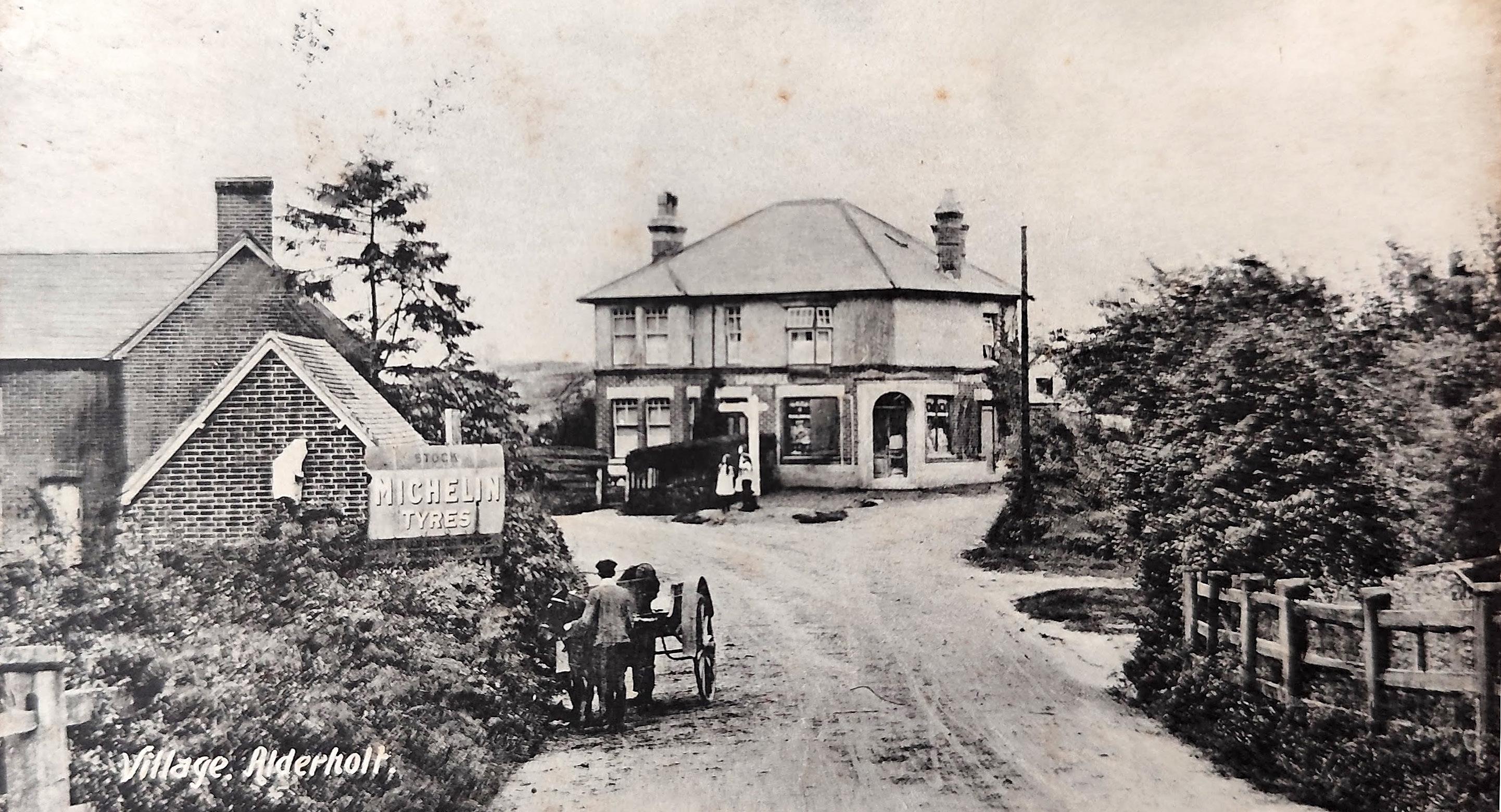
Sent on 8th April 1920 to Mr Fred Street in Boscombe. Maud’s suggestion of visiting a place which is ‘good for the nerves’ might at first glance be a humourous comment on the slow pace of life in Alderholt. But sent just a couple of years after the end of the first world war, it potentially takes on a different tone and more poignant meaning if Fred had survived time in the trenches:
‘Dear Fred – These shops are quite close to the station. Why don’t you come up one day – its good for the nerves here – have three people pass the house every day. Love from Maud
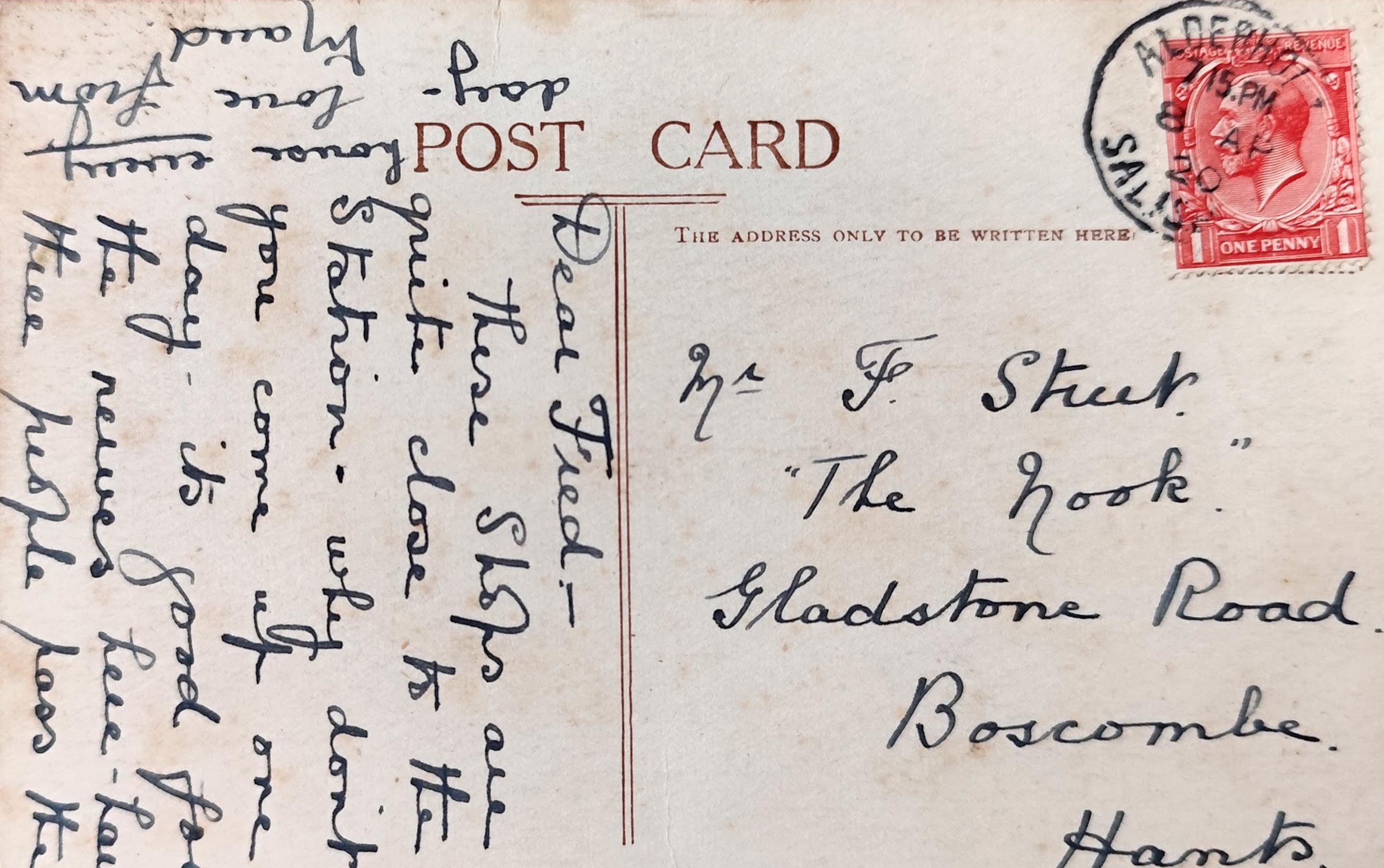

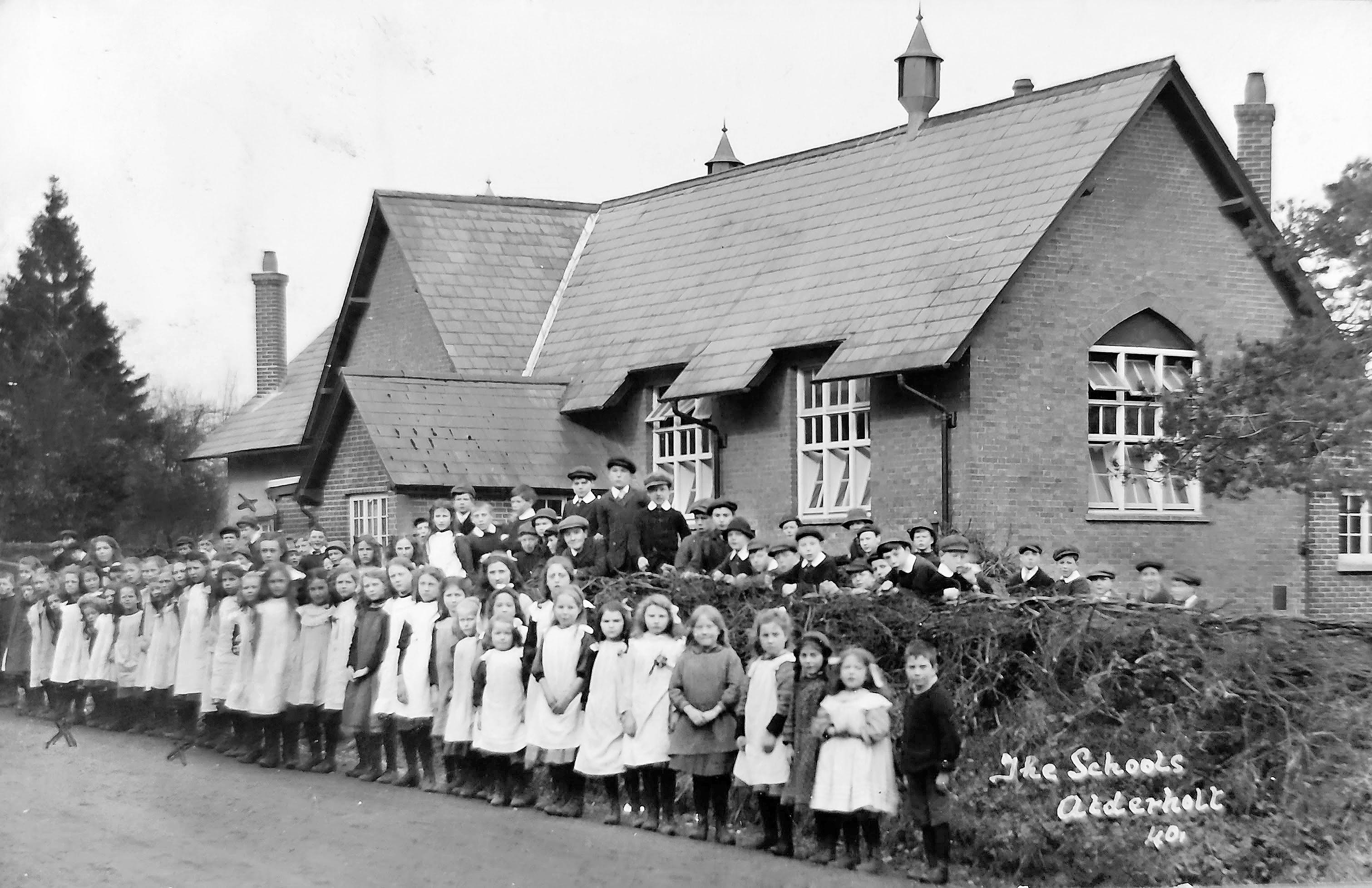
This one was quite a challenge to decipher – even the postmark is impossible to read! I have taken the liberty of adding some punctuation .... The three children mentioned have crosses, to the left of the picture. The card was sent to Thurloe Square in South Kensington – close to the Natural History Museum: Dear [I], Here is one for your album. Vais is plain. Ada is peeping through behind [her Thomas] if you don’t know her Flo will. Glad you had a nice time, just had a letter from Hat last. Hope you’ll soon be [m___ful], yes I’ll send you on what you mention the beginning of the week. Hope you’ll get this safely, will write a letter too at the same time. Annie’s time is getting near now. Much love from all, Martha. Am [fussy] Mrs M this tiff today, can’t stand it. No longer wonder how he’ll like it, will tell you in my letter. The boy is Georgie I’ve marked.


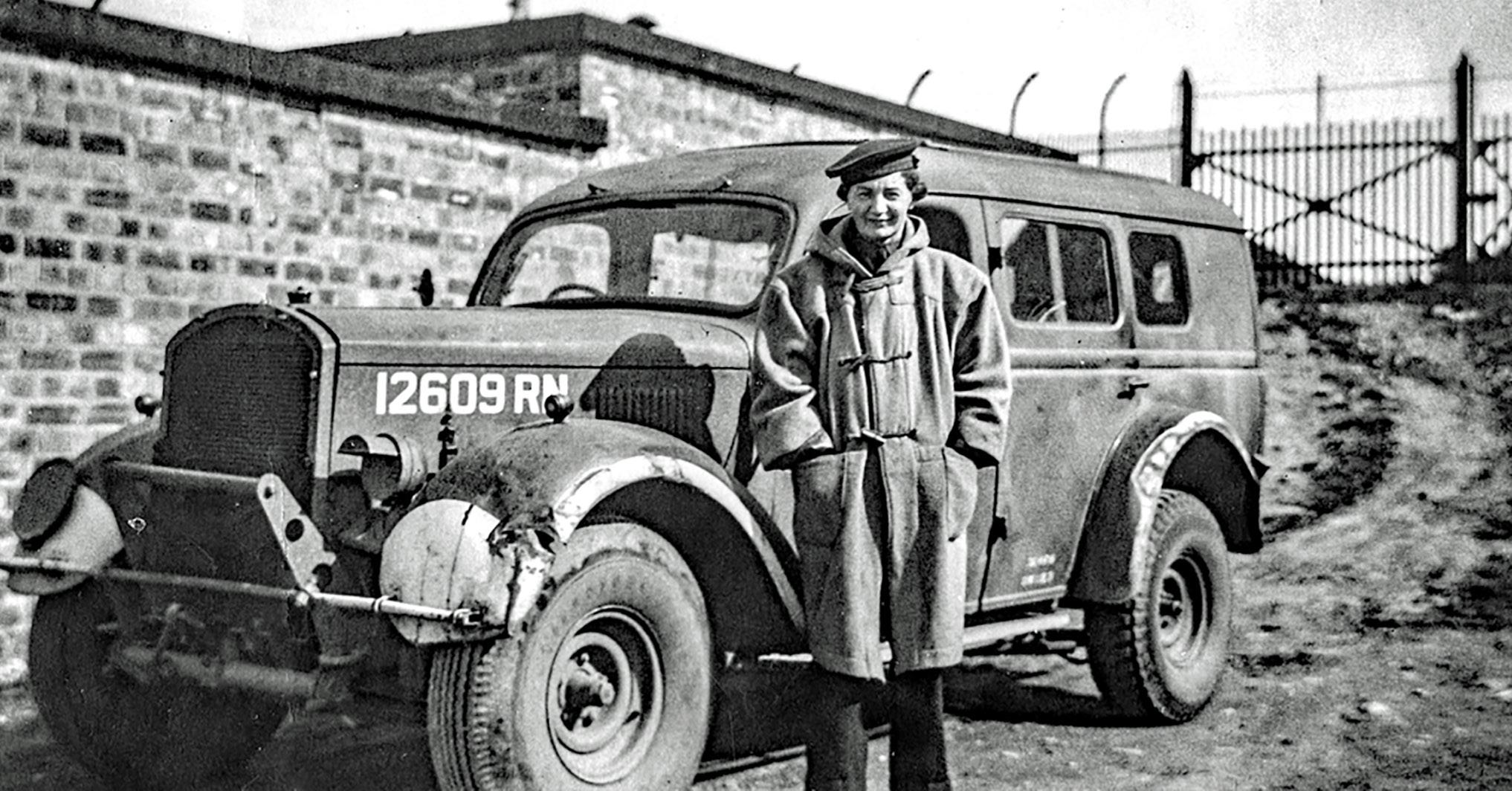
In recognition of International Women’s Day, it feels fitting to look back this month at MED’s founder – Hilda Coles was a woman ahead of her time. Born in 1907, she grew up in Wimborne, and was educated at the Wimborne High School for Girls in Allendale House during the First World War. She faced the usual societal constraints, but defied the gender norms of her time. At school she strongly disliked needlework, but excelled in sports, especially football and hockey – she continued to play with Wimborne Ladies’ Hockey Team for many years. Sometime during her schooldays – perhaps because of her great love of sport – Hilda earned the nickname Mick, which she remained for the rest of her life. After finishing school, Hilda joined her father, Tom Coles, in running the family’s ironmonger’s business. Though she didn’t enjoy shop work, she absorbed valuable business skills. In her spare time, she became interested in amateur dramatics and helped the


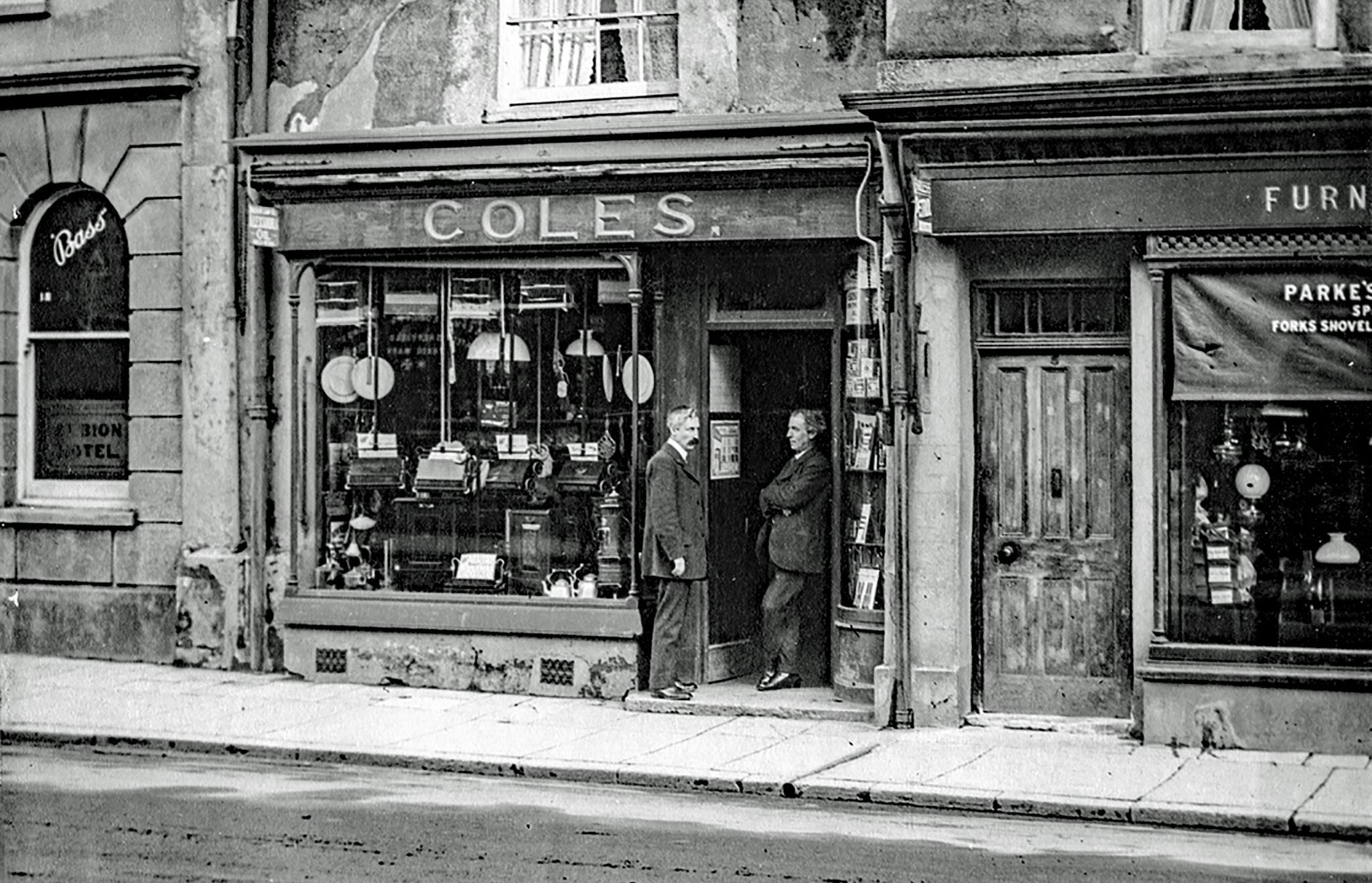

Women’s Institute productions behind the scenes, making props and painting scenery. Decades later, several people remembered a spectacular wind machine she had constructed for special effects.
With the outbreak of the second world war, Hilda enlisted in the Women’s Royal Naval Service (Wrens), and was posted to Invergordon in Scotland. Mechanically-minded and independent, she worked in motor transport, driving trucks and cars across the rugged landscapes of northern Scotland, a job she loved. Her service was recognised with commendations and a mention in dispatches. She was discharged in 1946 and much to her friends surprise she returned to Wimborne and the shop. Just like her father, Hilda was interested in the history of Wimborne and they began to collect objects, starting with the unsold stock from the ironmonger’s and stationer’s shops – the latter being the reason the museum has one of the country’s finest


collections of Victorian vinegar Valentines’ cards. Hilda was also a keen photographer, shooting the buildings and characters of Wimborne to keep a record for future generations.
Hilda inherited the ironmonger’s business 1953 following the death of her father. But instead of continuing in retail, she made a bold decision – one that would cement her place in Wimborne’s history. Seven years later, she permanently closed the shop
to fulfil her father’s long-held ambition of transforming the building, known as the Priest’s House, into a museum. Working closely with the Wimborne Historical Society, Hilda oversaw the creation of galleries initially in just three rooms on the ground floor, where she carefully curated the exhibits. Hilda’s vision was groundbreaking for the time – she saw the museum as ‘a centre of education and culture, and a place where children are welcome’ – an unusually



enlightened view for the early 1960s. The Museum of East Dorset officially opened on 31st July 1962.
For 25 years, Hilda managed the museum herself with the help of volunteers and support from the local community. Her business acumen, honed in her father’s shop, proved invaluable in
keeping the museum financially viable. She was known for her forthright personality, a trait that – while not always endearing – was instrumental in securing lasting support for the museum. When she passed away in 1987, Hilda left the museum and its beautiful garden to the governors of Wimborne Minster, ensuring its continued existence. She also provided an endowment income
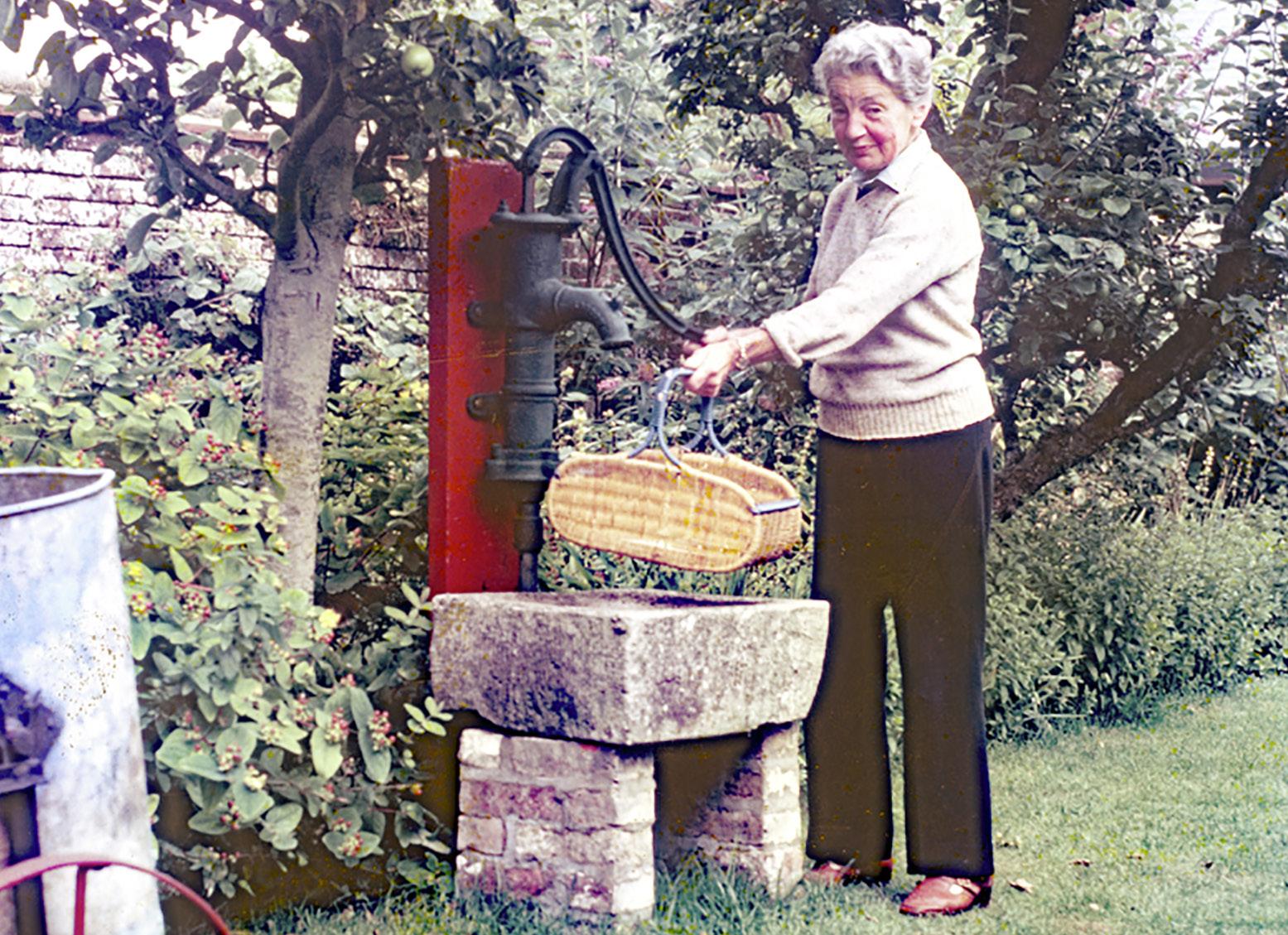
to support its future.
Today, the Museum of East Dorset stands as a testament to her dedication and vision, preserving the rich heritage of the area for generations to come. Her determination, resourcefulness, and passion for her community continue to inspire, reminding us that history is not just something to be remembered – it is something to be actively preserved and shared.
• Photographs supplied by Museum of East Dorset. Copies of photos from the museum’s extensive library are available to buy.
• If you have any photos, slides, negatives or film relating to East Dorset that you would like to loan for copying, or to donate to the museum archives, they would be delighted to receive them.
• For either of the above, please email photographs@ museumofeastdorset.co.uk

Step back in time with our ‘Then and Now’ feature, where vintage postcards from the Barry Cuff Collection meet modern-day reality. Explore the past and present on the same page, and see the evolution of familiar local places. ‘Now’ images by Courtenay Hitchcock
Paris House originally stood at the corner of High Street and Station Road (left of the picture). It was a three-storey specialist outfitters, drapers and milliners owned by the Pitman family (Thomas and George). Part of the building remains as the adjacent newsagents. The remainder was demolished to make way for the National Provincial Bank, below, which was later the town’s library.




Neither of the original postcards were posted, so we don’t have a date. However, the three-letter car number plates tell us that it is later than 1932.
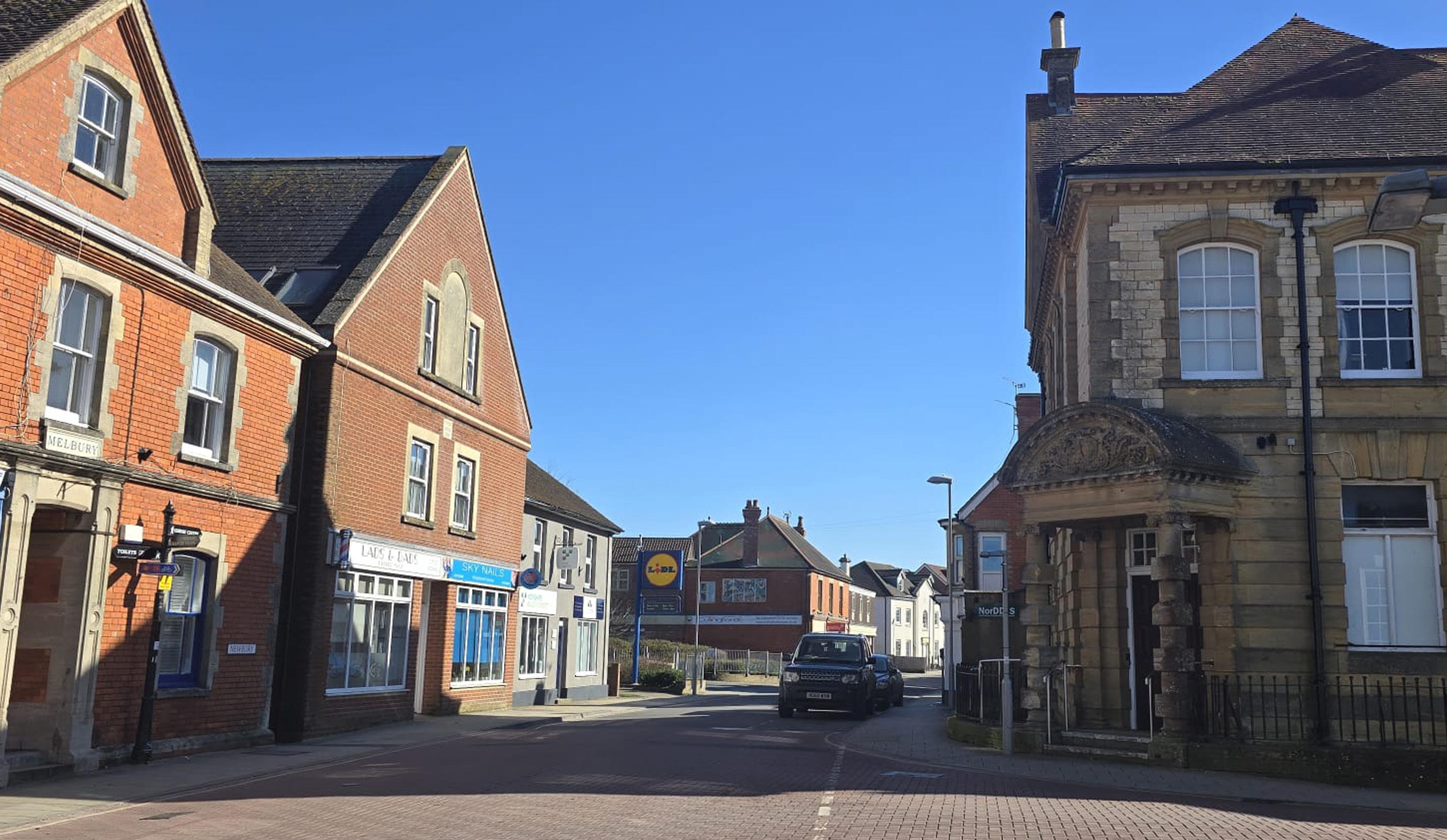
The bank, above, is Grade II Listed, built in 1900 to the designs of Sir George Oatley for the Stuckey Banking Company Ltd, a major West Country bank which at one time had a banknote circulation second only to the Bank of England. Stuckey’s was acquired by Parr’s Bank in 1909, which merged in 1919 with London County & Westminster Bank.

North Dorset CPRE’s Rupert Hardy looks at Major Gus March-Phillips, whose daring missions helped shape the modern Special Boat Service
Guy Ritchie’s latest film, The Ministry of Ungentlemanly Warfare, featured a little-known military hero from Dorset: Major Gus MarchPhillips. The film was based on the best-selling book of the same name by historian, war reporter and author Damien Lewis, a Dorset resident. As you’d expect, the film takes artistic liberties with the true events that inspired it.
Gus March-Phillips – under the auspices of Special Operations Executive (SOE) – was tasked with destroying part of Germany’s West African U-Boat re-supply operations in 1942. What was not clear from the film was the lasting significance of this Dorset man. He set up the Small Scale Raiding Force (SSRF), also known as 62 Commando, which was one of the precursors to today’s Special Boat Service, the Navy equivalent to the SAS.
Gus was a remarkable figure. After a brief career in the Royal Artillery in India – which he found rather boring – he based himself in Dorset, living in the family home in Blandford, trying to earn a living as a writer. He was keen on sport, especially riding and sailing. With the outbreak of the Second World War, he fought with distinction in the British Expeditionary Force, escaping from Dunkirk. Afterwards he determined to fight in a more unconventional manner than the British Army, which he felt had failed Britain so badly in 1940. Gus was one of the early recruits for the newly formed Special Operations Executive, SOE, tasked by the new Prime Minister, Winston Churchill, with taking the war to the enemy on the continent – to “set Europe ablaze”. The squad’s covert and ‘ungentlemanly’ tactics against the Nazis not only altered the course of the war but also laid the foundations for modern Black Ops units.
Operation Postmaster
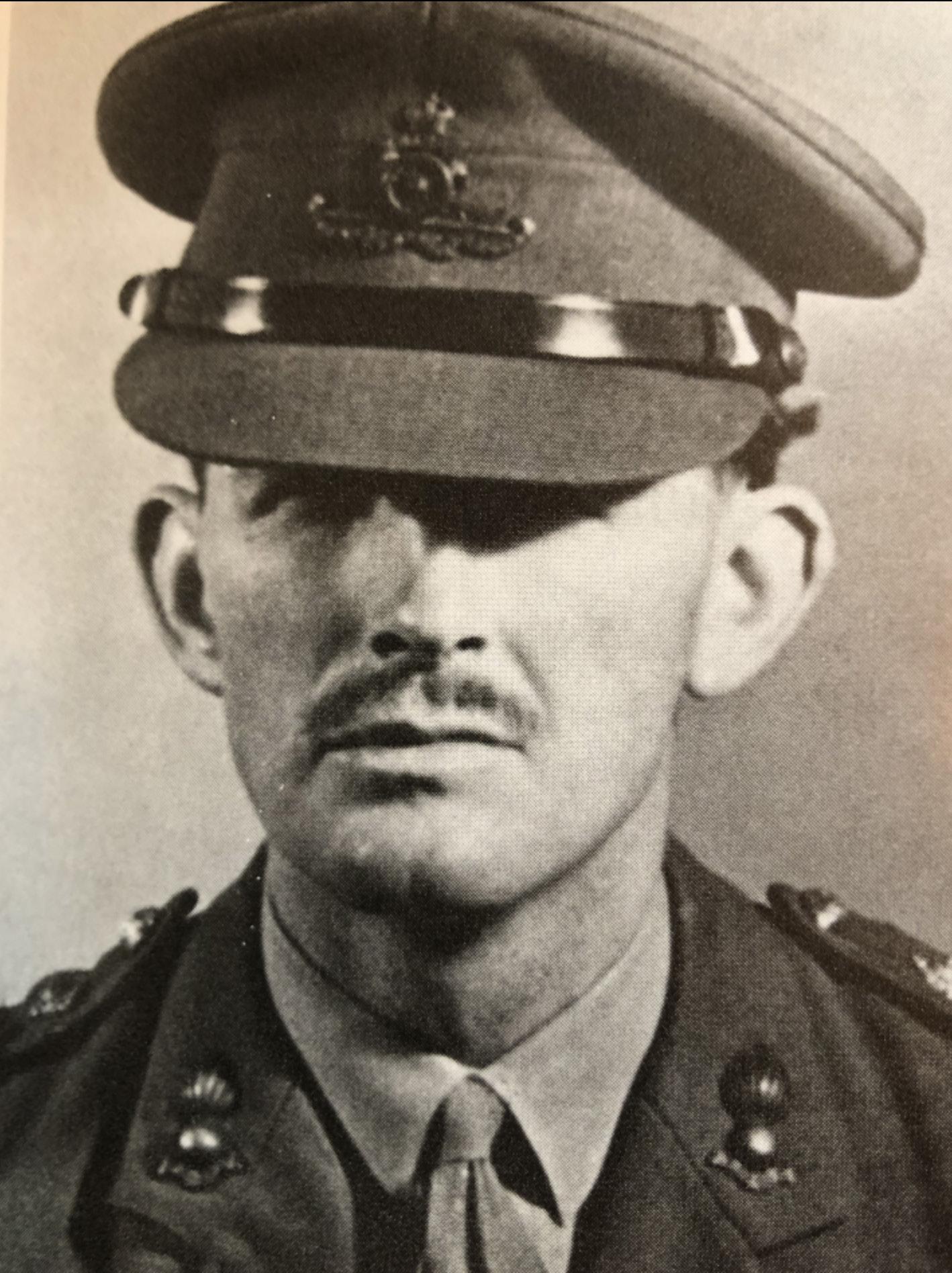
It was a huge success – a rare commodity in early 1942
SOE’s loose brief may have been in Europe, but its activities stretched far and wide. Gus was authorised to set up a small team of Commandos, Maid Honour Force, which trained at Poole harbour. In the summer of 1941, the war in North Africa was at a critical point. British forces relied on West African ports to receive vital aircraft and spare parts, but German U-boat attacks posed
a severe threat to these supply lines. Although officially neutral, Spain—under its neo-fascist leader General Franco—was known to favour Hitler. Intelligence reports suggested that the port of Santa Isabel, on the Spanish-controlled island of Fernando Po (now Bioko), was secretly being used as a refuelling and re-arming station for German submarines. Moored in the harbour were three key targets: the Duchessa d’Aosta, an 8,000-ton Italian merchant ship, the Likomba, a 200-ton German tugboat and the Bibundi, a motorised barge. The chances that any operation would go wrong were very high: and if it did, Spain’s neutrality would have been violated, prompting it to join the Axis powers of Germany and Italy in the war. It was all very risky – but the SSRF team successfully towed all three boats out of the harbour, having first overpowered the ships’ crews
without firing a shot. To ensure the German and Italian commanders were absent when the Maid Honour Force struck, a party was held on shore by undercover SOE agent Richard Lippett.
Operation Postmaster was a huge success – a rare occurrence in 1942. The exploit could have been part of a James Bond story, and might well have been the inspiration behind the Ian Fleming creation – it just so happened that Fleming was then a Naval Intelligence Commander and one of the planners of the top-secret mission.
Gus March-Phillips was awarded a DSO for his role in Operation Postmaster, and soon afterwards he married a fellow SOE agent, Marjorie Stewart.
He was now authorised to set up the SSRF, having found a suitably discreet base in Anderson Manor, deep in the Winterborne Valley near Blandford. The force carried out a series of successful raids into France, using a modified motor torpedo boat (MTB) – a fast, small, torpedo-armed ship designed for close-range attacks in shallow water – nicknamed The Little Pisser because of its outstanding turn of speed. The best known raid was that on the Casquets Lighthouse in the Channel Islands in September 1941, when the SSRF captured some German personnel and all their code books.
Gus asked his team, ‘What do you think chaps? Shall we have a bash?’
The success of these operations was attributed to diligent preparation, high fitness, excellent morale and speedy execution. However, later that month their luck changed: during Operation Aquatint, a navigational error meant they ended up on the wrong Normandy beach.

Anderson Manor is in the village of Anderson in the Winterborne valley

Gus asked his team ‘What do you think chaps? Shall we have a bash?’, but they were soon discovered by a German patrol. Half were captured, and three killed, including Gus. He was buried in St Laurent-sur Mer nearby. His death was a severe blow to SSRF, but they reformed and continued to raid France for another year.
Looking back, Gus was seen as an inspirational leader, able to motivate and delegate and known for extraordinary bravery. Marcus Binney, whose father served in SOE, said ‘he had the guts and derring-do to carry off great coups, as well as an engaging ability to admit his own fear to others. But while courage was his greatest attribute, it was also his undoing, for at times it veered into foolhardiness.’
Anderson Manor was used as the SOE base until the end of the war. The commandoes’ presence, however, continued to be felt afterwards. The current owner’s daughter, then aged three, casually told her parents about a man who stood several times in her room, decribing him as wearing what can be assumed was Commando attire. The ghost of one of those men? James Bond?
The most famous agent
There are no shortage of clues to tell us what inspired Ian Fleming. Gus worked for Brigadier Colin Gubbins, whose code name was M, after his middle initial. The Q Department of his Bond stories may relate to a day when Ian visited Maid Honour Force in Poole harbour: it was an adapted Brixham trawler, whose deck house could suddenly collapse to reveal a two pounder cannon. Gus had been an author and poet. His spy novel Ace High featured a hero called John Spake, who fitted well the James Bond mould. Had Gus survived the war would his own fictional character have been as well known as James Bond? Fleming went to school in Dorset too, at Durnford House. They were all Dorset heroes.
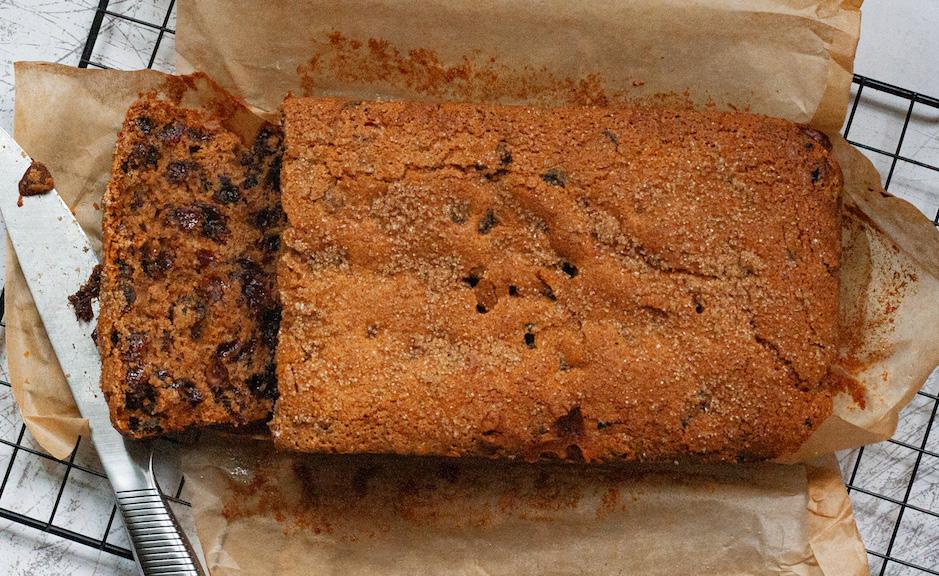
This simple and not-too-sweet loaf bake requires no fancy equipment – just a little time to steep the dried fruit before a nice slow bake. It’s the perfect way to use up dried fruit that’s still in the cupboard after Christmas, and it’s delicious with some salty butter (try Meggy Moo’s award winning butter, churned from the milk from their herd in Shroton) and maybe a little jam (for a delicious local one try From Dorset With Love, or you could make your own using my recipe from last September’s BV. I’ve also been told it goes really well with some strong cheddar or a little blue cheese.
• 350g dried fruit (your choice of sultanas, currants, raisins etc)
• 300ml boiling water
• 3 tea bags (English breakfast or Earl Grey work well)
• 200g soft brown sugar
• ½ tsp ground cinnamon
• 275g self-raising flour
• Zest from 1 lemon
• 1 egg
• Some demerara sugar to sprinkle on top
1. Steep the tea bags in the boiling water for at least 10 minutes, then discard the tea bags.
2. Pour the tea into a big bowl and mix in the soft brown sugar, cinnamon and the dried fruit. Stir well so the sugar dissolves and the fruit is covered. Leave for at least two hours (or overnight) for the fruit to soak up all those lovely flavours.
3. Pre-heat the oven to 130º fan (gas 3). Line a 2lb loaf tin (10cm x 21cm, 7cm deep) with baking parchment or a loaf tin liner.
4. Into the fruit and sugar mixture, mix the flour, lemon zest and the egg and stir until completely combined. Pour this mixture into the loaf tin and sprinkle the demerara sugar over the top.
5. Bake in the oven for 1 hour 15 minutes to 1 hour 30 minutes, until the skewer inserted into the centre of the cake comes out clean. Cool in the tin for 15 minutes and then turn out onto a wire rack to cool completely (I have to admit to never waiting long enough before impatiently cutting a slice and smothering the still-warm cake with butter ...)

Heather Brown is a special officer for the Guild of Food Writers, and has worked in the food industry for 20 years. She is a food writer and photographer, offering one-to-one help to local businesses for content and websites.
by Karen Geary, Nutritional Therapist DipION,

Social media has recently made your common old kitchen cooking oil a controversial choice – Expert Karen Geary looks at both sides
Against my better judgment, I’ve decided to enter the seed oil debate! If you’ve missed it so far, it’s been a hot online topic recently, attracting some extreme views from varioous experts. But nutrition is rarely black and white, and studies can be found to support almost any argument!
Last month, Professor Sarah Berry, the chief scientist at ZOE Ltd, shared her views on seed oils on a Zoe podcast, and rebuttals quickly followed. Rather than diving into the rather complex science, here’s a quick layman’s take on both sides (feel free to skip to the end if you just want my take and some practical advice!).
What are seed oils?
Seed oils are vegetable oils extracted from the seeds of plants such as rapeseed, soybean, sunflower, safflower and corn. They have been widely used since the rise of ultra-processed foods in the late 20th century. Some claim they support heart health, while others argue they are the equivalent of dietary demons and deeply harmful. Is there a clear verdict?
The case for ...
• Good for your heart
replacing saturated fats with PUFAs lowers “bad” cholesterol, a key marker for heart disease risk. Professor Berry emphasises that studies don’t consistently show omega-6 intake as pro-inflammatory: while they can contribute to inflammation, they also generate anti-inflammatory mediators. Some research even suggests increased PUFA intake correlates with a lower risk of cardiovascular disease.
• Essential fatty acids
It’s rarely black and white –studies can be found to support almost any argument!
Seed oils provide linoleic acid, an essential omega-6 fat the body cannot make. Rather than eliminating omega-6, Professor Berry suggests ensuring enough omega-3 (from flaxseeds, walnuts, and omega-3 supplements) in order to maintain balance.
• Affordability and versatility
Seed oils are cheap, widely available and have a high smoke point, making them convenient for cooking.
• Processing and stability
Berry also notes that refining simply removes impurities rather than introducing harmful substances.
However, some oils degrade at high temperatures, forming oxidation by-products, so choosing the right oil for the right cooking method matters.
Mainstream nutrition bodies are fans of seed oils due to their high polyunsaturated fat (PUFA) content, particularly omega-6. Studies suggest
The Case Against ...
• The Omega-6 to Omega-3 imbalance
Critics like Dr. Zoë Harcombe argue that modern
diets contain excessive omega-6 due to seed oil prevalence in processed foods. Historically, omega-6 and omega-3 were consumed in balance, but today’s intake skews toward omega-6, which some link to chronic inflammation, a driver of heart disease and obesity.
• Oxidation and processing
Refined seed oils undergo high heat and chemical treatments. Critics argue this process alters their structure, leading to oxidation by-products like aldehydes – linked to stress and aging. The refining process often includes colour modification and deodorisation due to rancidity.
• Questionable data
Nutritional epidemiology relies on self-reported dietary data, which can be inaccurate. Critics point out that factors such as genetics and lifestyle can make it difficult to reach clear conclusions.
• Industry influence
butter), lard or tallow also work in moderation (smoke points 180-250°C).
So, what’s the verdict?
The simple answer is - there’s no simple answer! While mainstream bodies support seed oils for cholesterol reduction (a debate in itself), critics raise concerns about oxidation, inflammation, and industry bias. Since seed oils are in many ultra-processed foods, their effects can be hard to isolate. For a balanced approach in your own diet, my personal advice is:
I eat butter, not spreads – because I prefer to know what’s in it
Some compare the current seed oils argument to the old trans fats debate: once marketed as healthy but later linked to disease. They argue industry influence could be unduly shaping public recommendations. Seed oils are cheap, have high smoke points, and are widely used in processed foods, making them the most profitable to use by lareg manufacturers.
Refined vs. Cold-Pressed
Not all seed oils are equal!
• Refined seed oils are processed with heat and solvents, leading to oxidation risks and nutrient loss. These are the ones common in cheap ultra-processed foods.
• Cold-pressed (unrefined) oils are extracted mechanically at lower temperatures, preserving nutrients and antioxidants. But this comes with a shorter shelf life – these are best for dressings or low-heat cooking.
If you want to minimise risk, opt for cold-pressed, unrefined oils when possible. For high-heat cooking, the better plant-based options include avocado oil or coconut oil (which have smoke points of 230-
• Prioritise whole-food fats – choose nuts, seeds, avocado and olives over processed oils.
• Use minimally processed oils – extra virgin olive oil and avocado oil have lower oxidation risks. Olive oil is fine for gentle cooking (~190°C), while butter is best for low-heat cooking (~150°C).
• Balance your omegas: get your omega-3 from flaxseeds, walnuts and oily fish like sardines, mackerel, and salmon.
• Be mindful of processed foods as many contain refined seed oils.
• Opt for cold-pressed oils in dressings (and sparingly, due to their cost!).
I cook with avocado oil, ghee and olive oil. For dressings I use extra virgin olive oil for its health benefits. Very occasionally I use cold-pressed oils like sesame, walnut and flaxseed in a dressing. I eat butter, not spreads, because I prefer to know what’s in it.
And yes, I enjoy chips when dining out (they are usually fried in sunflower) – without guilt! But I do notice some after-effects.
Seed oils are neither saints nor villains – their impact depends on your overall diet quality, their processing and balance with other fats.
If you want to dig deeper, the fully referenced links below provide both arguments.
• Dr. Sarah Berry (pro-seed oil perspective)

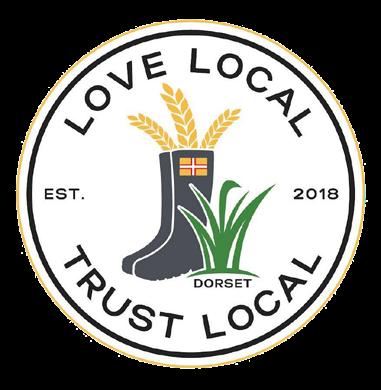

The first of the Love Local, Trust Local 2025 social networking events was held on the evening of the 26th February, and a great evening was had by all!
The BV’s own Laura and Courtenay came and gave a presentation on using social media and the importance of it for business (whether we love or hate it!). Everybody that attended the evening took something away with them. It was terrific to see businesses meeting, talking and then
sharing contact details –this is why these sorts of evenings are so important. We managed to connect a number of businesses that otherwise wouldn’t have met, who hopefully will go on and work together.
Laura explained the importance of choosing the right social media platform for your own business, whether it be Facebook, Instagram or LinkedIn. She also helped attendees understand how to find their brand voice, to think

about who they are talking to – and what business content might look like for them. Another evening on social media will be arranged later in the year – it’s such a vital part of any modern business, it’s a free tool, and yet so many of the businesses we talk to can struggle with it.
The next networking evening is set for 10th April from 7pm, when Blanchards Bailey Solicitors will be coming to The Langton Arms to give an employment seminar on a range of important topics from the Employment Rights Bill to minimum wage increases.
All food & drink businesses are welcome – please do book in and let us know you are coming. It will be a really important evening with all the new regulations coming in, and you can get answers to questions you may have.
Barbara Cossins Love Local Trust Local

Caring for local families for generations.
Whether your planning ahead with a funeral plan or when a loved one passes away, end-of-life care needs to be dependable, compassionate and ethical. With decades of experience, our trusted funeral services are available whenever you need us on 0800 008 6878. Local to you in:




I t w a s o n e o f t h o s e
M a r c h d a y s w h e n t h e
s u n s h i n e s h o t a n d t h e
w i n d b l o w s c o l d :
w h e n i t i s s u m m e r i n
t h e l i g h t , a n d w i n t e r
i n t h e s h a d e .
– Charles Dickens
G
D o y o u t h i n k a l o c a l ( o r y o u r
o w n ) b u s i n e s s w o u l d m a k e a
g o o d p r o f i l e f e a t u r e ?
K n o w s o m e o n e d o i n g g o o d
t h i n g s t h a t w e s h o u l d t a l k a b o u t ?
S e n d a q u i c k e m a i l t o L a u r a :
e d i t o r @ B V m a g a z i n e . c o . u k
G e t i n t o u c h w i t h C o u r t e n a y t o c h a t
a b o u t w h a t y o u ' r e l o o k i n g f o r - w e ’ r e
a l w a y s k e e n t o t a l k t o l o c a l b u s i n e s s e s
l o o k i n g f o r n e w w a y s t o b u i l d t h e i r
p r o f i l e a n d r e a c h :
a d v e r t i s i n g @ B V m a g a z i n e . c o . u k
0 1 2 5 8 4 7 2 5 7 2
N e x t P u b l i c a t i o n D a t e :
4 t h A p r i l
( d e a d l i n e 2 8 t h M a r c h )
T h e B V p u b l i s h e s o n t h e f i r s t F r i d a y o f t h e
m o n t h , a n d t h e a d v e r t i s i n g b o o k i n g d e a d l i n e i s
a l w a y s t h e F r i d a y p r i o r t o p u b l i s h i n g
